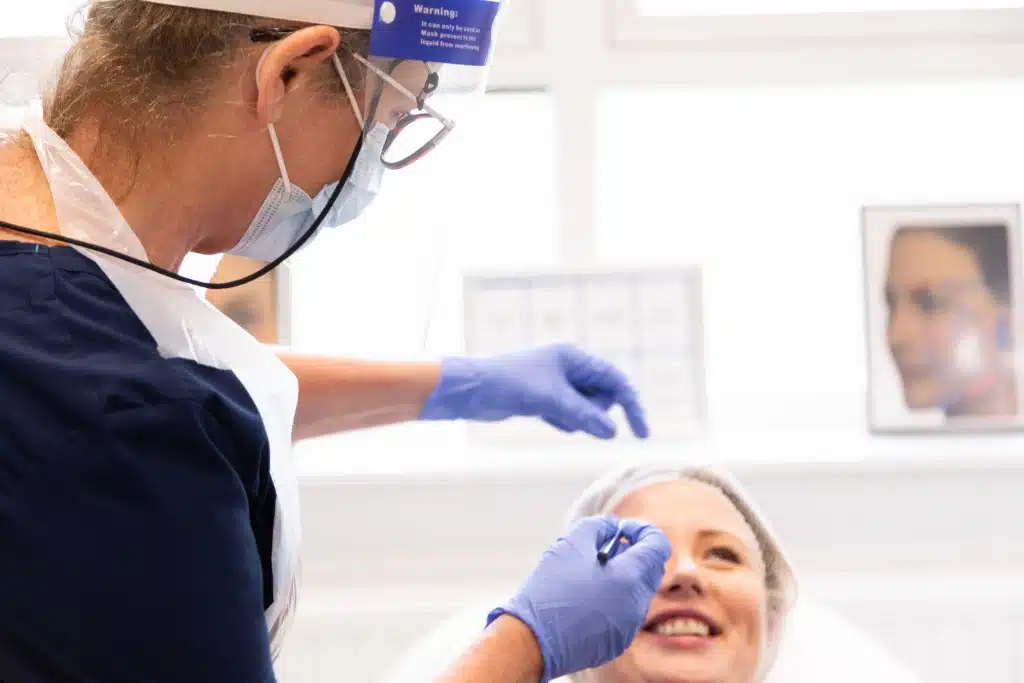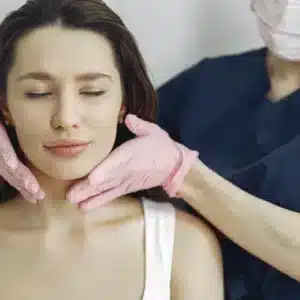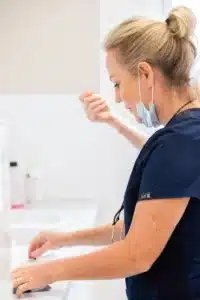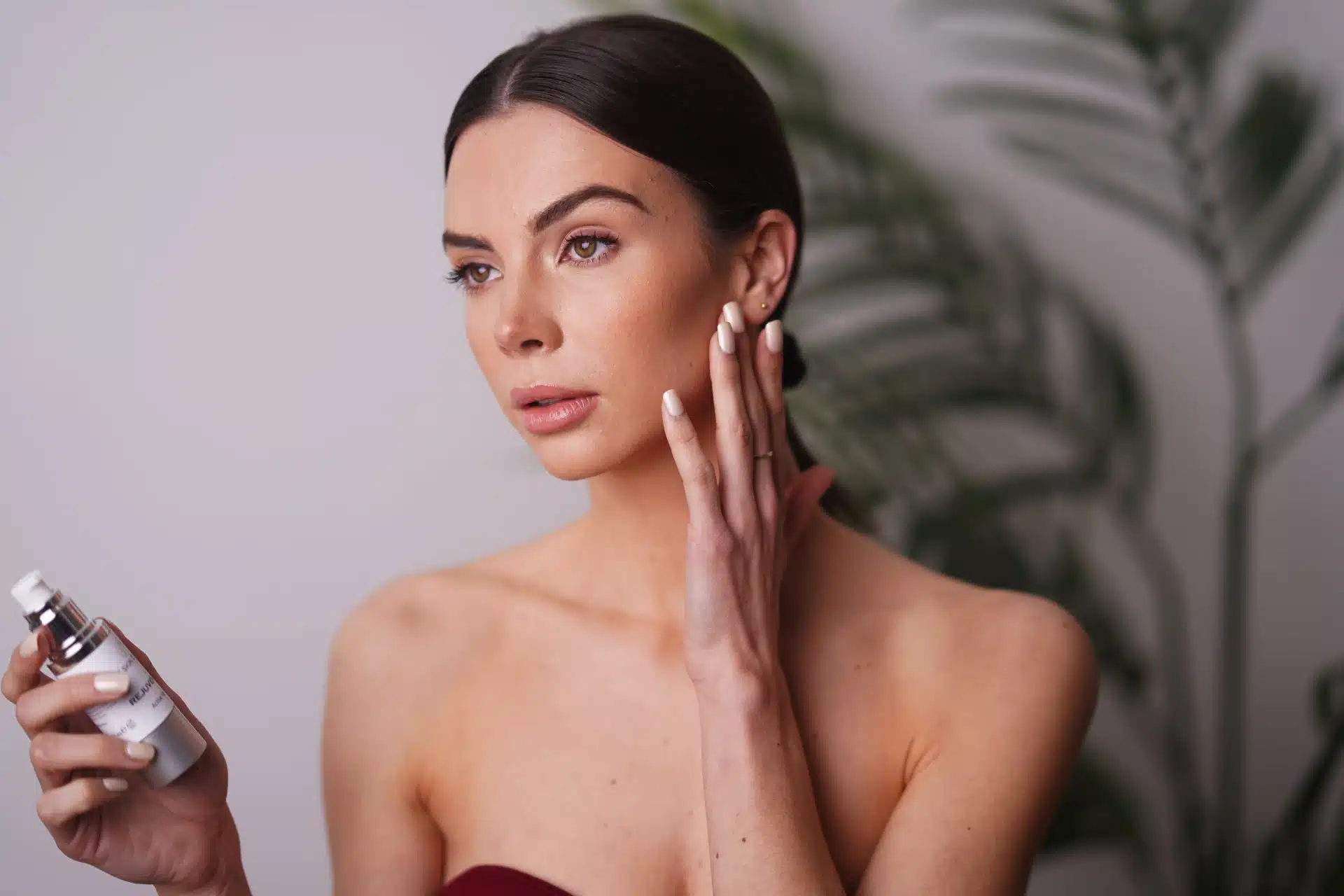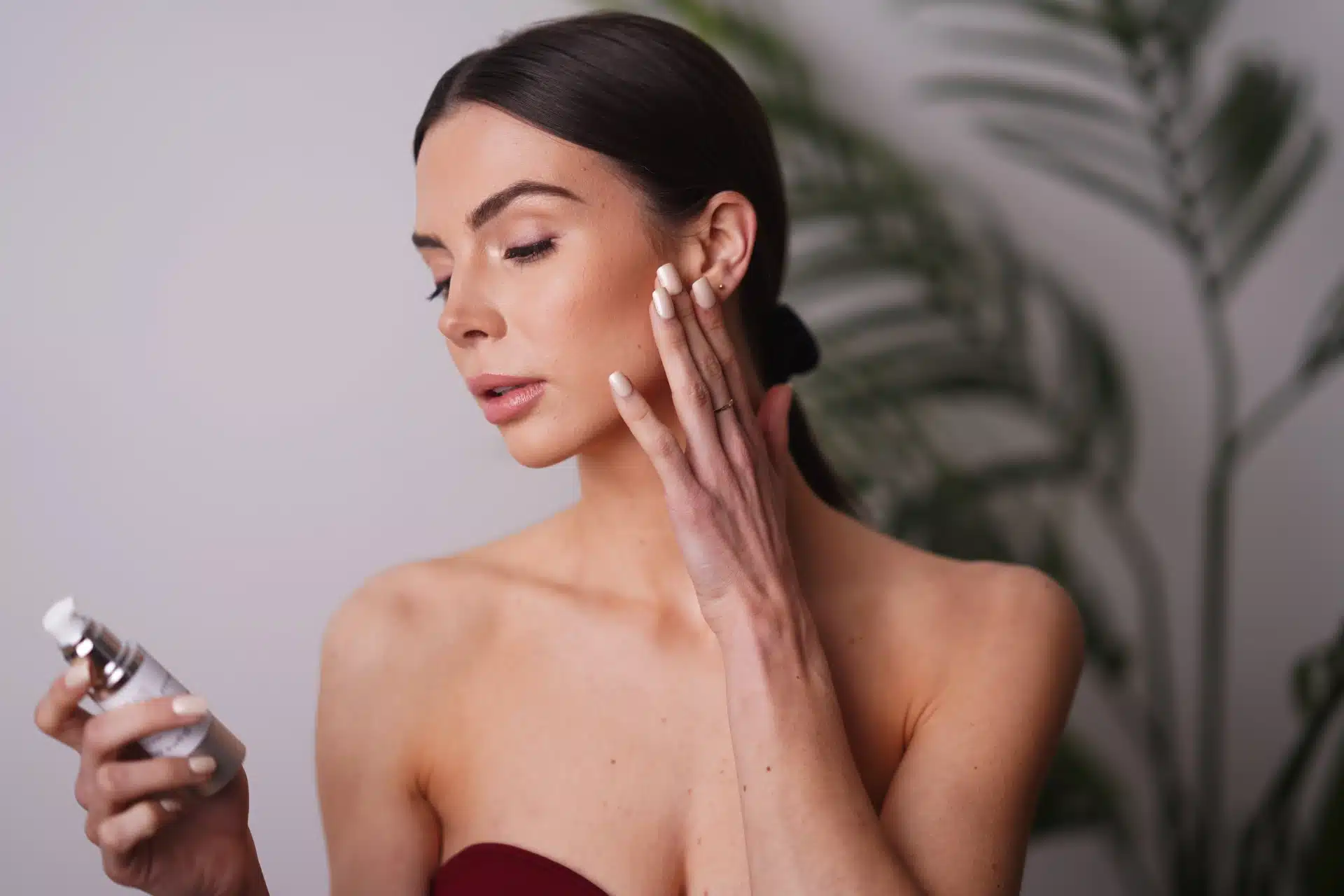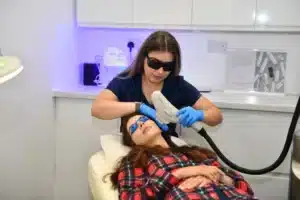Double Chin
What is a Double Chin?
A double chin, also known as submental fat, is a common condition that occurs when a layer of fat forms below the chin. It is often associated with weight gain, but you don’t have to be overweight to have one.
Double Chin
A double chin, medically known as submental fullness, is a common condition characterized by an extra layer of fat forming beneath the lower jaw and chin. This appearance can create a noticeable bulge or fullness that might look like a second chin. Although often associated with weight gain, not everyone with a double chin is overweight; it can also result from genetics, aging, and even posture.

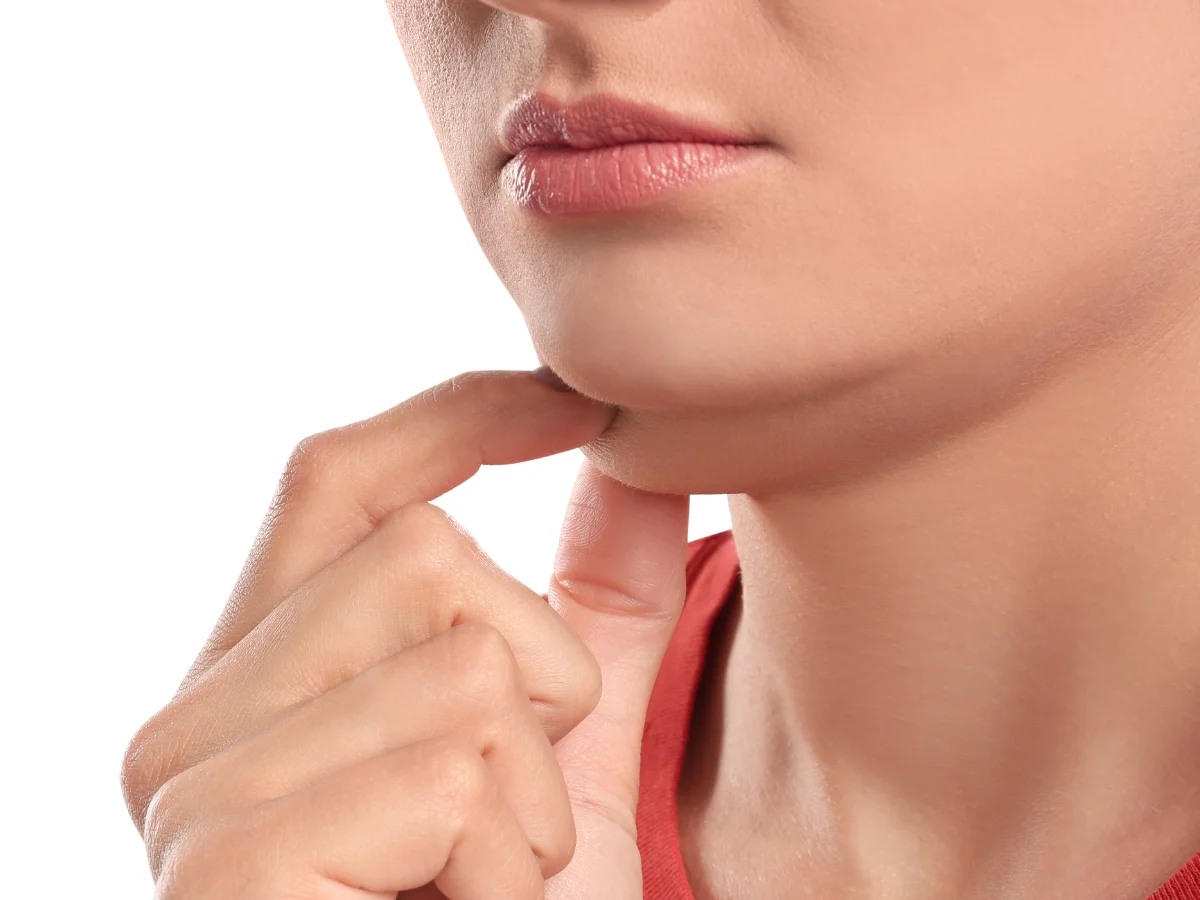
Are you affected?
As people age, skin elasticity decreases, and muscles in the neck and chin area may lose their definition, contributing to the formation of a double chin. Genetics can also play a significant role, as some people are predisposed to having more fat deposits in this area, regardless of their body weight. Additionally, poor posture that leads to weakened neck and chin muscles can exacerbate the prominence of a double chin over time. Various treatments and techniques can help reduce the appearance of a double chin. These range from exercises aimed at strengthening the neck and jaw muscles to more clinical interventions such as liposuction, laser treatments, or fat-dissolving injectables. Each option varies in effectiveness and may depend on the underlying cause of your double chin.
Causes
A double chin can be caused by several factors, each contributing to the accumulation of fat and changes in skin elasticity beneath the chin and around the neck. Here are the main causes:
Weight Gain: Perhaps the most straightforward cause, an increase in body weight often leads to fat accumulation in various parts of the body, including under the chin. This additional fat can result in the appearance of a double chin.
Aging: As you age, your skin loses collagen and elastin, proteins that provide firmness and elasticity. This natural loss leads to sagging skin, including the area under the jawline, contributing to the formation of a double chin.
Genetics: Your genetic makeup can play a significant role in determining whether you are likely to develop a double chin. If your family has a history of skin with less elasticity or a tendency to develop more fat below the jawline, you might be predisposed to having a double chin.
Posture: Poor posture can exacerbate the development of a double chin. Slouching or leaning over for prolonged periods can weaken the neck and chin muscles, reducing their ability to hold the skin tightly in place, which contributes to the sagging appearance.
Diet and Lifestyle: An unhealthy diet rich in calories, processed foods, and unhealthy fats can lead to overall weight gain and the accumulation of fat under the chin. Additionally, a sedentary lifestyle without adequate exercise can contribute to the problem by not supporting muscle tone in the neck and chin area.

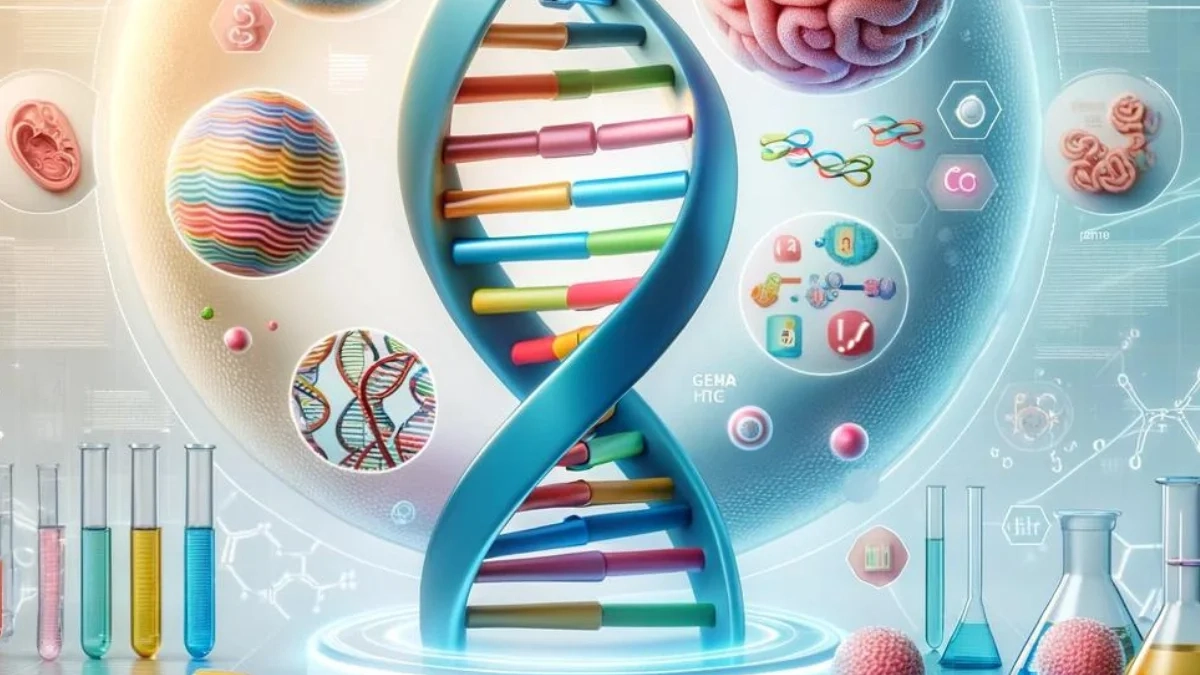
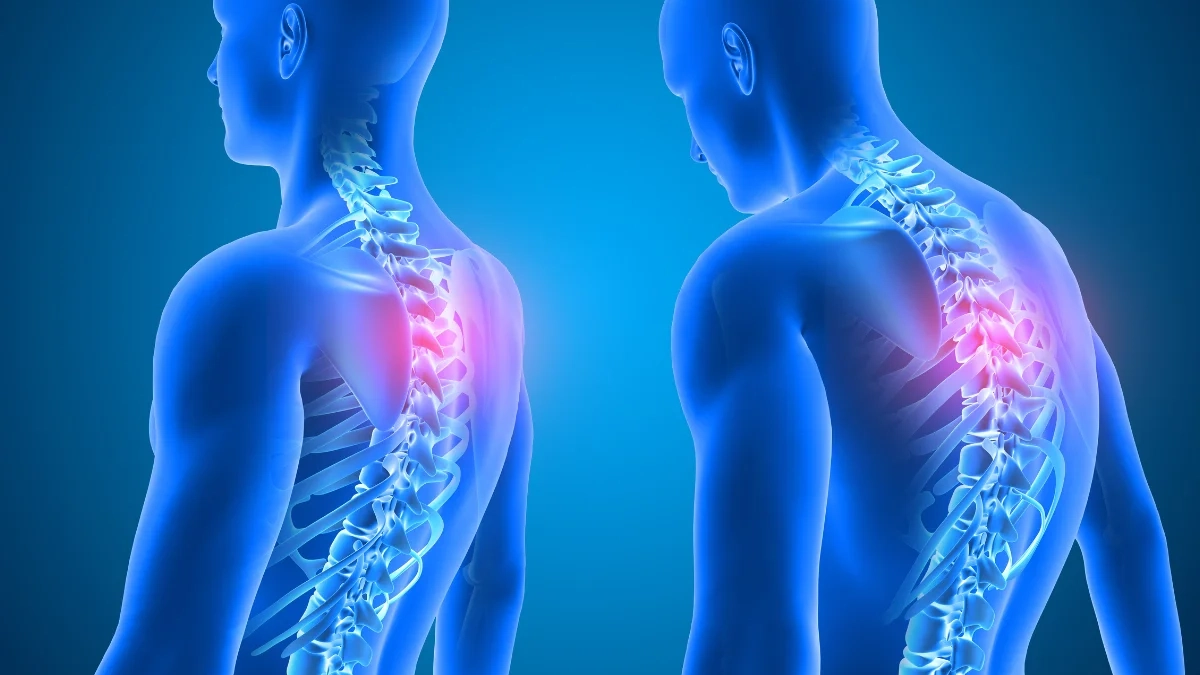
Identifying Characteristics of Double Chin
Visible Fullness Under the Chin: This is the most apparent sign, where excess fat accumulates directly beneath the chin, creating a fuller, rounder contour that resembles a second chin.
Soft Texture: The area under the chin may feel softer and more pliable due to the extra fat and possibly looser skin, distinct from the firmer texture of surrounding areas.
Sagging Appearance: As skin elasticity decreases with age, or due to genetics, the skin under the jaw may sag, exacerbating the look of a double chin.
Skin Folds: Depending on the amount of fat and skin laxity, one or more horizontal creases or folds may develop under the chin, which can be more visible when the head is tilted down or when speaking and eating.
Altered Jawline Definition: A double chin can blur the natural contour of the jawline, making it appear less defined. This change can affect facial symmetry and aesthetics, often a cosmetic concern for those affected.
Impact on Facial Profile: From a side view, a double chin can make the lower face appear heavier and less balanced with the upper face, impacting one’s overall facial profile.
Frequently Asked Questions
What causes a double chin?
A double chin can result from several factors, including weight gain, genetic predisposition, aging which reduces skin elasticity, and poor posture that weakens neck muscles.
Is a double chin only caused by being overweight?
No, while weight gain can contribute to the development of a double chin, factors like genetics and aging can also play significant roles, affecting even individuals who are not overweight.
Can exercises reduce a double chin?
Certain exercises aimed at strengthening the neck and chin muscles can help improve the appearance of a double chin by toning the area. However, these exercises are more effective when combined with overall weight reduction and healthy lifestyle choices.
Are there non-surgical treatments to reduce a double chin?
Yes, there are several non-surgical options available, such as fat-dissolving injections (e.g., Kybella), laser treatments, and radiofrequency therapies that target and reduce fat under the chin.
How does Kybella work?
Kybella is an injectable treatment that uses deoxycholic acid to break down fat cells under the chin area. Once destroyed, these fat cells can no longer store or accumulate fat, leading to a noticeable reduction in fullness.
What is the recovery time for double chin treatments?
Recovery times vary depending on the treatment. Non-invasive procedures like Kybella might have minimal downtime, whereas surgical options like liposuction could require a few days of recovery.
Can a double chin return after treatment?
After fat cells are removed via treatments like Kybella or liposuction, they cannot regrow, and the double chin should not return. However, if significant weight is gained after the treatment, it is possible for new fat to accumulate in the area.
Is double chin treatment painful?
The discomfort level can vary depending on the treatment. Non-surgical treatments might involve mild discomfort and swelling, whereas surgical options might involve more pain and require pain management during recovery.
Who is a good candidate for double chin treatment?
Good candidates are typically those who have moderate to severe fat under the chin, good skin elasticity, and who are not significantly overweight. It is also important for candidates to have realistic expectations about the outcomes of the treatment.
How many treatments will I need to see results?
The number of treatments required can vary based on the method used and the individual’s specific condition. Non-surgical treatments like Kybella may require multiple sessions, whereas surgical options typically involve one procedure.
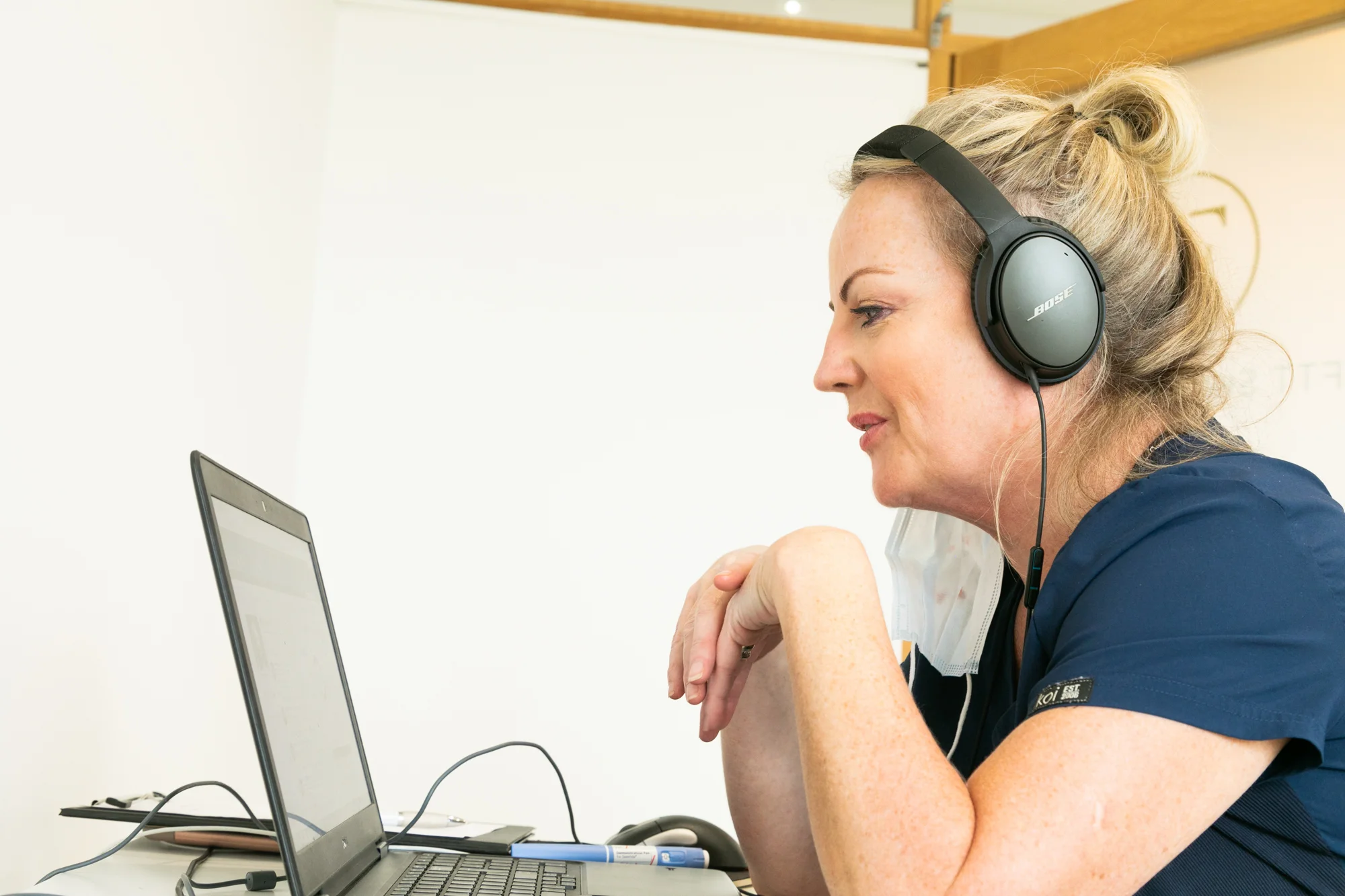
Double Chin Myths
Only overweight people get double chins.
While excess weight can contribute to the appearance of a double chin due to increased fat deposits, other factors such as genetics, aging, and even posture can lead to a double chin in individuals who are not overweight. People with a family history of double chins or weaker jawlines are more susceptible regardless of their body weight.
Double chins can be eliminated through diet alone.
Although a healthy diet can help reduce overall body fat, it may not specifically target the fat under the chin. The fat in this area can be particularly stubborn, and while weight loss can reduce its appearance, other treatments may be necessary for significant changes.
Surgical procedures are the only way to remove a double chin.
Surgical options like liposuction are effective for removing a double chin, but there are also several non-surgical treatments available. Techniques such as Kybella, which involves injections that dissolve fat, and radiofrequency or ultrasound therapies can also effectively reduce submental fullness without the need for surgery.
Exercises for the neck and chin can completely get rid of a double chin.
Neck and chin exercises can help strengthen and tone the muscles around the jawline, potentially improving the appearance of a double chin. However, they cannot remove fat or significantly tighten skin, so their effectiveness is limited and they work best when combined with other treatments.
Double chins are purely a cosmetic issue.
While double chins are often seen as a cosmetic concern, they can also impact self-esteem and body image, leading to psychological distress. Therefore, addressing a double chin can have both aesthetic and emotional benefits.
Once treated, a double chin will never return.
The permanence of double chin treatments depends on the method used and lifestyle factors following treatment. Procedures that physically remove fat cells, such as liposuction or Kybella, mean those cells will not return. However, if a person gains a significant amount of weight after treatment, new fat cells can develop in the area, potentially leading to the reappearance of a double chin.
How Can We Help?
Fat Dissolving injections at FTT are a non-surgical solution to minimise and remove stubborn localised pockets of fat. It is ideal for those who exercise regularly and maintain a healthy diet but have pockets of fat that won’t shift, even with focused exercise.
Fat dissolving injections, commonly known as Kybella in the U.S. or Aqualyx in Europe, use a synthetic form of deoxycholic acid, a naturally occurring substance in the body that helps break down and absorb dietary fat. When injected into the fat beneath the chin, this solution destroys fat cells, which are then naturally eliminated by the body over the following weeks. This process results in a noticeable reduction in fullness under the chin, creating a more defined jawline.
We use Aqualyx® or DesoFace® for double chins and Aqualyx® or DesoBody® for your body. Both destroy fat cells. Destroying the fat cells is a long-term solution provided you retain a stable weight, eat healthily and continue exercise as usual.
Benefits of Fat Dissolving Injections for Double Chin at FTT Skin Clinics:
Targeted Treatment: Our expert clinicians carefully target the specific areas under the chin where fat accumulates, ensuring precise application for optimal results.
Minimally Invasive: Unlike surgical options like liposuction, fat dissolving injections require no incisions, which means no scars and a lower risk of complications.
Minimal Downtime: The procedure involves little to no downtime, allowing patients to return to their daily activities almost immediately after treatment.
Long-Lasting Results: Once the fat cells are destroyed, they cannot regenerate. This leads to long-lasting improvements, provided the patient maintains a stable weight and healthy lifestyle.
Improved Profile and Confidence: Reducing a double chin can dramatically change one’s profile and improve overall facial aesthetics, boosting self-confidence and satisfaction with one’s appearance.
Customizable Treatment Plans: At FTT Skin Clinics, we understand that each patient’s needs are unique. We offer tailored treatment plans based on the amount of fat under the chin and the desired aesthetic goals.
It is important to note that Fat Dissolving is not a weight loss programme. Treatments with are only applicable for small, localised areas. patients must be within one stone of their recommended body weight to have treatment and be able to pinch about 3cm of fat.
Treatment Time
30 Minutes
Visible Results
1 Week
Full Recovery
7 Days
Duration
Treatment Plan
Sensitivity Time
48 Hours
Anaesthetic
Local Injection
Back to Work
24 Hours
No. of Treatments
Treatment Plan
HIFU uses focused ultrasound energy to target the deeper layers of the skin, encouraging collagen production and providing a firmer, more youthful appearance without the need for surgery.
At FTT Skin Clinics, High-Intensity Focused Ultrasound (HIFU) is a cutting-edge, non-surgical treatment option specifically designed for reducing the appearance of a double chin. HIFU uses ultrasound energy to target and tighten the skin, as well as reduce fat in the submental (under-chin) area. This treatment offers a non-invasive alternative to more invasive procedures, providing noticeable contouring and aesthetic improvement with minimal downtime.
Targeted Ultrasound Energy: HIFU technology focuses ultrasound energy precisely to the subdermal layer, heating the tissue at specific depths beneath the skin without damaging the surface. This targeted energy initiates the body’s natural response to stimulate the growth of fresh, new collagen and strengthen existing collagen.
Fat Reduction: Besides its skin-tightening effects, HIFU can also target and reduce the fat cells under the chin. The thermal effect of the ultrasound energy disrupts fat cells, which are then gradually removed by the body’s natural metabolic processes, leading to a reduction in fat under the chin.
Lifting and Tightening: As collagen fibers are rejuvenated and strengthened, there is a noticeable lifting and tightening effect. This helps to redefine the jawline and reduce the sagging associated with a double chin, leading to a more youthful and contoured profile.
Non-Invasive with No Downtime: HIFU is performed without any cuts or incisions, and there is no downtime required after the treatment. Patients can immediately return to their daily routines with no need for a recovery period.
Long-Lasting Results: Results from HIFU can continue to improve over several months as the body produces new collagen. The lifting and tightening effects can last for up to a year or more, depending on the individual’s skin condition and lifestyle.
Safe and Effective: HIFU has been proven safe and effective for various cosmetic treatments, including double chin reduction. It provides a significant aesthetic improvement without the risks associated with surgical interventions.
For those looking for a non-surgical solution to reduce a double chin, HIFU offers a promising option. It combines skin tightening and fat reduction in a single treatment, enhancing facial contours and improving overall appearance with lasting results. FTT Skin Clinics is dedicated to providing advanced, personalized care, ensuring that each patient achieves their desired outcomes with the highest standards of safety and efficacy.
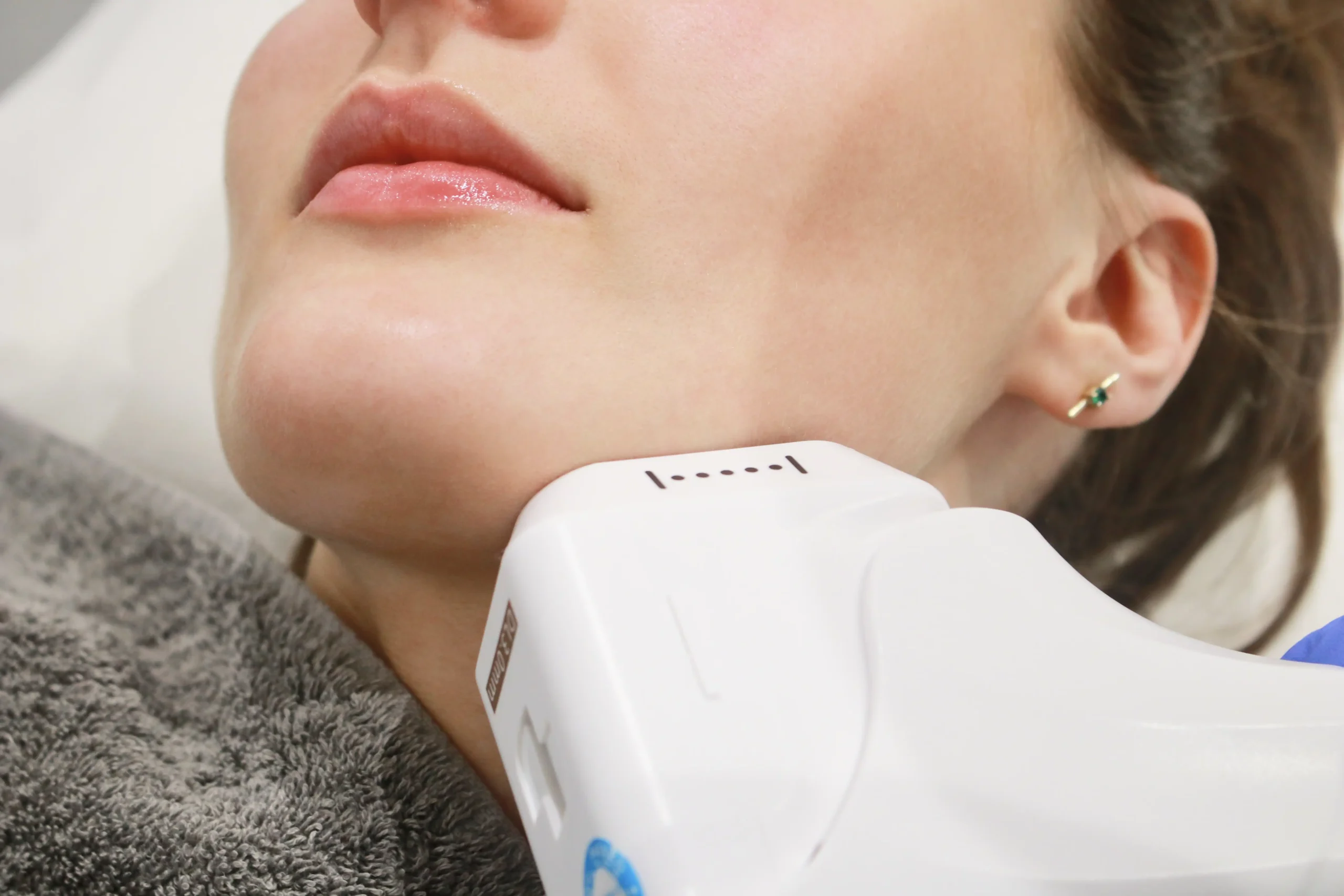
Treatment Time
30 Minutes
Visible Results
-
Full Recovery
-
Duration
Treatment Plan
Sensitivity Time
-
Anaesthetic
Not Avaliable
Back to Work
Straight Away
No. of Treatments
Every 3 Months
Exilis is a non-invasive, FDA-approved treatment that uses radiofrequency (RF) technology to contour and slim the face, particularly effective in treating a double chin.
Exilis employs controlled heating and cooling to deliver energy to various depths in the tissue. For double chin treatment, the device targets the submental area (underneath the chin), where it heats the fat cells to a precise temperature that causes them to disintegrate and die, without damaging the surrounding tissue or the skin surface.
Beyond fat reduction, the heat from the Exilis treatment stimulates collagen production within the skin. Increased collagen leads to more skin elasticity and firmness, which helps to tighten any laxity in the chin area that often accompanies fat reduction, thus enhancing the contour and appearance of the jawline.
One of the significant advantages of Exilis is that it offers a non-surgical solution to reduce a double chin. There are no injections, no cutting, and no anesthesia required. The procedure is generally painless, and there is no downtime needed, meaning patients can return to their normal activities immediately after the treatment.
Quick and Comfortable Sessions:
Each treatment session with Exilis is quick, typically lasting about 30 minutes. The procedure is often described as feeling like a warm massage, and the device’s unique design allows for the energy to be adjusted for comfort while effectively treating the targeted area.
The results of Exilis for treating a double chin gradually appear as the body processes and removes the destroyed fat cells and produces more collagen. Optimal results typically require a series of sessions, spaced a few weeks apart, with improvements becoming more visible after each session.
Tailored Treatment Plans:
At FTT Skin Clinics, each Exilis treatment plan is customized based on the patient’s specific needs and the severity of the double chin. During the initial consultation, our specialists will assess the area and discuss the expected outcomes and the number of sessions needed to achieve the best results.
Long-Term Improvement:
The results from Exilis can be long-lasting, especially when combined with a healthy lifestyle. The reduction of fat cells is permanent, and the increased collagen production can help maintain the skin’s firmness for years to come.
Complementary Treatments:
To maximize results, Exilis treatments can be combined with other non-invasive procedures offered at FTT Skin Clinics, such as injectable treatments or other RF and ultrasound-based therapies, to enhance skin tightening and fat reduction further.
Exilis presents a safe, effective, and non-invasive option for those looking to reduce the appearance of a double chin and improve their facial contours without the need for surgery. At FTT Skin Clinics, we provide a holistic approach to beauty and wellness, ensuring that every treatment plan is tailored to meet the individual goals and concerns of our patients.
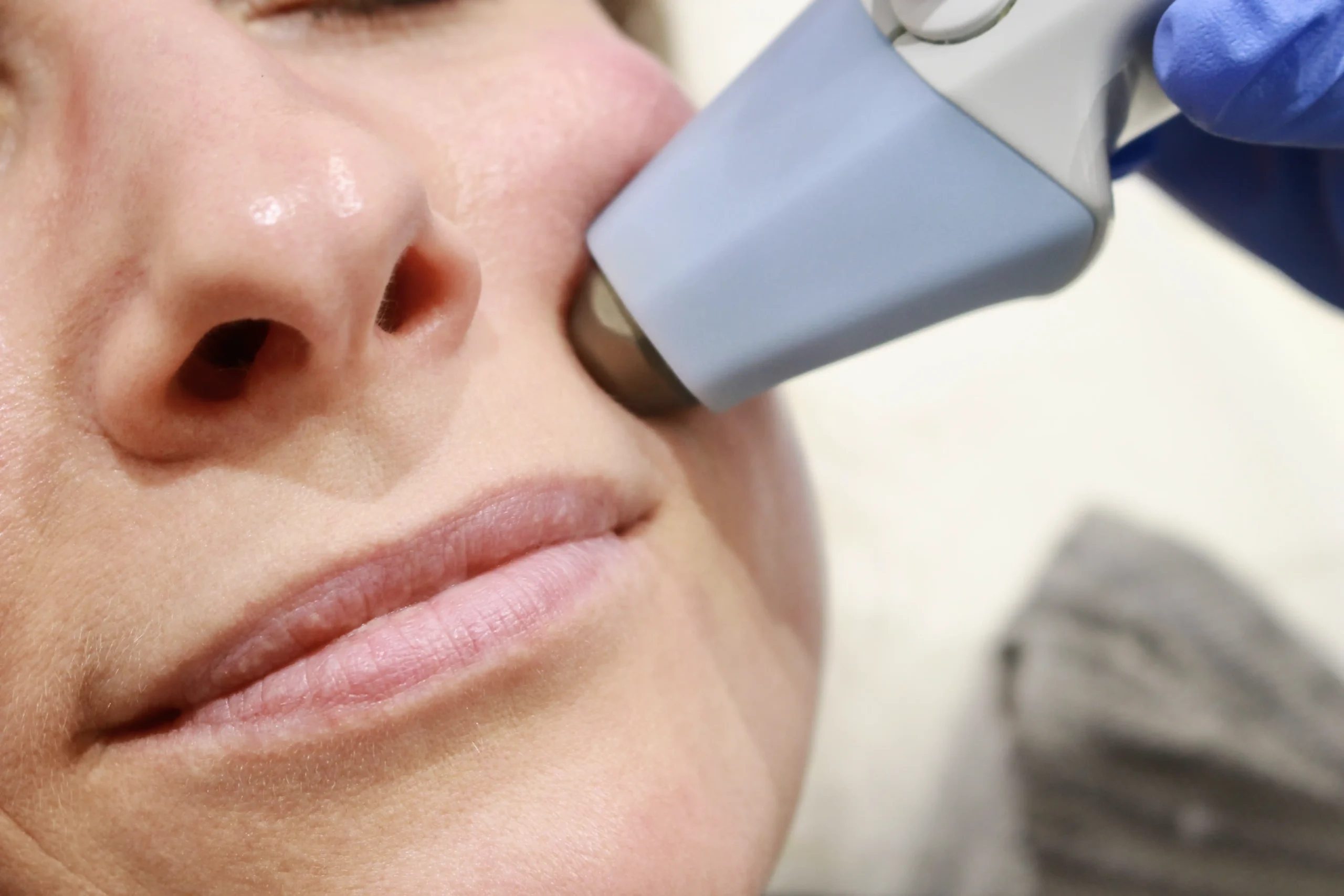
Treatment Time
30 Minutes
Visible Results
-
Full Recovery
-
Duration
Treatment Plan
Sensitivity Time
-
Anaesthetic
Not Avaliable
Back to Work
Straight Away
No. of Treatments
Every 3 Months
At Home Care Tips
At FTT Skin Clinics, we empower you with practical tips to manage double chin and enhance the effectiveness of your skincare efforts. For those enduring the psychological impact of double chin, seeking support and adopting a positive skincare mindset are essential steps towards healing both skin and self-esteem.
Maintain a Healthy Diet: Reducing overall body fat can help lessen the appearance of a double chin. Focus on a balanced diet rich in fruits, vegetables, lean proteins, and whole grains. Avoid excessive amounts of processed and sugary foods that can contribute to fat accumulation.
Stay Hydrated: Drinking plenty of water throughout the day can help maintain skin elasticity and overall health. Hydration is crucial for detoxifying your body and may aid in reducing fat deposits underneath the chin.
Exercise Regularly: While general exercise will help reduce body fat, specific exercises targeting the neck and chin area can be particularly helpful. Exercises like chin lifts, neck rolls, and jaw stretches can strengthen muscles, improve skin elasticity, and reduce the double chin appearance.
Improve Posture: Good posture can make a double chin less noticeable. Keep your back straight and shoulders down while tucking your chin slightly instead of letting it protrude forward. This position helps in strengthening the muscles of the neck and jaw, reducing the saggy appearance of the chin.
Skin Care Regimen: Use firming creams or gels that contain ingredients like caffeine, vitamin E, or retinol, which can help tighten the skin and improve its texture. Regularly moisturizing the neck and chin area can also help maintain skin elasticity.
Massage: Regular gentle massage of the neck and chin area can improve blood flow and help reduce fat accumulation. Use upward strokes from the bottom of the neck to the jawline using a firming moisturizer or oil to enhance the effects.
Manage Weight: Keeping your weight in a healthy range is one of the most effective ways to reduce a double chin. Weight fluctuations can lead to changes in body fat distribution, including the area under your chin.
Mature Skin
What is Mature Skin?
Mature skin refers to skin that has undergone various changes due to the natural aging process. As people age, their skin experiences a range of physiological alterations that affect its structure, appearance, and function.
Mature Skin
Mature skin develops as the natural aging process causes the skin to produce less collagen and elastin, the proteins responsible for its firmness and elasticity. Over time, this reduction in collagen and elastin leads to the visible signs of aging, such as wrinkles, fine lines, and sagging skin. The progression of skin maturation varies among individuals but is a universal part of aging. Managing the effects of mature skin often involves a combination of skincare routines, lifestyle changes, and possibly professional treatments that are tailored to meet the specific needs of each individual's skin condition. This approach helps to mitigate the symptoms of aging and supports healthier, more resilient skin.
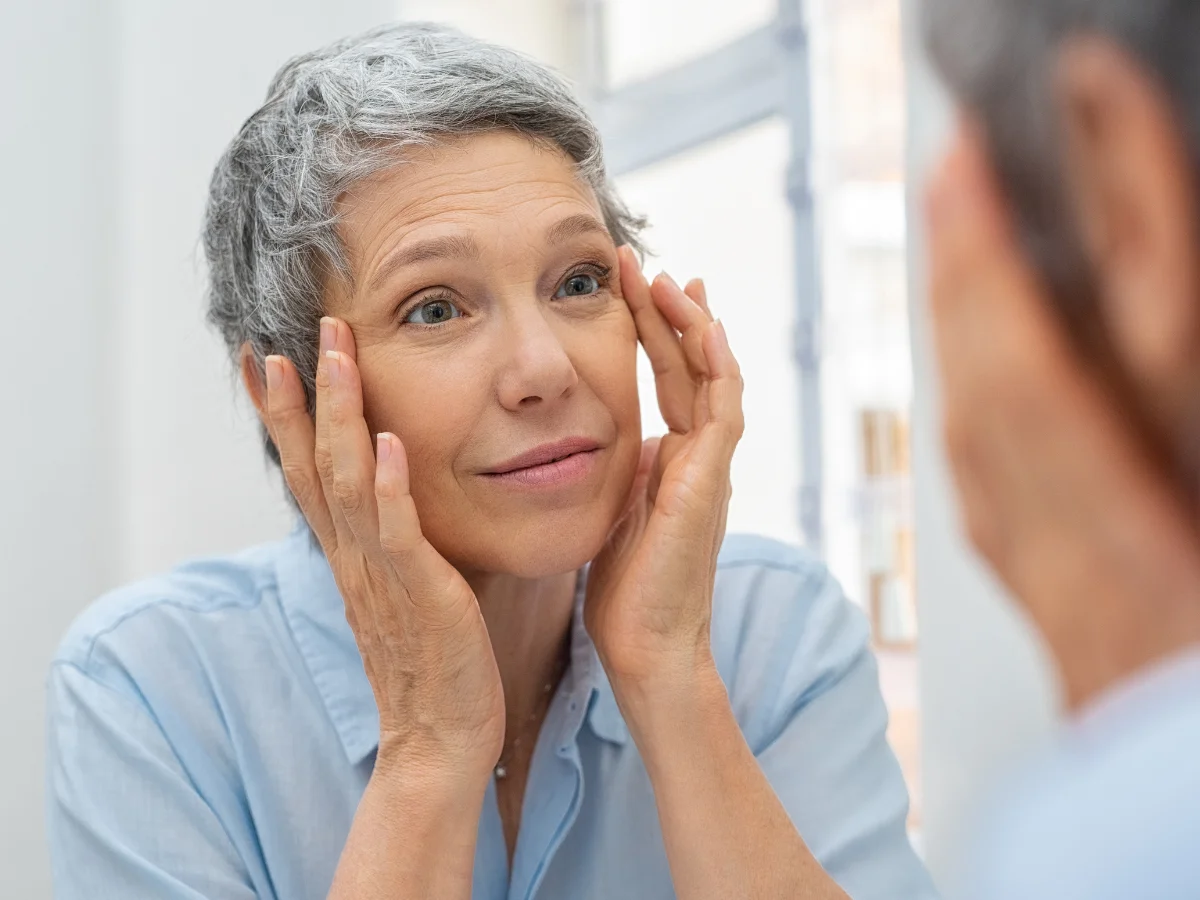
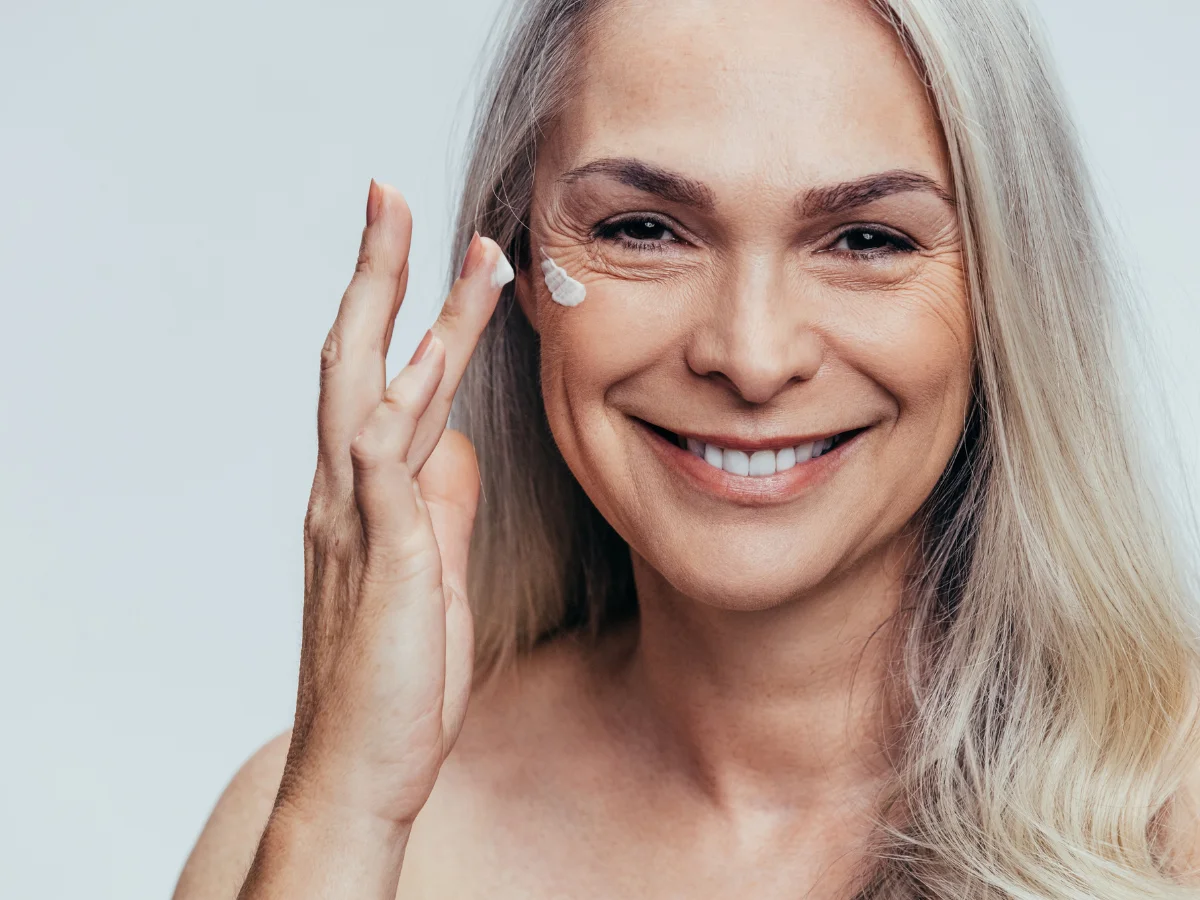
skin concerns
Are you affected?
Mature skin typically manifests through several tell-tale signs that reflect the natural aging process. Recognizing these signs is crucial for early intervention and effective treatment. FTT Skin Clinics offers a range of tailored treatments designed to rejuvenate mature skin and restore its youthful glow. Our experts are dedicated to providing the highest level of care, combining advanced treatment options with personalized skincare advice.
Causes
Mature skin is primarily the result of the natural aging process, but several internal and external factors can accelerate or influence its development. Here are some of the key causes of mature skin:
Natural Aging: As we age, our skin naturally undergoes changes. Collagen production slows down, and elastin, the protein that keeps skin elastic, diminishes. The skin’s fat layers thin out, leading to sagging and the appearance of fine lines and wrinkles. Cell turnover and the skin’s ability to repair itself also slow down, making the skin appear duller.
Sun Exposure: Ultraviolet (UV) radiation from the sun is one of the most significant external factors contributing to skin aging. Prolonged sun exposure breaks down collagen and impairs the synthesis of new collagen. UV exposure can also cause pigmentation changes, such as age spots and freckles.
Genetic Factors: Genetics play a crucial role in how our skin ages. The genetic makeup from our parents influences how quickly the aging process takes place and can determine the likelihood of developing certain skin characteristics like dryness or elasticity.
Environmental Factors: Apart from sun exposure, other environmental factors like pollution and exposure to toxins can accelerate skin aging. Pollutants can trigger the breakdown of collagen and elastin, contributing to the early appearance of signs of aging.
Lifestyle Choices: Smoking and an unhealthy diet can significantly affect skin health. Smoking accelerates skin aging by impeding blood flow to the skin, which deprives it of essential nutrients and oxygen. A diet lacking in fruits and vegetables but high in sugar and refined carbohydrates can contribute to the breakdown of collagen and elastin.
Hormonal Changes: Changes in hormone levels, especially during menopause, significantly affect skin health. Decreases in estrogen levels during menopause can lead to reduced collagen production, skin thinning, and dryness.
Stress: Chronic stress can lead to increased production of cortisol and other hormones that break down collagen and elastin. Stress can also exacerbate skin conditions like eczema or psoriasis, which can further affect skin’s appearance.
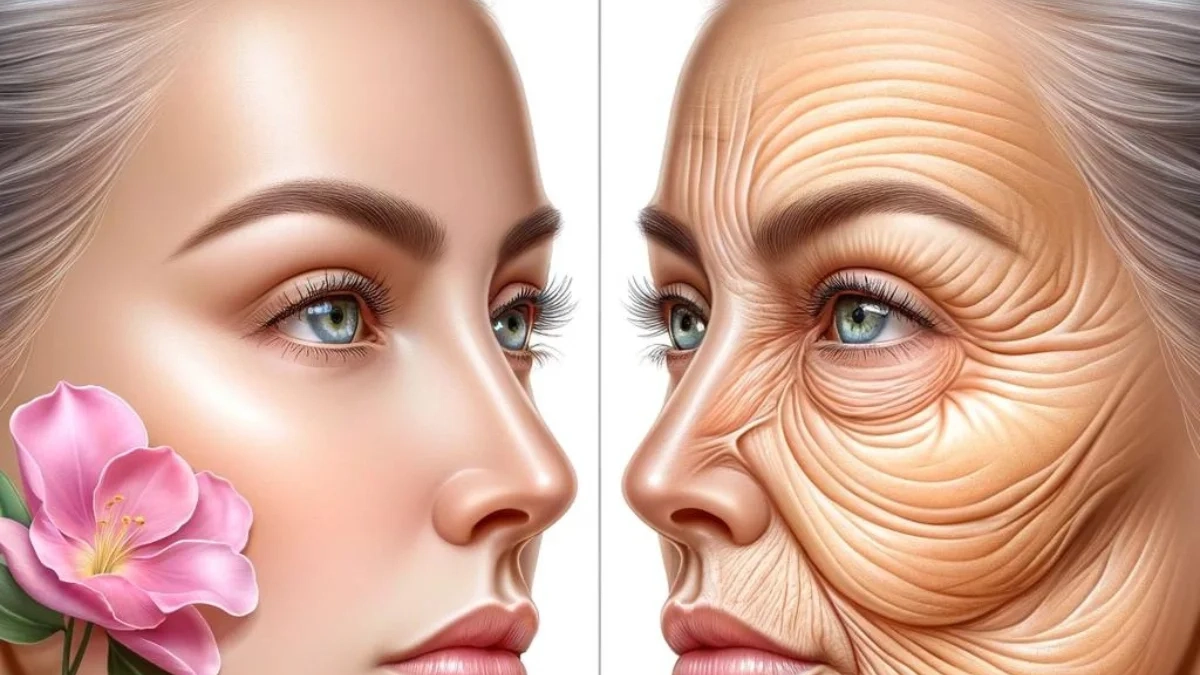


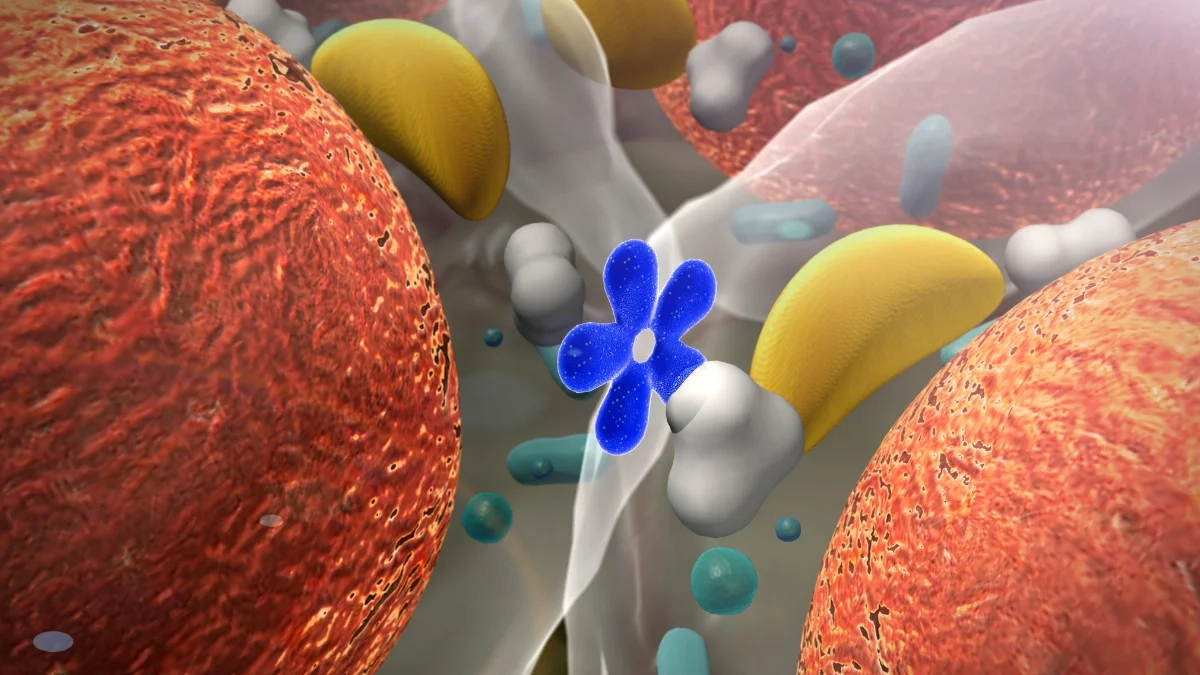
Identifying Symptoms of Mature Skin
Visible Wrinkles and Fine Lines: One of the most apparent signs of mature skin is the increased appearance of wrinkles and fine lines, especially around the eyes, forehead, and mouth. This occurs due to the natural decrease in collagen and elastin production.
Increased Dryness and Roughness: If your skin feels drier or rougher, it could be a sign of maturity. Mature skin often loses its ability to retain moisture due to decreased natural oil production, making regular moisturizing an essential part of your skincare routine.
Noticeable Age Spots and Hyperpigmentation: Prolonged exposure to the sun over the years can lead to age spots and areas of darkened skin. These spots are more prevalent and visible on mature skin.
Loss of Skin Elasticity: Mature skin may appear less firm and plump as skin elasticity decreases. This sagging skin is often noticeable along the jawline and cheeks.
Dull Skin Tone: A lack of radiant, even skin tone can also indicate skin maturity. As cell turnover slows down with age, it can leave the skin looking tired and dull.
Frequently Asked Questions
What is mature skin?
Mature skin refers to skin that has experienced natural aging changes. It is characterized by wrinkles, fine lines, loss of elasticity, dryness, and a generally thinner appearance.
At what age does skin start to mature?
Skin aging can begin as early as the mid-20s, but visible signs of mature skin typically become more apparent in the late 30s to early 40s. The rate at which skin matures varies greatly among individuals due to genetic and environmental factors.
What are the main signs of mature skin?
The main signs include deeper wrinkles and fine lines, sagging skin due to loss of elasticity, increased dryness, dullness, and more pronounced age spots or hyperpigmentation.
Can lifestyle choices affect the aging process of the skin?
Yes, lifestyle choices such as sun exposure, smoking, poor diet, and lack of exercise can accelerate the aging process of the skin. Protecting skin from the sun, maintaining a healthy diet, quitting smoking, and regular physical activity can help slow down the signs of aging.
Is it possible to reverse the signs of mature skin?
While it is not possible to completely reverse aging, many treatments and skincare products can significantly reduce the appearance of aging signs. Treatments like retinoids, moisturizers, chemical peels, and laser therapy can improve skin texture and appearance.
How often should I moisturize mature skin?
Mature skin often suffers from dryness, so it is important to moisturize at least twice a day—once in the morning and once at night. Depending on your skin’s dryness, you may need to apply a moisturizer more frequently.
What ingredients should I look for in products for mature skin?
Look for products containing ingredients like hyaluronic acid, retinoids, peptides, antioxidants (such as vitamins C and E), and ceramides, which can help hydrate the skin, stimulate collagen production, and protect against environmental damage.
Does mature skin need sunscreen?
Absolutely. Sunscreen is crucial for protecting all skin types from UV damage, but it’s especially important for mature skin to prevent further aging and damage. Use a broad-spectrum sunscreen with at least SPF 30 daily.
What is the best way to cleanse mature skin?
Use a gentle, hydrating cleanser that does not strip the skin of its natural oils. Avoid cleansers with harsh ingredients that can exacerbate dryness and irritation.
Can diet impact the health of mature skin?
Yes, a diet rich in antioxidants, healthy fats, and vitamins can support skin health. Foods high in omega-3 fatty acids, such as fish and nuts, and antioxidant-rich fruits and vegetables should be included in your diet to help maintain healthy, youthful skin.

Mature Skin Myths
Myth: Drinking more water can prevent wrinkles.
While staying hydrated is crucial for maintaining overall health, including skin health, it alone cannot prevent wrinkles. Wrinkles are primarily caused by the loss of collagen and elastin in the skin as you age, along with genetic factors and environmental exposure, such as UV radiation.
Myth: You don’t need to change your skincare routine as you age.
As your skin ages, its needs change. Mature skin often requires more hydration and specific ingredients to support elasticity and minimize the appearance of wrinkles. It’s important to adapt your skincare routine to include products formulated for aging skin.
Myth: Anti-aging products are only necessary once wrinkles appear.
Preventative skincare is more effective than trying to reverse the signs of aging. Starting anti-aging treatments before wrinkles fully develop can help slow the aging process and maintain the skin’s youthful appearance longer.
Myth: Only expensive skincare products are effective for mature skin.
The effectiveness of skincare products depends more on the ingredients and formulation than on the price. Many affordable products contain effective ingredients suitable for mature skin.
Myth: Tanning beds are a safer way to get vitamin D for older adults.
Tanning beds emit UVA and sometimes UVB rays, both of which can cause significant skin damage and contribute to premature aging and skin cancer. It’s safer to get vitamin D through diet and supplements if necessary.
Myth: Mature skin doesn’t need sunscreen.
Skin protection is crucial at every age. Mature skin is actually more susceptible to the damaging effects of the sun, making sunscreen an essential part of daily skincare, regardless of the weather or season.
Myth: The more products you use, the better for mature skin.
Using too many products can overwhelm the skin, especially if it’s sensitive. It’s more beneficial to use a few effective products that suit your skin’s specific needs than to overload it with numerous products.
How Can We Help?
RFM combines the benefits of traditional microneedling with the deep tissue heating effects of radio frequency energy, making it an ideal solution for addressing the complex concerns associated with aging skin.
Stimulates Collagen Production: RFM significantly enhances collagen production in the skin. As the microneedles penetrate the skin, they create controlled micro-injuries that stimulate the body’s natural healing process, while the radio frequency energy heats the deeper layers of the skin, further boosting collagen synthesis. This increased collagen production helps to reduce the appearance of fine lines and wrinkles, giving the skin a smoother and firmer look.
Improves Skin Texture and Tone: The precise and controlled application of RF energy also improves skin texture by tightening the skin and reducing the size of pores. This leads to a more even skin tone and a reduction in the overall roughness of the skin’s surface, which can become more pronounced with age.
Targets Sagging Skin: One of the key concerns for mature skin is sagging due to loss of elasticity. RFM effectively addresses this issue by tightening and lifting the skin. The radio frequency energy penetrates deep into the dermal layers, heating the tissue and causing immediate contraction of collagen fibers and long-term tightening through collagen remodeling.
Minimizes Hyperpigmentation: Mature skin often displays signs of hyperpigmentation or age spots. RFM can help lighten these spots by promoting skin renewal through increased cell turnover. The treatment helps bring newer, lighter skin cells to the surface, gradually diminishing the visibility of pigmentation.
Enhances Product Absorption: The micro-channels created by the microneedling process improve the skin’s ability to absorb topical treatments. This can be particularly beneficial for mature skin, as it allows for better penetration of anti-aging serums and creams, enhancing their effectiveness.
Safe for All Skin Types: RFM is suitable for all skin types, including those with a darker skin tone, which are sometimes at risk of hyperpigmentation from other types of laser treatments. It offers a safe and effective option for skin rejuvenation without the risk of discoloration.
Personalized Treatment Plans: At FTT Skin Clinics, we personalize each RFM treatment plan based on the individual’s skin type, concerns, and aesthetic goals. During a consultation, our skincare professionals assess your skin and discuss your goals to tailor a treatment that best suits your needs.
RFM is a minimally invasive option for those seeking significant improvements in skin firmness, texture, and overall youthfulness without the downtime associated with more invasive procedures. It is an excellent choice for clients at FTT Skin Clinics looking to rejuvenate their mature skin and achieve lasting results.
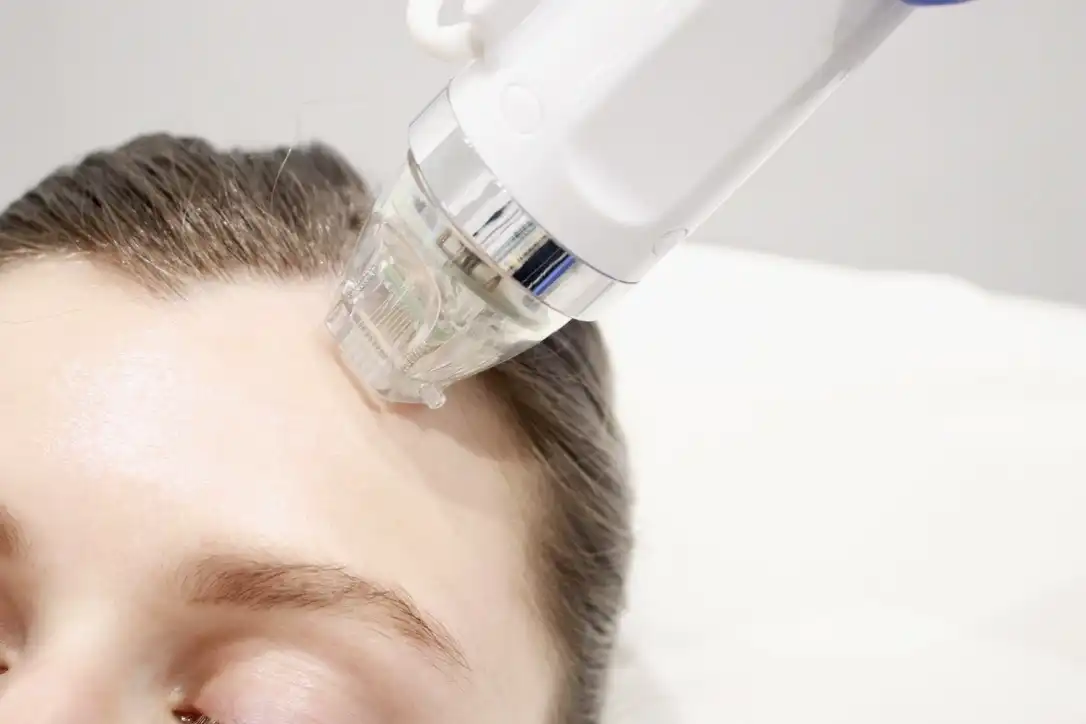
Treatment Time
60 Minutes
Visible Results
6 Weeks
Full Recovery
24 Hours
Duration
Treatment Plan
Sensitivity Time
48 Hours
Anaesthetic
Topical
Back to Work
24 Hours
No. of Treatments
Every 3 Months
HIFU uses focused ultrasound energy to target the deeper layers of the skin, encouraging collagen production and providing a firmer, more youthful appearance without the need for surgery.
Non-Surgical Lifting and Tightening: HIFU is renowned for its ability to achieve significant lifting effects, particularly around the cheeks, jawline, and neck. The ultrasound energy targets these areas, penetrating at different depths to initiate collagen remodeling and tightening without affecting the surface of the skin.
Stimulates Collagen Production: The ultrasound energy used in HIFU stimulates the deeper layers of the skin, encouraging new collagen growth over time. Collagen is a crucial protein for maintaining skin elasticity and structure. As collagen levels increase, the skin appears firmer, smoother, and more elastic.
Reduces Wrinkles and Fine Lines: By enhancing collagen production and tightening the skin, HIFU effectively reduces the appearance of wrinkles and fine lines, especially in aging areas prone to sagging and creasing, such as the brow and neckline.
Long-Lasting Results: One of the advantages of HIFU is that its effects are long-lasting. Following a treatment, the skin’s appearance continues to improve for several months as new collagen forms. Results can last for up to a year or more, depending on the individual’s skin condition and natural aging process.
Minimal Downtime: HIFU is a favored option for those seeking effective anti-aging results without the downtime associated with invasive procedures. Most clients can resume their normal activities immediately after a session, making it a convenient option for those with busy lifestyles.
Tailored Treatments: Each HIFU session at FTT Skin Clinics is customized to meet the unique needs and goals of our clients. During your consultation, our experts will evaluate your skin type and condition to determine the most effective treatment plan for your specific concerns.
HIFU is an excellent choice for clients at FTT Skin Clinics who are looking for a non-surgical solution to address the signs of aging. It provides a safe, effective way to enhance skin firmness, reduce wrinkles, and improve overall facial and neck appearance, giving our clients renewed confidence in their skin. Whether you are looking to lift sagging skin, reduce wrinkles, or achieve a more defined facial contour, HIFU presents a promising solution with lasting benefits.

Treatment Time
60 Minutes
Visible Results
6 Weeks
Full Recovery
24 Hours
Duration
Treatment Plan
Sensitivity Time
24 Hours
Anaesthetic
Not Avaliable
Back to Work
Straight Away
No. of Treatments
Every 3 Months
Exilis treatment involves using a device that delivers radiofrequency energy to the skin. This energy heats the deeper layers of the skin, stimulating collagen production and causing the skin tissue to contract. This not only improves skin elasticity but also helps tighten and firm the skin’s appearance.
Deep Tissue Stimulation: Exilis combines radiofrequency and ultrasound to deliver energy deeply into the skin. This targeted energy heats the skin tissues, encouraging the production of new collagen and elastin fibers. These proteins are essential for maintaining skin’s firmness and elasticity, which are often lost with age.
Visible Lifting and Tightening: Exilis is particularly effective in tightening loose and sagging skin, a common concern with mature skin. The treatment effectively targets areas that show signs of aging, such as the jawline, under the chin, and around the eyes, providing a lifted and more contoured appearance.
Reduction of Wrinkles and Fine Lines: As Exilis stimulates collagen renewal, the skin’s texture improves, leading to a reduction in the appearance of fine lines and wrinkles. The heat generated by the Exilis treatment helps to smooth out the skin, making it look fresher and more youthful.
Customizable Treatments: Exilis therapy can be customized to suit each individual’s skin condition and aesthetic goals. The device allows for precise control over the intensity of the energy delivered, making it suitable for different skin types and sensitivity levels.
Non-Invasive with No Downtime: One of the significant advantages of Exilis is that it offers a non-invasive solution with no downtime required. Clients can resume their normal activities immediately after treatment, making it a convenient option for those with busy schedules.
Enhanced Skin Tone and Texture: Beyond tightening and wrinkle reduction, Exilis improves overall skin tone and texture. The thermal energy helps to revitalize dull skin, promoting a more even skin tone and a smoother texture.
Safe and Comfortable: Exilis treatments are safe and generally comfortable, with many clients describing the sensation similar to a hot stone massage. The built-in cooling mechanism in the Exilis device ensures the surface of your skin remains comfortable throughout the treatment.
Exilis therapy at FTT Skin Clinics is an excellent choice for clients looking to combat the visible signs of aging without the complications of invasive procedures. It provides a practical and effective solution for lifting, tightening, and rejuvenating mature skin, ensuring our clients can enjoy lasting results and a more youthful appearance. Whether targeting specific problem areas or improving overall skin quality, Exilis offers a versatile and reliable option for age-defying skin care.

Treatment Time
60 Minutes
Visible Results
Immediate
Full Recovery
Immediate
Duration
Treatment Plan
Sensitivity Time
Not Avaliable
Anaesthetic
Not Avaliable
Back to Work
Immediate
No. of Treatments
Treatment Plan
Targeted Treatment Facials combines various modalities, including deep cleansing, hydration, and rejuvenation techniques, to enhance skin’s appearance and tackle the signs of aging.
Customized Deep Cleansing: The Targeted Treatment Facial starts with a deep cleansing process that is customized based on the specific skin type and concerns of each client. This step helps remove impurities and excess oils, which can contribute to the dullness and uneven texture often seen in mature skin.
Exfoliation and Renewal: Gentle exfoliation is a crucial part of the Targeted Facial, helping to remove dead skin cells that can make mature skin look lackluster. This step promotes cell turnover, leading to fresher, brighter skin while also preparing the skin for better absorption of subsequent treatments.
Hydration Infusion: Mature skin often suffers from dryness due to decreased natural oil production. The hydration segment of the Targeted Facial involves the infusion of hydrating serums and masks tailored to replenish moisture and restore the skin’s natural barrier, promoting a plump, youthful appearance.
Anti-Aging Serums and Masks: We incorporate high-quality serums and masks specifically formulated with anti-aging ingredients, such as peptides, antioxidants, and growth factors. These products are chosen to stimulate collagen production, reduce the appearance of fine lines and wrinkles, and improve skin elasticity.
LED Light Therapy: Depending on individual skin needs, the Targeted Treatment Facials may include LED light therapy to further enhance the treatment’s rejuvenating effects. LED therapy can help reduce inflammation, promote collagen production, and accelerate healing and regeneration.
Personalized Recommendations: Each Targeted Facial concludes with personalized recommendations for at-home skincare tailored to prolong and enhance the benefits of the facial. Our skin experts suggest products and routines that will help maintain the skin’s radiance and address ongoing concerns associated with aging.
Relaxing and Nurturing Experience: Beyond the tangible benefits for the skin, the Targeted Treatment Facals at FTT Skin Clinics provides a relaxing and nurturing experience. This is essential for overall well-being, which can positively influence skin health, particularly as stress and fatigue can exacerbate signs of aging.
FTT Skin Clinics is an excellent choice for clients seeking a comprehensive and customized approach to managing mature skin. This treatment not only addresses the aesthetic aspects of aging but also focuses on the underlying health of the skin, ensuring that our clients leave feeling rejuvenated and confident with visibly improved skin.
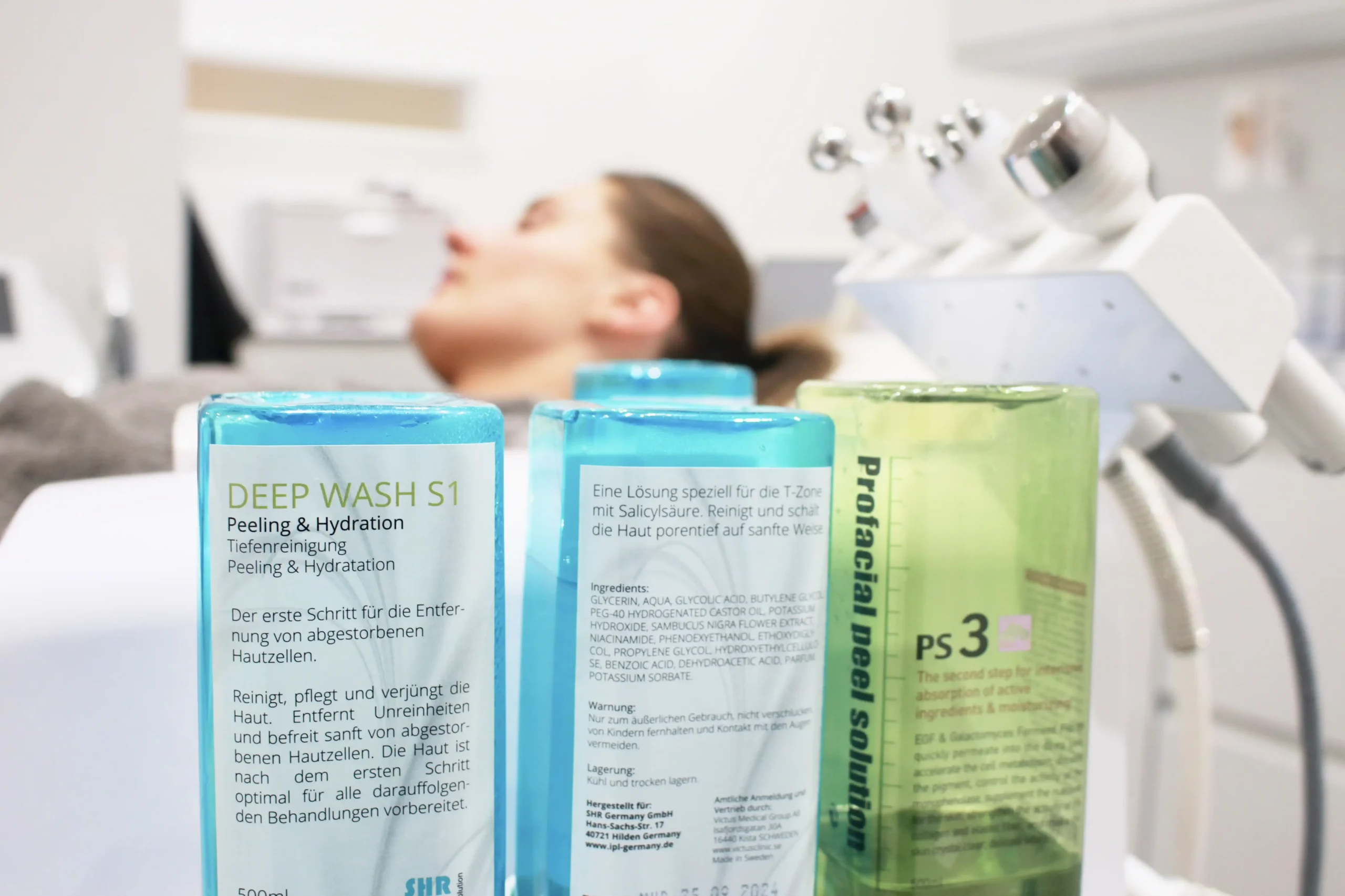
Treatment Time
60 Minutes
Visible Results
Immediate
Full Recovery
Immediate
Duration
1 Month
Sensitivity Time
24 Hours
Anaesthetic
Not Avaliable
Back to Work
Immediate
No. of Treatments
Monthly
Microneedling with DermapenWorld is an advanced, non-surgical treatment that is highly effective for rejuvenating mature skin, commonly provided at FTT Skin Clinics.
Microneedling is fundamentally a form of collagen induction therapy. The tiny needles in the Dermapen create controlled micro-injuries in the skin, which trigger the body’s natural wound healing processes. This response stimulates the production of collagen and elastin, the two key proteins responsible for the skin’s structural integrity and elasticity.
As mature skin often suffers from a loss of firmness and texture, the increased collagen and elastin production resulting from microneedling can significantly improve these aspects. The skin becomes firmer, smoother, and more refined over time, reducing the appearance of fine lines, wrinkles, and sagging.
The micro-channels created by the Dermapen enhance the skin’s ability to absorb topical treatments. Following a microneedling session, skin care products such as hydrating serums, anti-aging creams, or targeted treatments for age spots can penetrate deeper into the skin, making them more effective.
Microneedling with DermapenWorld is minimally invasive, offering a safer alternative to more invasive procedures like laser therapy or surgery. It involves minimal downtime, allowing patients to return to their normal activities shortly after the procedure. Most patients experience only mild redness and swelling for a few days.
The Dermapen can be adjusted to different depths, allowing for customization based on the specific needs of the patient’s skin and particular areas of concern. This feature is particularly beneficial for treating delicate areas prone to aging, such as around the eyes and mouth.
Besides improving skin firmness and texture, microneedling can also address other signs of aging such as hyperpigmentation, age spots, and sun damage. The treatment promotes an even skin tone and reduces the visibility of dark spots and other discolorations.
The benefits of microneedling accumulate with each session. A series of treatments, typically spaced about 4-6 weeks apart, is often recommended to achieve the best results. The long-term benefits include not only a more youthful and radiant appearance but also ongoing improvements in skin health due to enhanced natural rejuvenation processes.
Microneedling with DermapenWorld is suitable for all skin types, including darker skin tones, which sometimes are at higher risk for hyperpigmentation from other types of rejuvenation treatments. This makes it a versatile option for a broad range of patients.
At FTT Skin Clinics, microneedling with DermapenWorld is expertly performed by trained professionals who tailor each treatment to the individual’s unique skin conditions and aging concerns. This personalized approach ensures that each patient receives the most effective treatment for their specific needs, helping them achieve smoother, firmer, and younger-looking skin.
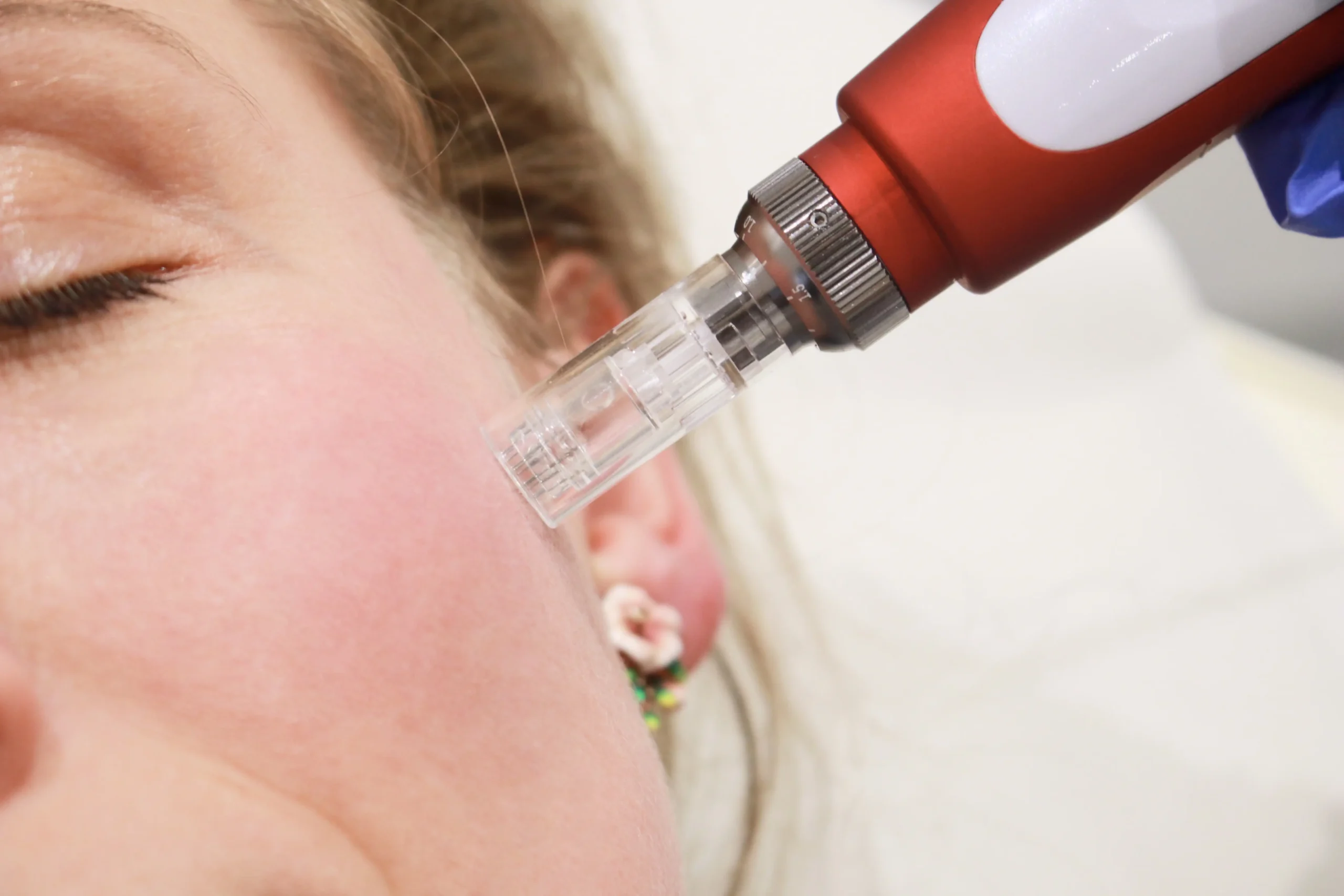
Treatment Time
60 Minutes
Visible Results
Immediate
Full Recovery
Immediate
Duration
1 Month
Sensitivity Time
24 Hours
Anaesthetic
Not Avaliable
Back to Work
Immediate
No. of Treatments
Monthly
At Home Care Tips
At FTT Skin Clinics, we empower you with practical tips to manage mature skin and enhance the effectiveness of your skincare efforts. For those enduring the psychological impact of mature skin, seeking support and adopting a positive skincare mindset are essential steps towards healing both skin and self-esteem.
Caring for mature skin at home is crucial for maintaining its health and vitality. Here are some effective tips to help you nurture and protect your skin, complementing professional treatments with daily skincare routines:
Gentle Cleansing: Use a gentle cleanser that does not strip your skin of its natural oils. Cleansing should effectively remove dirt and makeup without leaving your skin tight or dry. This helps preserve the skin’s natural barrier, which is vital for maintaining hydration and resilience.
Hydration is Key: Mature skin tends to be drier, so increasing hydration is essential. Apply a rich moisturizer morning and night to help lock in moisture and keep the skin plump and hydrated. Look for products with hyaluronic acid, which is known for its ability to hold several times its weight in water.
Sun Protection: Daily use of sunscreen is non-negotiable, regardless of the weather. Choose a broad-spectrum sunscreen with an SPF of at least 30 to protect against both UVA and UVB rays. Sun damage is a significant factor in premature aging, so consistent protection is crucial.
Incorporate Antioxidants: Antioxidants help fight free radicals, which can cause oxidative stress and further age the skin. Use serums or creams enriched with vitamins C and E, which not only protect the skin from environmental damage but also brighten the complexion and promote collagen production.
Regular Exfoliation: Exfoliating 1-2 times a week with a gentle exfoliant can remove dead skin cells, promote cell turnover, and enhance the skin’s overall texture and tone. Be careful not to over-exfoliate, as this can lead to irritation and dryness in mature skin.
Use Targeted Treatments: Incorporate targeted treatments such as tretinoin or products from the FTT Golden Glow Collection into your evening routine. Tretinoin, a form of vitamin A, is highly effective in increasing skin cell turnover, improving the appearance of fine lines, wrinkles, and uneven skin tone. The FTT Golden Glow Collection is specifically formulated to nourish and rejuvenate mature skin, offering a blend of luxurious ingredients that restore luminosity and firmness.
By following these tips and incorporating effective products like tretinoin and the FTT Golden Glow Collection, you can significantly enhance the health and appearance of your mature skin. Regular at-home care is essential for long-lasting results and maintaining the benefits of professional treatments.
Rejuvenation Perimenopause
What is Perimenopause?
Perimenopause refers to the transitional phase leading up to menopause, the point in a woman’s life when she stops menstruating permanently. This phase can begin several years before menopause, typically occurring in a woman’s 40s, but it can start as early as the 30s.
What is Perimenopause?
During perimenopause, the ovaries gradually begin to produce less estrogen, which is the primary female sex hormone. The duration of perimenopause varies but typically lasts from 4 to 8 years, culminating in menopause once a woman has gone 12 consecutive months without a menstrual period. The onset and progression of perimenopause can differ significantly among women, making it a uniquely personal experience. Coping with its symptoms often involves lifestyle adjustments, hormone therapy, and other treatments tailored to individual needs and symptoms.


Are you affected?
Menopause is a natural biological process that marks the end of a woman's reproductive years, typically occurring between the ages of 45 and 55. Understanding whether you are entering or experiencing menopause can help you manage its symptoms more effectively. If you're experiencing several of the symptoms, you may be entering menopause. It's important to consult with a healthcare provider who can provide guidance and treatment options tailored to your specific symptoms. Managing menopause effectively can greatly improve your quality of life during this natural transition.
Causes
Natural Decline in Reproductive Hormones
As women age, their ovaries produce less estrogen and progesterone—hormones that regulate menstruation—and their fertility declines. Eventually, the ovaries stop releasing eggs altogether, leading to the cessation of menstruation and the onset of menopause.
Ovary Removal (Oophorectomy)
Surgical removal of the ovaries, which produce hormones like estrogen and progesterone, immediately induces menopause. This is because the body no longer produces these hormones at levels necessary to maintain the menstrual cycle.
Chemotherapy and Radiation Therapy
Cancer treatments can induce menopause, occurring abruptly or prematurely. While chemotherapy attacks rapidly dividing cancer cells, it can also affect the functioning of the ovaries. Radiation treatments directed near the pelvic area can similarly affect ovarian function.
Primary Ovarian Insufficiency
About 1% of women experience menopause before the age of 40 (premature menopause). This condition, known as primary ovarian insufficiency, is characterized by the underperformance of the ovaries and the inadequate production of reproductive hormones. It can be caused by genetic factors or autoimmune diseases but often occurs without a known reason.
Chronic Diseases
Certain chronic conditions like tuberculosis and autoimmune diseases like rheumatoid arthritis or systemic lupus erythematosus can also precipitate earlier menopause. The transition into menopause can vary widely among women. Understanding the causes and effects of this transition can help manage the symptoms more effectively and prepare for changes in the body that accompany this stage of life.


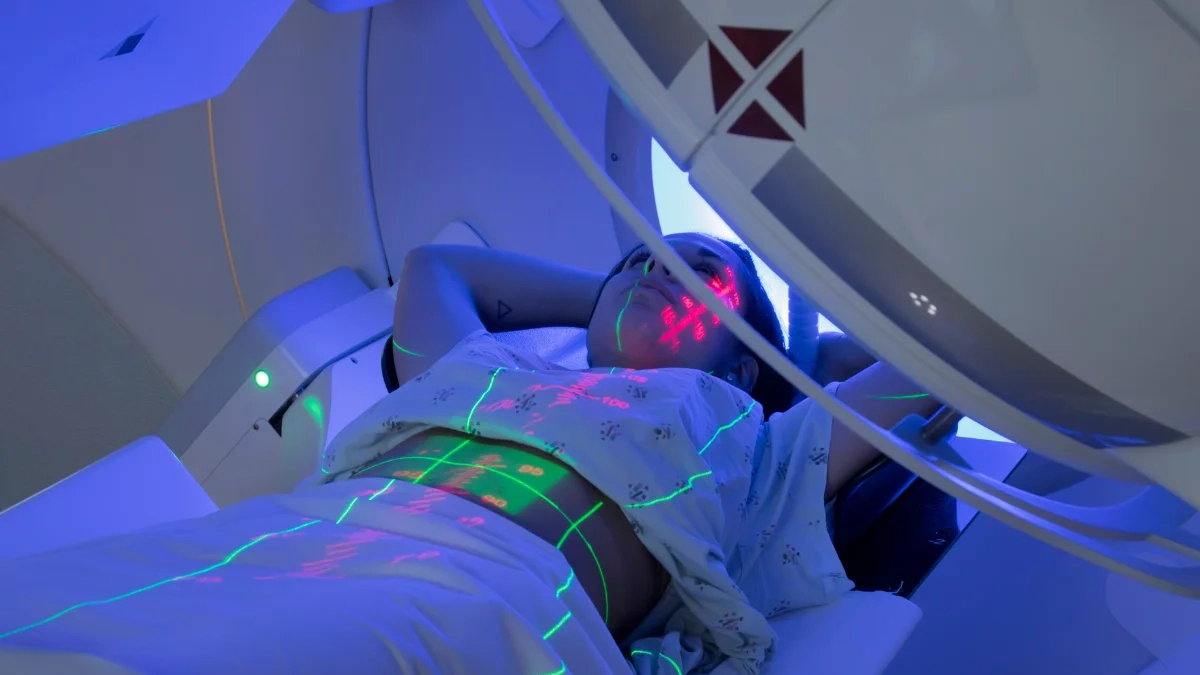
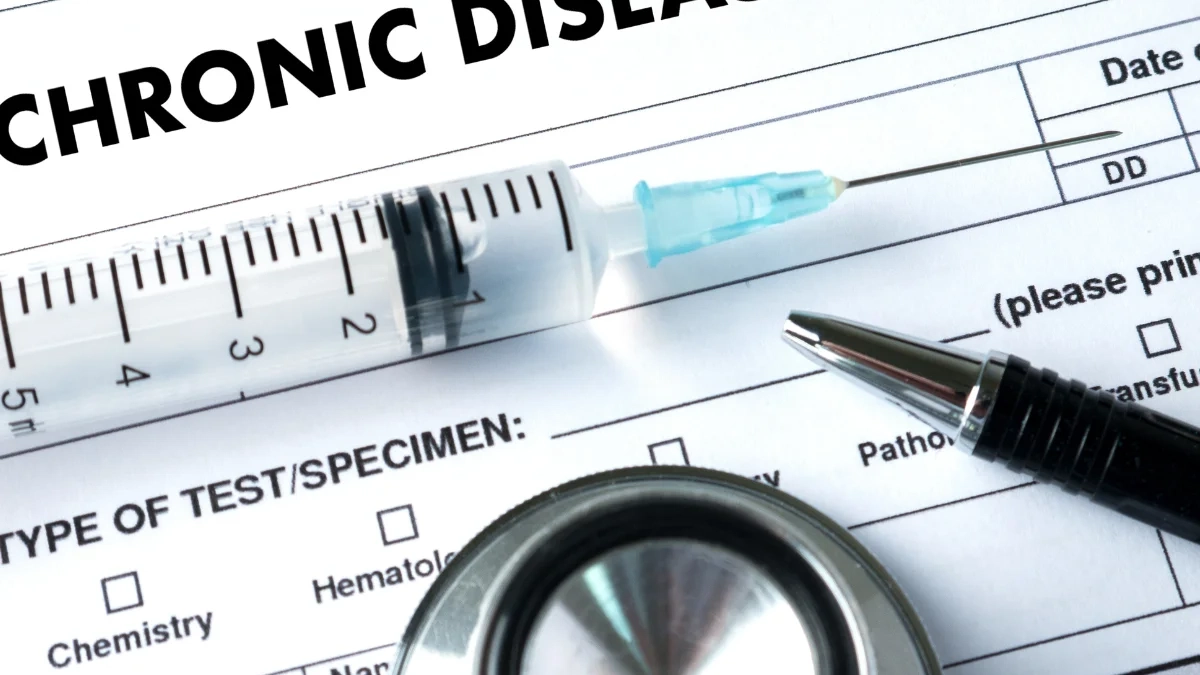
Identifying Characteristics of Perimenopause
- Irregular Menstrual Cycles: As estrogen levels fluctuate, menstrual cycles can become longer, shorter, or irregular, and periods may be lighter or heavier than usual.
- Menopause Symptoms: Women may begin to experience symptoms commonly associated with menopause, such as hot flashes, night sweats, mood swings, sleep disturbances, and vaginal dryness.
- Changes in Fertility: While fertility decreases during perimenopause due to less frequent ovulation, it is still possible to become pregnant until menopause is reached.
- Irregular Periods: One of the earliest signs of menopause is changes in menstrual cycle regularity. Your periods may become irregular, lighter, heavier, or more sporadic before stopping entirely.
- Hot Flashes: A very common symptom, hot flashes are sudden feelings of warmth, usually most intense over the face, neck, and chest, which can cause blushing and sweating.
- Night Sweats and Sleep Problems: Many women experience night sweats and may have trouble sleeping well, often due to hot flashes or insomnia.
- Mood Changes: Hormonal changes during menopause can lead to increased feelings of irritability, anxiety, or depression.
- Vaginal Dryness: Decreased estrogen levels can lead to vaginal dryness, which may cause discomfort during intercourse.
- Thinning Hair and Dry Skin: Lower hormone levels may result in thinner hair and drier skin as collagen decreases.
- Loss of Breast Fullness: Hormonal changes may cause the breasts to lose their fullness and firmness.
Frequently Asked Questions
What is pre-menopause?
Pre-menopause refers to the period in a woman’s life before the onset of menopause. It includes the years when her body begins to make gradual changes towards menopause, primarily characterized by changes in menstrual cycle regularity and the initial appearance of menopausal symptoms.
How can I tell if I’m in pre-menopause?
Signs that you might be entering pre-menopause include irregular periods, changes in menstrual flow, hot flashes, night sweats, mood swings, and changes in libido. If you notice these changes, it might be an indication that you are transitioning towards menopause.
What can I do to alleviate symptoms of pre-menopause?
Lifestyle adjustments such as maintaining a balanced diet, regular exercise, adequate sleep, and stress management can help manage symptoms. Additionally, hormone replacement therapy (HRT) and other medications can be effective in alleviating symptoms but should be discussed with a healthcare provider.
Are there any non-hormonal treatments available for pre-menopause symptoms?
Yes, there are several non-hormonal treatments that can help manage symptoms, including herbal supplements like black cohosh, phytoestrogens, and vitamin E. Cognitive-behavioral therapy and other forms of counseling might also help manage mood swings and emotional changes.
How long does pre-menopause last?
The duration of pre-menopause varies for each woman but typically lasts from a few months to several years. Most women enter menopause around the age of 51, but pre-menopause can start in the 40s or even earlier.
Can I still get pregnant during pre-menopause?
Yes, pregnancy is still possible during pre-menopause as ovulation may still occur, though less regularly. If pregnancy is not desired, continue using contraception until you’ve had one year without a menstrual period.
What are the best dietary changes to support health during pre-menopause?
Incorporating a diet rich in calcium and vitamin D is crucial to support bone health as estrogen levels decline. Foods rich in antioxidants and omega-3 fatty acids can also help manage inflammation and support overall health.
How can I improve my sleep during pre-menopause?
Establishing a regular sleep schedule, creating a comfortable sleep environment, and avoiding stimulants like caffeine and electronic devices before bedtime can improve sleep quality. Consider relaxation techniques such as meditation, yoga, or deep breathing exercises to help manage sleep disturbances.
What should I discuss with my healthcare provider regarding pre-menopause?
Discuss all symptoms, treatment options, and their benefits and risks. It’s also important to talk about your overall health, how pre-menopause may impact existing health conditions, and any preventive measures you should take during this transition.
Is it normal to feel anxious or depressed during pre-menopause?
Yes, hormonal changes can impact your mood, contributing to feelings of anxiety and depression. It’s important to discuss these feelings with your healthcare provider, as effective treatments are available to help manage these symptoms.

Perimenopause Myths
Myth: Pre-menopause symptoms are the same for every woman.
The experience of pre-menopause can vary significantly from woman to woman. Some may experience severe symptoms, while others may have mild or no noticeable changes. The type and intensity of symptoms are influenced by various factors including genetics, lifestyle, and overall health.
Myth: You can’t get pregnant during pre-menopause.
While fertility declines during pre-menopause due to less frequent ovulation, it is still possible to conceive. Women should continue using contraception until reaching full menopause, defined as one full year without a menstrual period.
Myth: Pre-menopause only affects older women.
Though most women begin experiencing pre-menopausal changes in their 40s, it can start earlier. Factors such as genetics, surgery, or certain health conditions can induce early pre-menopause, sometimes as early as the mid-30s.
Myth: Hormone replacement therapy (HRT) is necessary for managing pre-menopause.
HRT can be an effective treatment for managing symptoms in some women but is not necessary for everyone. Non-hormonal treatments, lifestyle changes, and alternative therapies can also significantly alleviate symptoms.
Myth: Pre-menopause symptoms are merely physical.
The hormonal fluctuations during pre-menopause can also affect emotional and mental health. Many women experience mood swings, anxiety, and depression during this transition phase.
Myth: If your mother had a difficult pre-menopause, you will too.
While genetics play a role in menopause, each woman’s experience is unique. Lifestyle factors such as diet, exercise, and stress management also significantly influence the severity of symptoms.
Myth: Pre-menopause marks the beginning of a rapid health decline.
Many women remain vibrant, healthy, and active well into post-menopause. Adopting a healthy lifestyle during pre-menopause can help manage symptoms and maintain health and vitality.
Myth: There’s nothing you can do to ease pre-menopause symptoms except wait it out.
There are many strategies to manage pre-menopause symptoms effectively. These include dietary adjustments, regular exercise, stress reduction techniques, and medical treatments tailored to individual needs.
How Can We Help?
Microneedling involves using a device equipped with fine needles to create tiny punctures in the top layer of the skin. This controlled skin injury triggers the body's natural wound healing processes, stimulating collagen and elastin production.
Microneedling is a highly effective rejuvenation treatment that can be particularly beneficial for women experiencing pre-menopausal skin changes. As estrogen levels begin to fluctuate and decline during pre-menopause, many women notice changes in their skin’s texture, elasticity, and overall appearance. Microneedling, also known as collagen induction therapy, can address these concerns by promoting the skin’s natural healing processes and enhancing its overall quality and appearance.
Benefits of Microneedling for Pre-Menopause Skin Rejuvenation:
Improves Skin Texture and Firmness: As collagen production increases, the skin regains its firmness and elasticity, reducing the appearance of fine lines and wrinkles that may start to appear during pre-menopause.
Enhances Skin Hydration: By improving the skin’s barrier function, microneedling can help retain moisture more effectively, addressing the dryness that often accompanies hormonal changes in pre-menopause.
Reduces Hyperpigmentation: Hormonal fluctuations can lead to uneven skin tone and dark spots, commonly seen during pre-menopause. Microneedling helps in dispersing pigment granules in the skin, thus evening out skin tone and reducing hyperpigmentation.
Increases Product Efficacy: The micro-channels created by microneedling allow for better absorption of topical treatments, making skincare products more effective. This is particularly beneficial for pre-menopausal women using targeted treatments like anti-aging serums or creams.
Minimally Invasive with Minimal Downtime: Unlike more invasive procedures, microneedling offers a minimally invasive solution with minimal downtime, making it an appealing option for busy individuals.
Promotes a Radiant Complexion: Regular microneedling sessions can improve overall skin appearance, resulting in a smoother, more radiant complexion that enhances one’s natural beauty without the need for extensive cosmetic treatments.
Considerations:
While microneedling is a safe procedure for most skin types, it’s important for women in pre-menopause to consult with a dermatologist or skincare specialist who understands the nuances of hormonal impacts on the skin. A professional can tailor treatments to your specific skin type and concerns, ensuring both safety and effectiveness.
In summary, microneedling offers a promising solution for women seeking to rejuvenate their skin during the pre-menopausal phase. It addresses various skin concerns by harnessing the body’s own regenerative capabilities, leading to visibly younger, healthier skin.
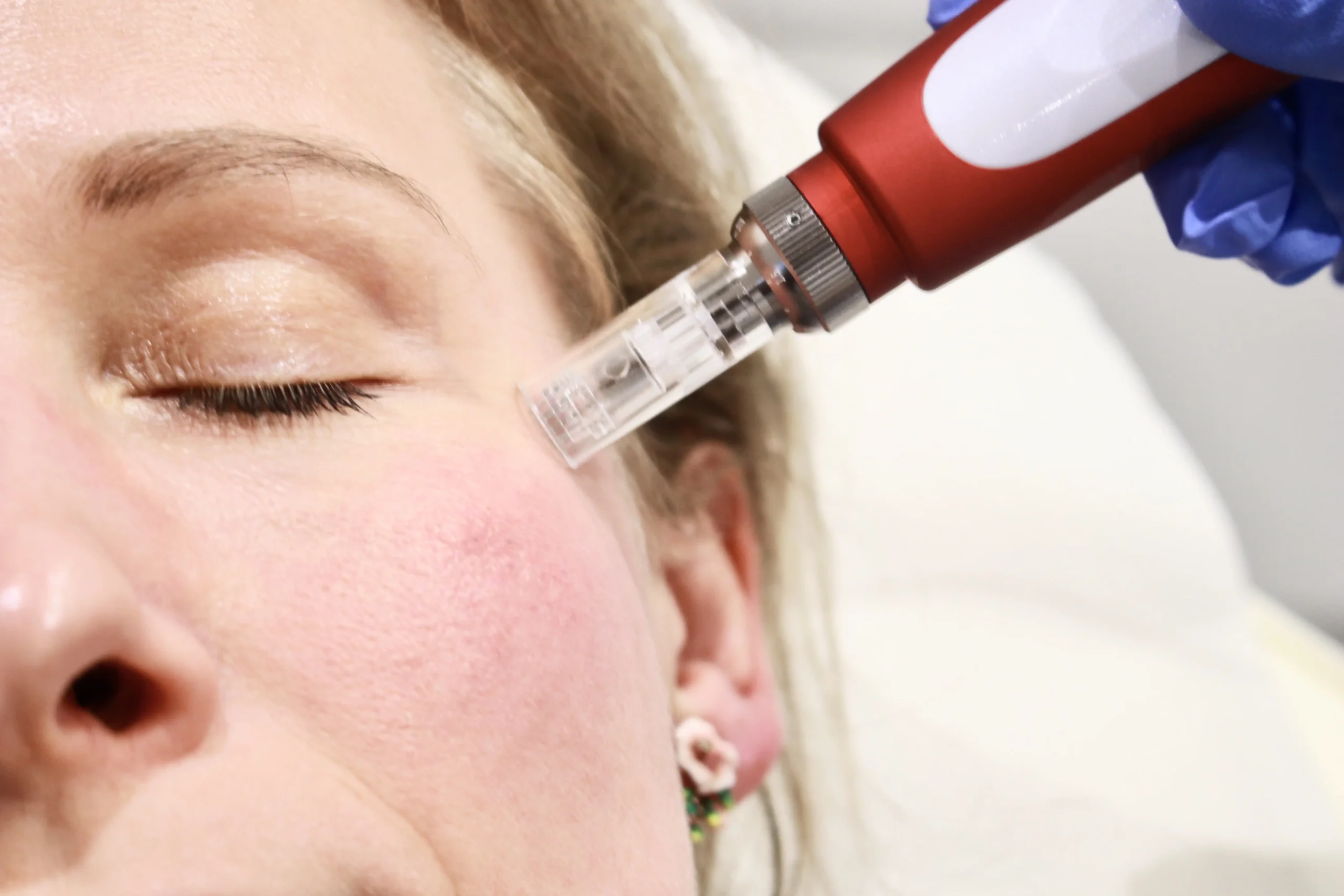
Treatment Time
60 Minutes
Visible Results
Immediate
Full Recovery
Not Avaliable
Duration
Not Avaliable
Sensitivity Time
None
Anaesthetic
None
Back to Work
Immediate
No. of Treatments
Not Avaliable
Exilis treatment involves using a device that delivers radiofrequency energy to the skin. This energy heats the deeper layers of the skin, stimulating collagen production and causing the skin tissue to contract. This not only improves skin elasticity but also helps tighten and firm the skin’s appearance.
Exilis is a highly effective rejuvenation treatment that can be particularly beneficial for women experiencing pre-menopausal skin changes. As estrogen levels begin to fluctuate and decline during pre-menopause, many women notice changes in their skin’s texture, elasticity, and overall appearance. Exilis, which uses radiofrequency technology to heat the deeper layers of the skin, can address these concerns by promoting the skin’s natural collagen production and enhancing its overall quality and appearance.
Benefits of Exilis for Pre-Menopause Skin Rejuvenation:
Improves Skin Tightness and Elasticity: As the skin’s collagen levels are boosted, it becomes firmer and more elastic, reducing the appearance of fine lines and wrinkles that may start to appear during pre-menopause.
Enhances Skin Contouring: Exilis can effectively contour the face and neck by tightening the skin, offering a non-surgical solution to sagging skin that can occur with hormonal changes.
Reduces Appearance of Wrinkles: The tightening effect of Exilis also smooths out wrinkles and lines, rejuvenating the facial appearance without the need for invasive procedures.
Non-Invasive with No Downtime: Exilis is a non-invasive treatment with no downtime, making it an excellent option for those with busy lifestyles who are seeking effective anti-aging solutions.
Provides Progressive Improvements: Results from Exilis improve over time, with optimal results typically seen after a series of treatment sessions. This progressive improvement allows for a natural transition to younger-looking skin.
Considerations:
While Exilis is safe for most skin types, it’s crucial for women in pre-menopause to consult with a dermatologist or skincare specialist who understands the hormonal impacts on the skin. A professional can tailor treatments to your specific needs and concerns, ensuring both safety and effectiveness.
In summary, Exilis offers a promising solution for women looking to rejuvenate their skin during the pre-menopausal phase. It tackles various skin concerns by enhancing the body’s collagen production, leading to visibly tighter, firmer, and more youthful skin.

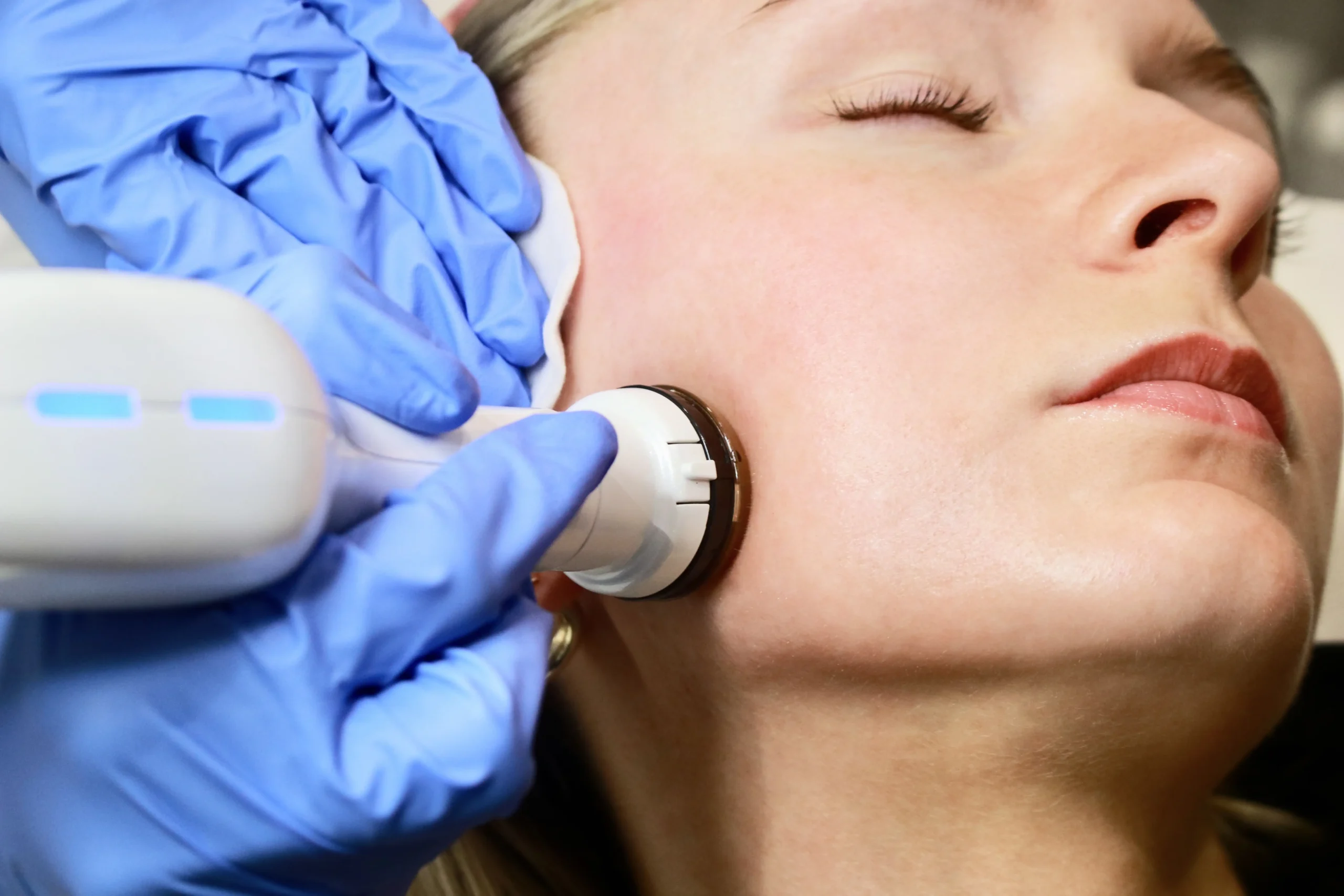
Treatment Time
60 Minutes
Visible Results
Immediate
Full Recovery
Immediate
Duration
Treatment Plan
Sensitivity Time
24 Hours
Anaesthetic
Not Avaliable
Back to Work
Immediate
No. of Treatments
Weekly
High-Intensity Focused Ultrasound (HIFU) is an innovative, non-invasive treatment that has been adapted at FTT Skin Clinics to address skin concerns associated with perimenopause. During perimenopause, women often experience changes in skin elasticity and firmness due to hormonal fluctuations.
HIFU targets the deep structural layers of the skin, including the SMAS layer (Superficial Muscular Aponeurotic System), which is typically targeted in surgical facelifts. The ultrasound energy penetrates deeply without harming the surface of the skin, stimulating the body’s natural healing response and encouraging the production of new collagen.
The primary benefit of HIFU in treating perimenopausal skin concerns is its ability to significantly boost collagen production. Collagen is crucial for skin elasticity and firmness, both of which can decline during perimenopause. By stimulating collagen synthesis, HIFU helps to tighten loose skin and reduce the appearance of wrinkles and sagging that may intensify during this hormonal transition.
HIFU is entirely non-invasive, requiring no cuts, injections, or anesthesia, making it a suitable option for those looking for effective results without surgery. Treatments are relatively quick, generally taking about 30 to 90 minutes depending on the area treated, and there is no downtime, allowing patients to return to their normal activities immediately.
The results of HIFU are progressive and long-lasting. While some initial effects can be seen immediately, the full benefits are typically visible within 2-3 months as the collagen regeneration process continues to improve the skin’s texture and firmness. The results can last for several years, depending on the individual’s skin condition and aging process.
HIFU at FTT Skin Clinics is often part of a comprehensive approach to facial rejuvenation during perimenopause. It can be combined with other treatments such as hormone replacement therapy, nutritional advice, and topical skin care products to manage other perimenopausal symptoms effectively.
HIFU is known for its safety and efficacy, with a proven track record in facial and neck rejuvenation. The treatment itself is typically well tolerated, with most patients experiencing only a slight discomfort due to the heat generated by the ultrasound energy.
By addressing the skin laxity and loss of firmness associated with hormonal changes during perimenopause, HIFU provides a powerful solution for women looking to maintain a youthful appearance without undergoing invasive procedures. At FTT Skin Clinics, HIFU is customized to each patient’s specific needs to ensure optimal results and satisfaction.

Treatment Time
60 Minutes
Visible Results
Immediate
Full Recovery
Immediate
Duration
Treatment Plan
Sensitivity Time
24 Hours
Anaesthetic
Not Avaliable
Back to Work
Immediate
No. of Treatments
Weekly
Each facial is customized based on a thorough skin analysis conducted by professional aestheticians at FTT Skin Clinics.
Perimenopause can bring about significant changes in the skin due to hormonal fluctuations, such as decreased collagen production, dryness, and loss of elasticity. Targeted treatment facials at FTT Skin Clinics are designed to address these specific skin concerns by providing intensive care tailored to rejuvenate and restore the skin’s health during perimenopause.
This personalized approach ensures that the facial treatments directly address perimenopausal symptoms like increased dryness, sensitivity, and fine lines. Ingredients and products used during the facial are selected to meet the unique hormonal and aging skin needs of each client.
Hydration is crucial for aging skin, especially during perimenopause when the skin tends to become drier and less resilient. Targeted treatment facials incorporate deeply hydrating serums, masks, and moisturizers enriched with hyaluronic acid, ceramides, and essential fatty acids to restore moisture levels and improve the skin’s barrier function.
To combat the loss of firmness and elasticity, these facials often include elements that stimulate collagen production, such as peptides, retinoids, or vitamin C. Techniques like microdermabrasion or mild chemical peels may also be used to remove dead skin layers and trigger the skin’s natural regeneration processes, leading to a firmer and plumper skin appearance.
Antioxidants are vital in fighting the free radical damage that can accelerate during perimenopause due to increased oxidative stress. Facials might incorporate potent antioxidants like vitamin E, ferulic acid, and green tea extract, which help protect the skin from environmental damage and improve its overall radiance and health.
Perimenopausal skin can also become more reactive and sensitive. Targeted treatment facials often include soothing and anti-inflammatory components such as aloe vera, chamomile, or niacinamide, which help calm the skin and reduce redness and irritation.
Beyond immediate treatment, these facials are part of a broader skincare strategy developed at FTT Skin Clinics. Clients are often provided with a home care regimen that complements the facial treatments, ensuring continued skin care that addresses perimenopausal changes effectively.
To maintain and enhance the results, regular facials are recommended. Consistent treatments help to continually support skin health during perimenopause, adapting to changes in the skin’s needs as hormonal levels fluctuate.
A key part of the treatment experience at FTT Skin Clinics includes professional guidance and support. Aestheticians discuss lifestyle and dietary factors that can impact skin health, offering holistic advice that complements the clinical treatments.
Targeted treatment facials at FTT Skin Clinics are an excellent way for women going through perimenopause to manage the skin changes associated with this transitional phase. By addressing specific symptoms and providing tailored care, these facials help restore skin vitality and youthfulness, making them a valuable part of managing perimenopausal symptoms.

Treatment Time
60 Minutes
Visible Results
Immediate
Full Recovery
Immediate
Duration
Treatment Plan
Sensitivity Time
24 Hours
Anaesthetic
Not Avaliable
Back to Work
Immediate
No. of Treatments
Weekly
At Home Care Tips
At FTT Skin Clinics, we empower you with practical tips to manage pre-menopause and enhance the effectiveness of your skincare efforts. For those enduring the psychological impact of pre-menopause, seeking support and adopting a positive skincare mindset are essential steps towards healing both skin and self-esteem.
Navigating the skin changes during pre-menopause can be challenging, but with the right at-home care strategies, you can maintain healthy, vibrant skin. Here are some practical tips to help manage the common skin concerns associated with pre-menopause
Moisturize Regularly: Hormonal changes can lead to drier skin. Use a rich moisturizer to keep your skin hydrated and enhance its barrier function, which is crucial for maintaining skin health and appearance.
Sun Protection: Sun damage can exacerbate aging signs and contribute to uneven skin tone. Apply a broad-spectrum sunscreen daily to protect your skin from harmful UV rays, which are potent accelerators of premature aging.
Gentle Cleansing: Choose a gentle cleanser that doesn’t strip your skin of its natural oils, which can become more scarce during pre-menopause. Avoiding harsh soaps and cleansers will help maintain your skin’s natural balance.
Antioxidant-Rich Diet: Eating a diet rich in antioxidants can help combat the signs of aging from the inside out. Foods high in vitamins C and E, such as berries, nuts, and green leafy vegetables, can support skin health and reduce the impact of oxidative stress.
Stay Hydrated: Drinking plenty of water is essential for maintaining skin hydration and elasticity. Aim for at least 8-10 glasses a day to help keep your skin plump and reduce the appearance of fine lines.
Regular Exercise: Engaging in regular physical activity can improve circulation, which helps to nourish skin cells and keep them vital. Exercise also helps reduce stress, which can have a negative impact on your skin.
Enhancing Your Routine with PreMeno Glow Tretinoin
To further enhance your skincare routine, consider incorporating PreMeno Glow Tretinoin into your regimen. Tretinoin is a potent derivative of vitamin A, renowned for its ability to accelerate cell turnover, improve skin texture, and reduce the appearance of fine lines and uneven skin tone. It’s particularly effective during pre-menopause, as it combats the slowdown in cell renewal and increases collagen production, helping to counteract the effects of hormonal changes on the skin.
Using PreMeno Glow Tretinoin can provide targeted treatment to rejuvenate pre-menopausal skin, making it an excellent addition to your nightly skincare routine. Regular use can lead to significant improvements in skin tone and texture, giving your skin a healthier and more youthful appearance. As with any potent skincare product, it’s important to start slowly and follow usage guidelines to ensure the best results and minimize potential irritation.
Rough Skin Texture
SKIN CONCERNS
What is Rough Skin?
Rough skin texture refers to a skin surface that feels uneven or coarse to the touch. This common skin concern can result from various factors, including dryness, dead skin cell accumulation, sun damage, and lack of hydration. It often lacks the smooth, soft feel of healthy skin.
skin concerns
What is Rough Skin Texture?
Rough skin texture is a prevalent skin concern characterized by an uneven, coarse feel to the skin's surface, deviating from the smooth, supple texture associated with healthy skin. At FTT Skin Clinics, we understand that dealing with rough skin texture can be frustrating, as it not only affects the skin's appearance, making it look dull and aged but also impacts how it feels to the touch.
Several factors contribute to rough skin texture. Environmental influences like exposure to the sun and extreme weather conditions can strip the skin of its natural moisture, leading to dryness and flakiness. Aging is another key factor; as we age, our skin's natural exfoliation process slows down, resulting in the accumulation of dead skin cells on the surface. This accumulation contributes to a rough and uneven texture. Additionally, lifestyle choices, such as poor hydration and nutrition, can exacerbate the issue, depriving the skin of essential nutrients and moisture it needs to remain smooth and vibrant.
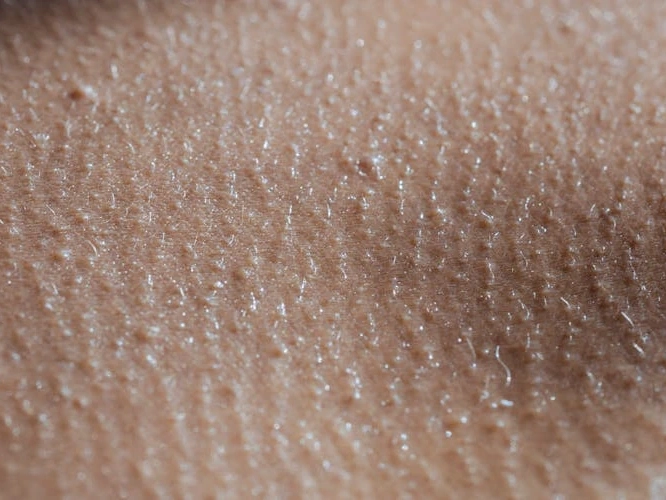
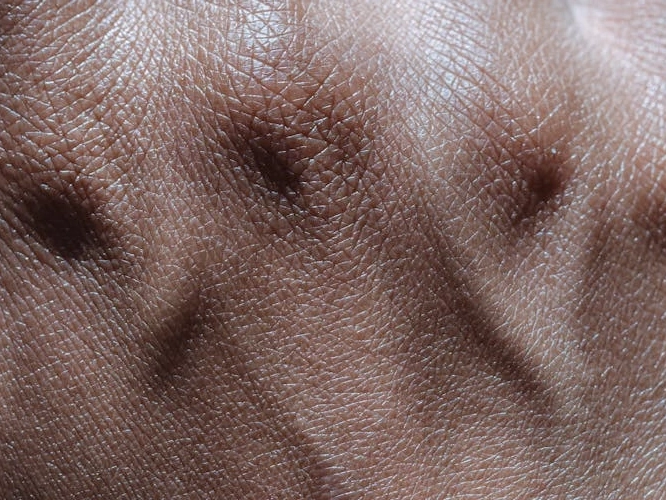
skin concerns
Are you affected?
If you're struggling with rough skin texture, you're not alone, and help is available. FTT Skin Clinics is committed to helping you achieve the best version of your skin. Let us guide you toward a smoother, more luminous complexion. Our expert team is dedicated to diagnosing the underlying causes of your skin concern, utilizing advanced skin analysis techniques to tailor a treatment plan that suits your unique skin needs.
Symptoms
Rough skin texture is characterized by a variety of symptoms that can affect the overall look and feel of your skin. When you touch your skin, it may feel bumpy or irregular, a condition often resulting from the accumulation of dead skin cells on the surface, which disrupts the skin’s smooth texture. Dryness is another common symptom, where the skin appears flaky or scaly due to a lack of moisture. This can be caused by not drinking enough water or not moisturizing properly, stripping the skin of its essential oils. Additionally, a dull appearance is a sign of rough skin texture, with the skin lacking radiance and seeming lifeless, often because dead skin cells block light reflection. Enlarged or visible pores can also indicate rough texture, as excess oil and debris stretch the pores. Lastly, flakiness, characterized by small, dry patches or scales, signals rough texture often due to extreme dryness or irritation.
-
Environmental Factors
Sun Exposure: Prolonged exposure to UV rays can damage the skin, leading to dryness and premature aging, which contributes to a rougher texture. Climate Conditions: Extreme weather conditions, such as cold and dry winter air or hot and humid summer weather, can deplete the skin’s moisture, exacerbating roughness. Pollution: Airborne pollutants can penetrate the skin, causing oxidative stress that breaks down collagen and elastin, leading to a rough and aged appearance.
-
Physiological Factors
Aging: As we age, our skin’s natural exfoliation process slows down, and the production of collagen decreases, leading to drier, less elastic skin prone to roughness.
Genetic Predisposition: Some individuals may be genetically inclined to have drier or thicker skin, which can naturally exhibit a rougher texture. Hormonal Changes: Fluctuations in hormones, especially during puberty, pregnancy, or menopause, can affect oil production and skin cell turnover, impacting skin texture.
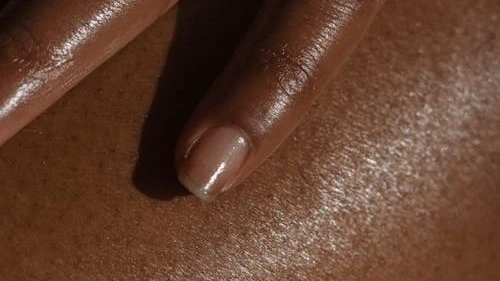

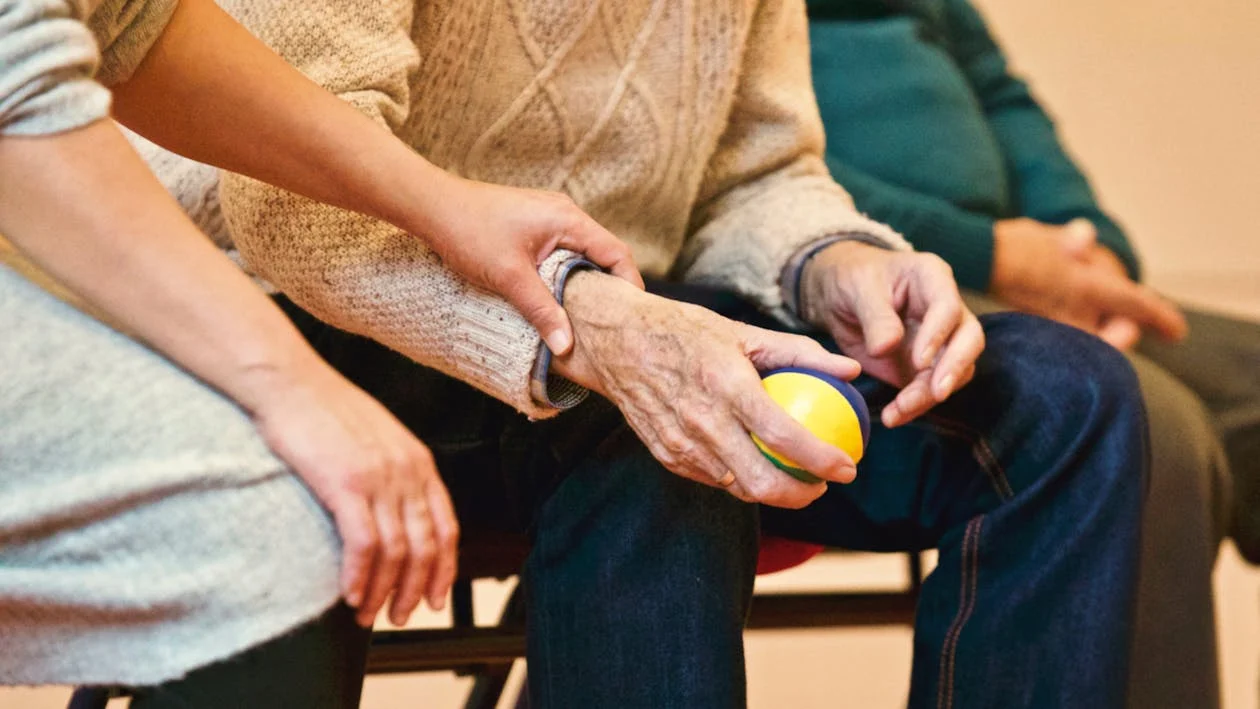
Frequently Asked Questions
What causes rough skin texture?
Rough skin texture can be caused by a variety of factors, including environmental damage, aging, poor skincare habits, and certain skin conditions. It’s often a result of dehydration, accumulation of dead skin cells, or reduced collagen production.
Can diet affect my skin texture?
Yes, your diet plays a crucial role in maintaining smooth skin. Diets rich in antioxidants, healthy fats, and vitamins can improve skin health, while processed foods and sugars might contribute to roughness and other skin issues.
How can I improve my skin texture at home?
Regular gentle exfoliation, consistent hydration, using products with active ingredients like retinol or vitamin C, and protecting your skin from sun damage can significantly improve skin texture.
Is exfoliation necessary for treating rough skin?
Yes, exfoliation helps remove dead skin cells that can make your skin feel rough. However, it’s important to choose a method that suits your skin type to avoid irritation.
How often should I exfoliate my skin?
This depends on your skin type and the exfoliation method. Generally, once or twice a week is sufficient for most skin types. Over-exfoliating can damage the skin barrier and worsen texture.
Can rough skin texture be a sign of aging?
Yes, as skin ages, it loses elasticity and the ability to retain moisture, leading to a rougher texture. Reduced cell turnover also contributes to accumulated dead skin cells.
Do I need to see a dermatologist for rough skin texture?
If your rough skin texture is persistent and doesn’t improve with at-home care, it’s a good idea to consult a dermatologist. They can identify underlying causes and recommend treatments.
Can hydration improve skin texture?
Absolutely. Hydrated skin is plumper, smoother, and has a healthier barrier function. Drinking plenty of water and using hydrating skincare products can improve texture.
What professional treatments are available for rough skin texture?
Professional treatments like chemical peels, microdermabrasion, and laser therapy can improve skin texture by promoting cell turnover and collagen production.
How can I prevent rough skin texture?
Preventing rough skin texture involves protecting your skin from the sun, avoiding harsh skincare products, staying hydrated, eating a balanced diet, and maintaining a consistent skincare routine.

Rough Skin Myths
Myth: Only dry skin can have a rough texture.
While dry skin is more prone to roughness due to lack of moisture, other skin types can also experience rough texture. Oily skin can suffer from texture issues due to excess sebum and dead skin cells leading to clogged pores and uneven skin. Combination and normal skin types are not immune to texture concerns, which can arise from external factors like environmental damage or inadequate skincare routines.
Myth: More exfoliation means smoother skin.
Over-exfoliation can strip the skin of its natural oils, leading to irritation, sensitivity, and even more texture issues. It’s important to exfoliate appropriately for your skin type and not overdo it. Gentle exfoliation a couple of times a week is usually sufficient for most skin types.
Myth: Drinking water is all you need to fix rough skin texture.
While staying hydrated is crucial for overall health and can help maintain skin hydration, it’s not a standalone cure for rough skin texture. A comprehensive skincare routine tailored to your skin’s needs, including proper cleansing, moisturizing, and sun protection, is essential for addressing texture concerns.
Myth: You can’t wear makeup if you have rough skin texture.
You can still wear makeup if you have rough skin texture, but the key is to prepare the skin properly and choose products that won’t exacerbate the issue. Primers can smooth the skin’s surface, and non-comedogenic, hydrating formulas can provide coverage without clogging pores or highlighting texture.
Myth: Rough skin texture will improve on its own without intervention.
While minor texture issues may improve with time, especially with natural cell turnover, more pronounced texture concerns often require a targeted skincare approach. Using products with active ingredients that promote cell renewal and collagen production, and seeking professional treatments can significantly improve skin texture.
How Can We Help?
At FTT Skin Clinics, we understand how challenging living with rough skin texture can be, affecting not just your skin but also your confidence and well-being. Our dedicated team of skincare professionals is here to help with a range of effective treatments and personalized care plans designed to suit your unique skin type and concerns.
Obagi Blue Peel® is a medical grade skin peel treatment that can only be administered by highly trained nurses, dermatologists, doctors and dentists. The Obagi Blue peel® results in the removal of a thin layers of aged and damaged skin resulting in tightened, less wrinkled, more youthful, clear skin. The Obagi Blue Peel® uses Trichloracetic Acid (TCA) as the active ingredient mixed with the patented Blue Base from Obagi.
The OBAGI BLUE PEEL TCA is a specially formulated chemical peel designed to significantly improve the texture of the skin by removing the top damaged layers, promoting cell renewal. This treatment is effective in addressing rough skin texture caused by aging, sun damage, and environmental effects. The addition of blue dye by Dr. Obagi not only makes the application process safer but also allows for more consistent results by enabling precise control over the peel’s depth. This targeted removal of skin layers stimulates the natural healing process, leading to the production of new, smoother, and healthier skin cells.
At FTT Skin Clinics, we carefully assess each client’s skin condition and goals to determine if the OBAGI BLUE PEEL TCA is the most suitable treatment. The procedure involves applying the TCA solution, enhanced with a blue dye, to the affected areas. The blue dye acts as a guide, ensuring even application and depth of penetration for optimal results. Our skilled practitioners meticulously monitor the peel process to achieve the desired effect without compromising skin safety.
For clients with significant rough texture issues, the OBAGI BLUE PEEL TCA offers a potent solution that can achieve more dramatic improvements than over-the-counter products or less intensive treatments. Its ability to deeply exfoliate and rejuvenate the skin can result in a noticeably smoother, more refined skin texture. Additionally, this peel can be customized to suit different skin types and concerns, making it a versatile option for many clients.
While the OBAGI BLUE PEEL TCA is effective for improving skin texture, it’s not suitable for everyone. Individuals with certain skin conditions, sensitivity, or those who cannot commit to the post-peel care regimen may need to consider alternative treatments. Recovery time and potential for peeling and redness immediately following the treatment are important factors to discuss during the consultation. FTT Skin Clinics prioritizes patient education and safety, ensuring that clients are fully informed of all aspects of their chosen treatment.
Choosing the OBAGI BLUE PEEL TCA at FTT Skin Clinics means opting for a professional, carefully managed approach to improving rough skin texture. With our expertise and commitment to client care, we strive to achieve the best possible outcomes, helping you reveal smoother, healthier-looking skin.
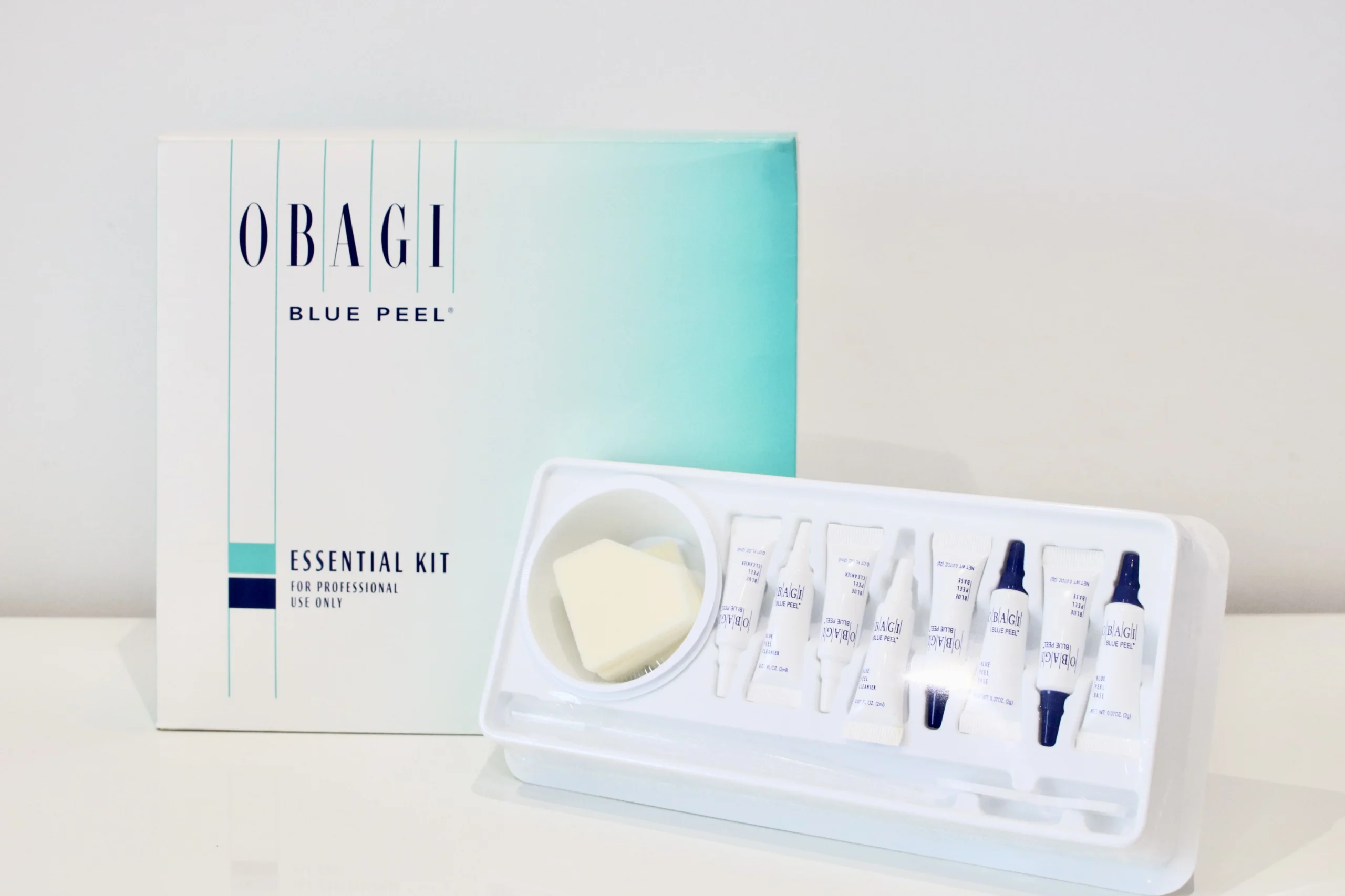
Treatment Time
60 Minutes
Visible Results
1 Week
Full Recovery
1 Week
Duration
1 Year
Sensitivity Time
10 Days
Anaesthetic
Topical & Oral
Back to Work
24 Hours
No. of Treatments
Yearly
Whether you call it dermal needling, collagen induction therapy, or microneedling, there’s one thing for sure all our FTT Skin Clinics staff have the most information, knowledge and expertise on the science behind one of the industry’s hottest trends, as well how to safely get results having been taught by Dr. Lance Setterfield, renowned author and one of the world’s foremost Microneedling experts.
Microneedling is a minimally invasive procedure that targets rough skin texture by promoting the skin’s natural healing process. It involves using fine needles to create micro-injuries in the skin, which stimulates collagen and elastin production. This increase in collagen can smooth out the skin’s surface, reducing the appearance of rough texture, scars, and even fine lines. The procedure effectively rejuvenates the skin from within, leading to a smoother, more youthful appearance.
At FTT Skin Clinics, our approach to microneedling begins with a thorough skin assessment to determine if it’s the right treatment for your specific concerns. During the procedure, a professional-grade microneedling device is used to ensure precise control and uniformity in creating micro-injuries. We focus on areas of concern, adjusting the needle depth according to the skin’s condition and the treatment goals. Our skilled practitioners are meticulous in their technique, aiming for the best results with minimal discomfort.
For clients struggling with rough skin texture, microneedling offers a compelling solution due to its ability to naturally regenerate and repair the skin. Unlike some chemical peels or laser treatments, microneedling is suitable for all skin types, including those with sensitive skin. Its ability to enhance the effectiveness of topical treatments—by increasing their penetration into the skin—further supports the skin’s rejuvenation process.
While microneedling is widely beneficial, it’s not without its considerations. The treatment requires a short downtime, with potential redness and sensitivity post-procedure. It’s crucial for clients to follow a post-care regimen and protect their skin from the sun to ensure optimal healing and results. Those with active acne or certain skin conditions may need to wait until their skin clears or consider alternative treatments. At FTT Skin Clinics, we provide comprehensive pre- and post-treatment care instructions to ensure your skin heals beautifully and achieves the desired smoother texture.
Opting for microneedling at FTT Skin Clinics means choosing a treatment backed by a deep understanding of skin biology and healing processes. Our commitment to delivering personalized care ensures that every client receives a treatment plan tailored to their unique skin needs, paving the way for smoother, more radiant skin.


Treatment Time
60 Minutes
Visible Results
1 Week
Full Recovery
24 Hours
Duration
Treatment Plan
Sensitivity Time
24 Hours
Anaesthetic
Topical
Back to Work
24 Hours
No. of Treatments
Quarterly
Acne Scarring
SKIN CONCERNS
What is Acne Scarring?
Acne scarring is a common issue for many who have had severe or long-lasting acne. While some people get through their teen years with just a few pimples, others suffer from acne that can leave deep and noticeable scars. These scars can last for years, serving as a constant reminder of their struggle with acne.
skin concerns
What is Acne Scarring?
Acne scarring is a significant concern for many who've battled with acne, a widespread skin condition that affects most people at some point in their lives. While some navigate their teenage years with minor blemishes, others face a more intense struggle with acne that can lead to deep scars, lasting well into adulthood. Acne scarring not only affects the skin's appearance but can also deeply impact a person's self-confidence. Although there is no definitive cure for acne itself—which involves blackheads, whiteheads, and more severe pus-filled spots—it's crucial to address it early and effectively to prevent scarring. Acne typically starts during puberty but can persist beyond the early twenties for some. The condition results from a combination of clogged pores, excess sebum production, and bacteria on the skin, which together can cause significant and sometimes scarring breakouts.
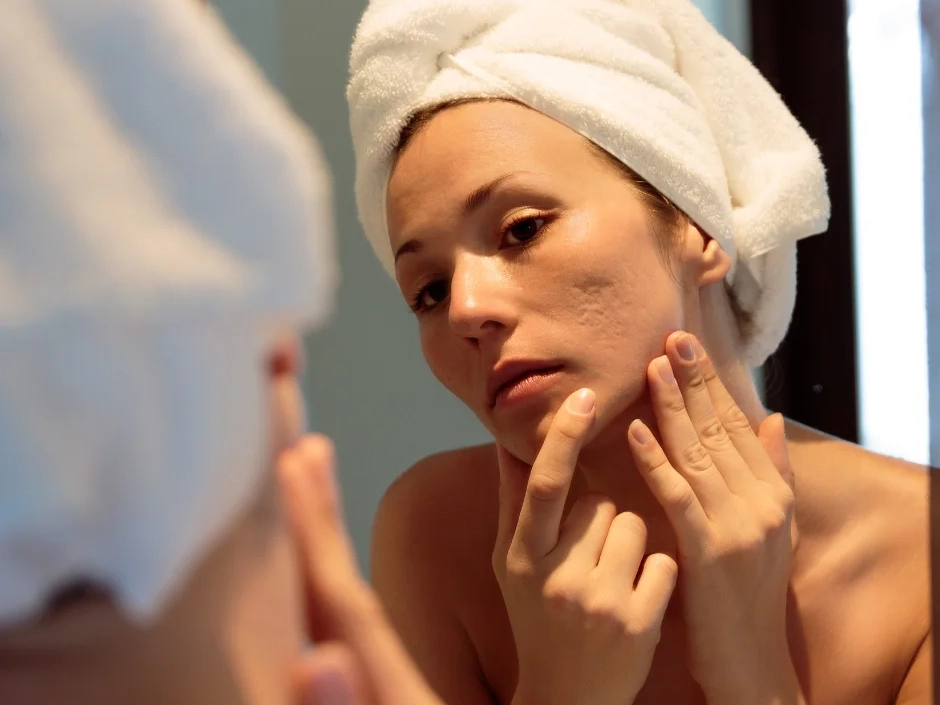
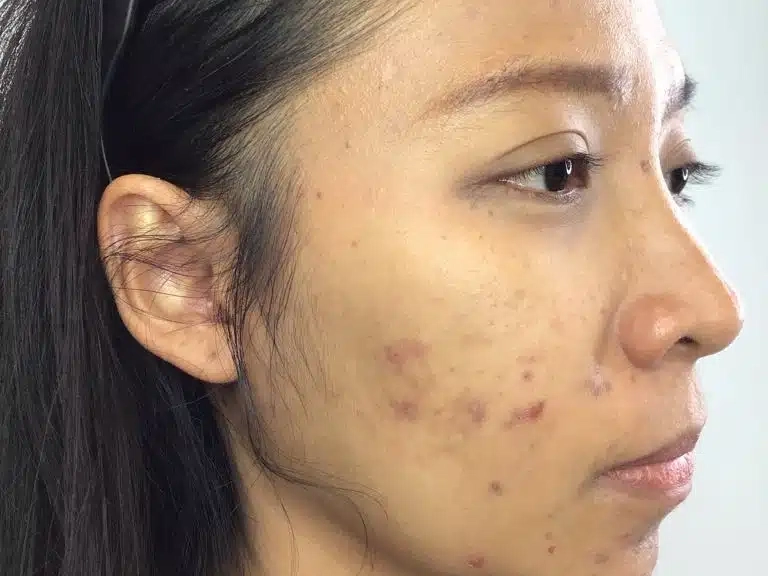
skin concerns
Are you affected?
Acne scarring is a significant concern for many who have experienced severe or persistent acne, underscoring the importance of specialized treatments and skincare routines tailored to mitigate and heal these scars. FTT Skin Clinics excels in offering advanced solutions for those dealing with acne scarring, providing personalized care designed to not only treat the scars but also prevent future occurrences. Our holistic approach to managing acne scarring includes an in-depth analysis of acne's underlying causes, ensuring we target the scarring at its source for more effective and lasting results. We feature a range of solutions, from cutting-edge topical applications to innovative technological therapies, all customized to suit your specific skin needs and the extent of scarring. Beyond mere treatment, our guidance encompasses comprehensive strategies for acne scar prevention, aiming to sustain clear, smooth skin and avert the recurrence of acne and its lasting marks.
Causes
Acne scarring often arises as a direct consequence of the acne formation process. When the skin's tiny hair follicles become clogged with excess sebum, dead skin cells, and bacteria, it sets the stage not just for acne but for the scarring that can follow. The development of acne, heavily influenced by hormonal factors like androgens, can lead to inflammation and the subsequent breakdown of surrounding skin tissue. As the body attempts to repair these lesions, it can lead to the uneven skin texture and depressions known as acne scars. Teenagers and young adults are particularly susceptible to this form of scarring due to the hormonal changes experienced during these years. Proactively incorporating acne management strategies and treatments into your skincare routine can significantly mitigate the risk of scarring, fostering the maintenance of smoother, healthier-looking skin.
Hormonal Influences on Acne Scarring
Hormonal fluctuations are a prime catalyst for acne, which, if left untreated or managed poorly, can lead to acne scarring. During puberty, pregnancy, menstruation, and even through periods of stress, the body experiences shifts in hormone levels, particularly androgens. These hormones stimulate the sebaceous glands in the skin, leading to increased oil production. When this excess oil combines with dead skin cells, it clogs pores, forming acne lesions that can eventually scar the skin. Managing these hormonal surges through lifestyle adjustments, medical treatments, or skincare routines can help mitigate the risk of developing persistent acne and subsequent scarring.
External Factors Contributing to Acne Scarring
Inadequate Skincare and Aggravation:
Improper skincare routines, such as harsh scrubbing, using comedogenic (pore-clogging) products, or neglecting daily cleansing, can exacerbate acne’s severity, increasing the likelihood of scarring. Gentle cleansing and the use of non-comedogenic skincare products are essential in preventing acne lesions that can lead to scars.
Environmental Aggressors:
Pollutants and high humidity levels can also contribute to the clogging of pores. These environmental factors can increase the skin’s oiliness and exacerbate acne conditions, making effective cleansing and protective skincare routines crucial in urban or highly polluted areas to prevent acne and reduce the risk of scarring.
Understanding these causes and taking proactive steps to manage acne effectively are vital in preventing the formation of acne scars. At FTT Skin Clinics, our approach to acne scarring encompasses a deep understanding of these underlying causes, enabling us to offer targeted treatments and preventative strategies tailored to individual needs, promoting healthier skin and minimizing the impact of acne scarring.


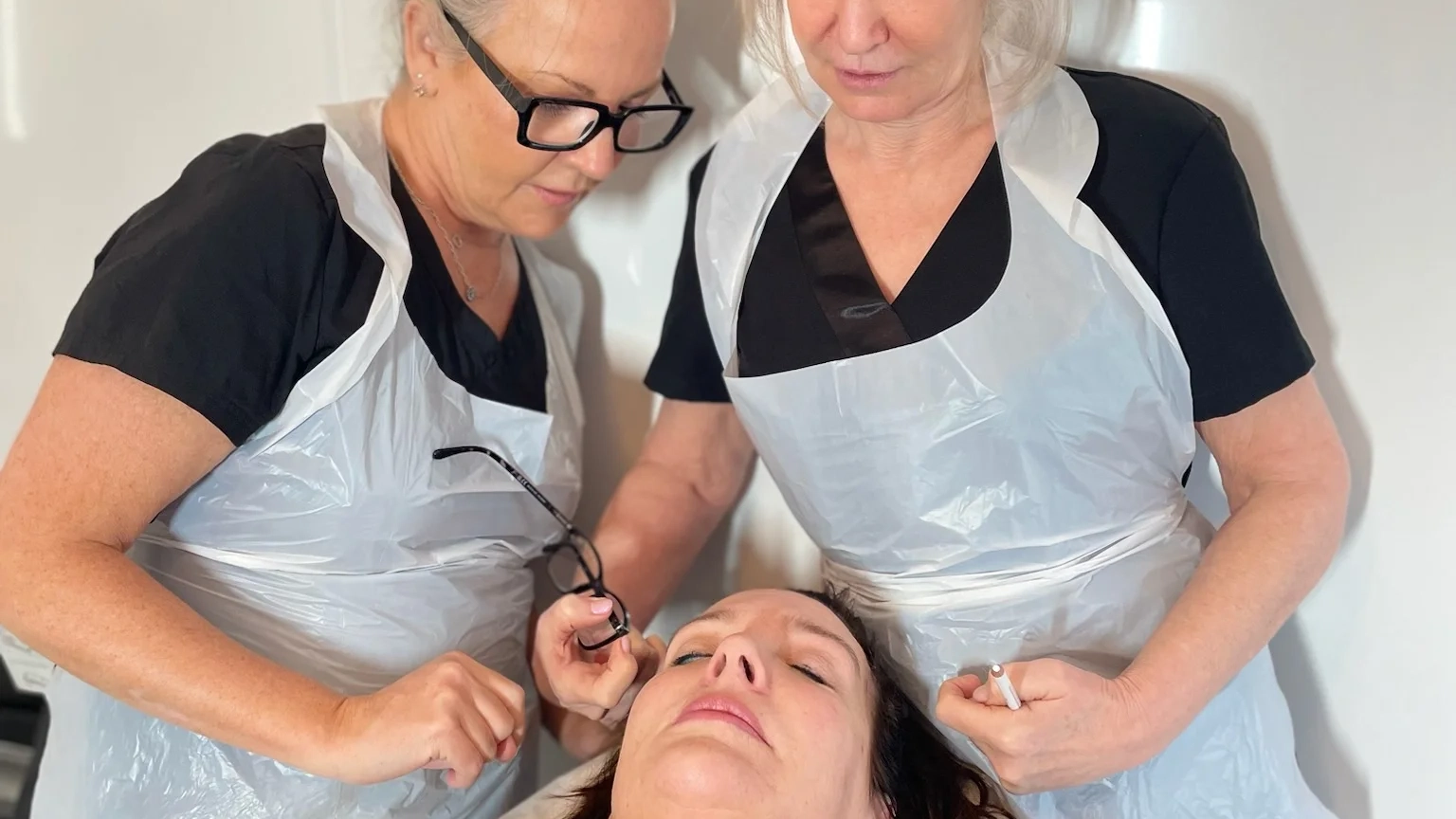

Frequently Asked Questions
What causes acne scarring?
Acne scarring occurs when acne lesions, such as cysts or nodules, damage the skin and the tissue beneath it. As the acne clears, the body tries to repair this damage, leading to scarring.
Are there different types of acne scars?
Yes, there are several types of acne scars, including atrophic (depressed) scars, hypertrophic (raised) scars, and post-inflammatory hyperpigmentation.
Can acne scars be prevented?
Preventing acne lesions from forming is the best way to prevent acne scars. This involves using the right skincare products, avoiding picking or popping pimples, and seeking early treatment for acne.
How can I treat acne scarring?
Treatment options vary depending on the type and severity of scarring and include topical treatments, chemical peels, laser therapy, microneedling, and, in some cases, surgical procedures.
Do home remedies work for acne scarring?
While some home remedies may help with mild scarring or discoloration, professional treatments are typically more effective for significant acne scarring.
Is it possible to completely remove acne scars?
While some treatments can significantly reduce the appearance of acne scars, completely removing them may not be possible. The goal of treatment is often to improve the appearance of scars, making them less noticeable.
How long does it take to see results from acne scar treatment?
The time it takes to see improvement depends on the type of treatment and the severity of the scarring. Some treatments, like laser therapy, may show results after a few sessions, while others may take several months.
Are acne scar treatments painful?
Some treatments may cause discomfort, but many options involve minimal pain. Your skincare professional can discuss pain management options with you.
Can acne scars worsen over time if untreated?
Untreated acne scars may appear more noticeable as the skin loses collagen with age. However, they don’t necessarily worsen; their visibility can increase due to changes in skin texture and elasticity.
Will insurance cover the cost of acne scar treatment?
Insurance coverage varies. Many consider acne scar treatments cosmetic and may not cover them. It’s important to check with your insurance provider.
Addressing acne scarring requires a personalized approach to determine the most effective treatment plan. At FTT Skin Clinics, our experts are dedicated to providing tailored solutions to help improve the appearance of acne scars, leveraging the latest in skincare advancements for optimal results.

Acne Scarring Myths
Myth: Only severe acne can cause scarring:
Even mild acne can lead to scarring if not properly treated or if pimples are picked or popped. The severity of acne doesn’t always predict scarring, as individual skin healing properties also play a significant role.
Myth: Sun exposure will help fade acne scars:
Sun exposure can actually darken acne scars and make them more noticeable. UV rays stimulate melanin production, leading to further discoloration. It’s crucial to protect healing skin with sunscreen.
Myth: Acne scars are entirely preventable:
While early and effective treatment of acne can reduce the likelihood of scarring, some individuals are more prone to scars due to genetics and skin type. Preventative measures can reduce but not always completely prevent scarring.
Myth: Over-the-counter acne products are enough to treat acne scars:
Over-the-counter products may help mild scarring, but more significant scars often require professional treatments such as laser therapy, microneedling, or chemical peels, offered by skincare clinics like FTT Skin Clinics.
Myth: Acne scars are permanent and cannot be treated:
While some acne scars can be challenging to treat, advancements in dermatological treatments have made it possible to significantly improve their appearance. A combination of professional treatments can lead to substantial improvements.
Myth: Picking at acne won’t lead to scarring if done “correctly”:
Picking or attempting to pop acne can cause immediate damage to the skin and increase the risk of infection and scarring. It’s best to leave blemishes alone and let them heal naturally or seek professional treatment.
How Can We Help?
Hydrofacial is a multi-step facial treatment that gently cleanses, exfoliates, extracts impurities, and hydrates the skin using water-based solutions and suction, leaving it refreshed, nourished, and glowing.
The Hydrofacial treatment offers a powerful solution for those dealing with acne scarring, employing a gentle yet effective approach focused on hydration and skin renewal. Here’s why Hydrofacial is a match for acne scar care:
Deep Cleansing and Gentle Exfoliation: Utilizing a lactic acid solution, Hydrofacial softly removes the outermost layer of dead skin, helping to smooth out acne scars without harsh scrubbing. This careful exfoliation is key in promoting a more even skin texture and reducing the appearance of scarring.
Hydration and Nourishment: Scars from acne can leave the skin feeling uneven and textured. The hydrating boost from Hydrofacial treatments infuses the skin with moisture, aiding in the softening and minimizing of acne scars and helping to restore a balanced complexion.
Anti-inflammatory Effects: Especially formulated to address the concerns of skin prone to acne and scarring, Hydrofacial includes ingredients like salicylic acid. These components are effective in reducing inflammation and promoting healing, which is crucial in the treatment of acne scars.
Personalized Treatment Plans: At FTT Skin Clinics, customization is at the heart of what we do. Each Hydrofacial treatment is tailored to the individual, with a thorough skin evaluation to ensure the procedure targets your specific scarring concerns. This approach ensures the Hydrofacial not only revitalizes and moisturizes your skin but also directly addresses and improves the appearance of acne scars.
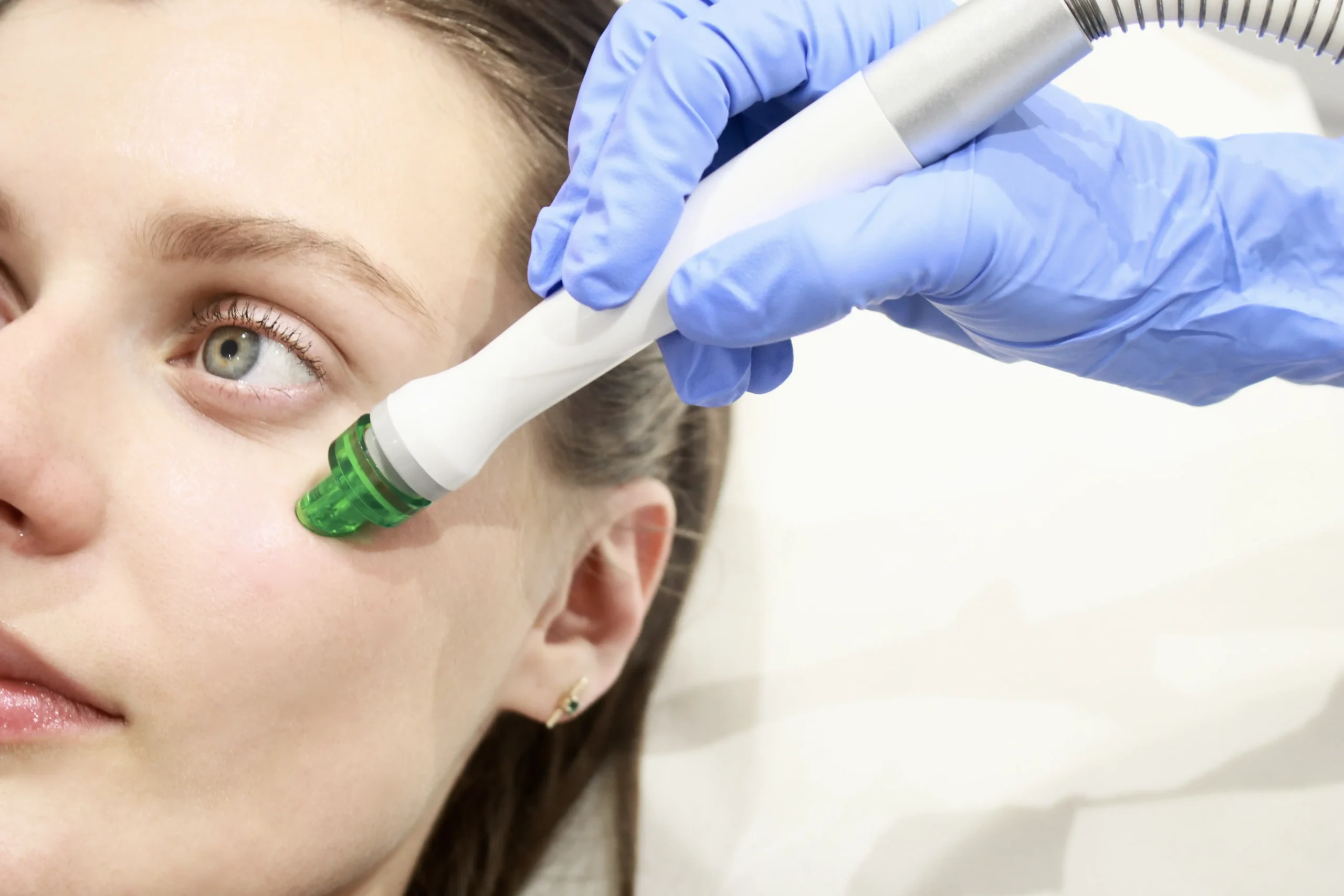
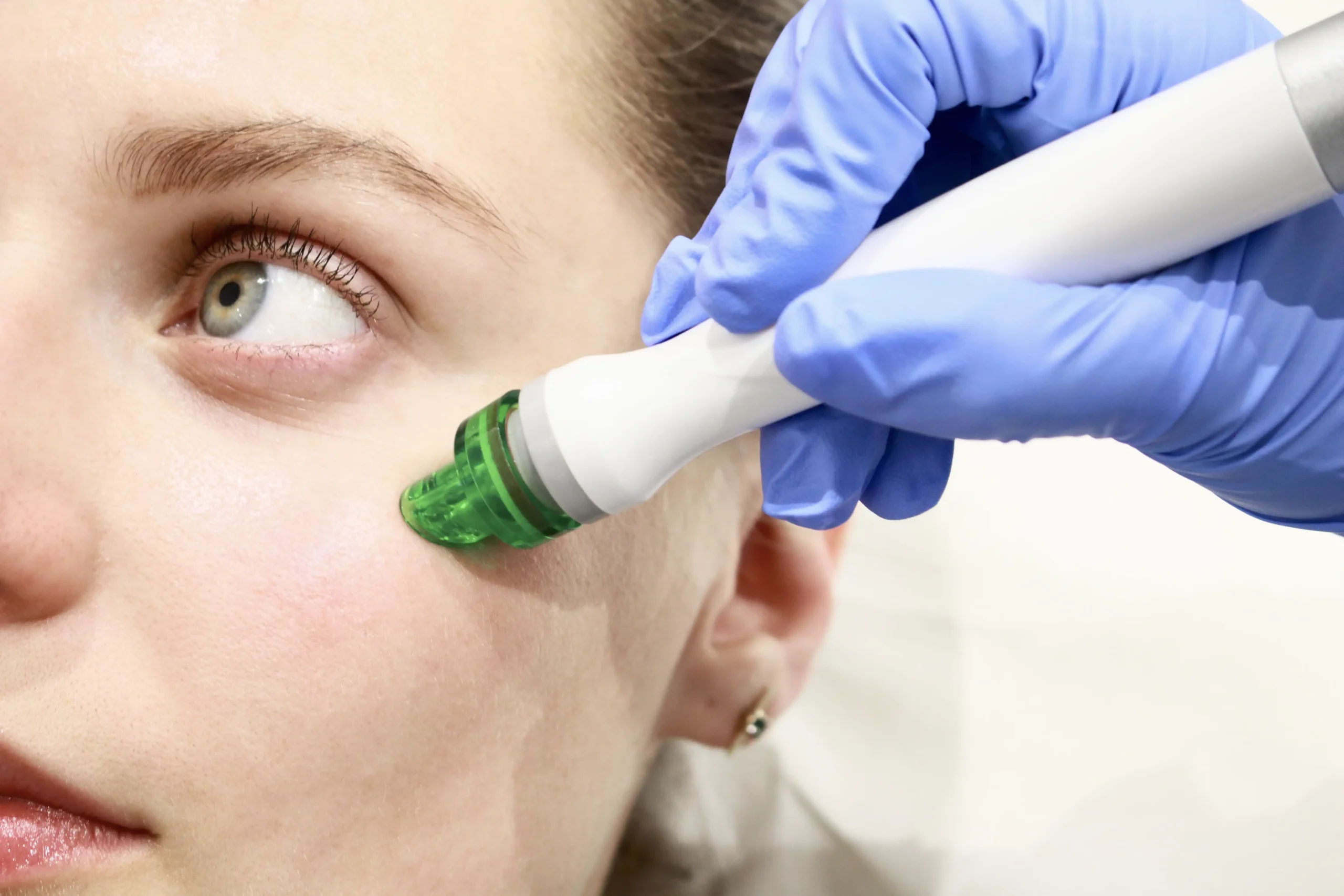
Treatment Time
30 Minutes
Visible Results
Immediate
Full Recovery
Immediate
Duration
1 Month
Sensitivity Time
Not Avaliable
Anaesthetic
Not Avaliable
Back to Work
Immediate
No. of Treatments
Monthly
Microneedling is a cosmetic procedure that involves creating tiny punctures in the top layer of the skin using fine needles. This minimally invasive treatment is designed to stimulate the skin’s natural healing process, leading to the production of collagen and elastin.
Microneedling is a minimally invasive skin rejuvenation procedure that involves the use of a device equipped with fine needles. These needles create tiny punctures in the top layer of the skin, which triggers the body’s natural wound healing processes. This response stimulates collagen and elastin production, crucial components in maintaining the skin’s structure and elasticity. By promoting the regeneration of new skin cells, microneedling can effectively improve the texture and appearance of the skin.
At FTT Skin Clinics, microneedling is utilized as a targeted treatment for acne scarring. The procedure’s ability to boost collagen production is particularly beneficial for acne scars, which often result from the loss of skin tissue. As the skin heals from the microneedling process, it becomes firmer and smoother, reducing the depth and visibility of scars. The increased collagen can also help to fill in indented scars or depressions left by acne, creating a more even skin surface.
Moreover, the tiny channels created by the microneedling process allow for better absorption of topical treatments. This means that any serums or skincare products applied post-procedure can penetrate deeper into the skin, enhancing their effectiveness. FTT Skin Clinics may combine microneedling with specific serums or growth factors that are known to aid in scar reduction and skin repair, further optimizing the treatment’s outcomes for acne scarring.
Tailored specifically to each client’s needs, microneedling sessions at FTT Skin Clinics can be adjusted in terms of needle depth and frequency, ensuring that the treatment is as effective as possible for the type and severity of acne scarring being addressed. With a series of treatments, patients can see significant improvements in the appearance of acne scars, leading to smoother, healthier-looking skin and a boost in confidence.


Treatment Time
30 Minutes
Visible Results
6 Weeks
Full Recovery
48 Hours
Duration
1 Year
Sensitivity Time
Up to 48 Hours
Anaesthetic
Local Injection
Back to Work
24 Hours
No. of Treatments
Treatment Plan
One of the cornerstone treatments we offer for managing and alleviating acne is professional extractions. This procedure involves carefully clearing clogged or obstructed pores, including blackheads, whiteheads, and the various forms of acne blemishes that can mar the skin’s appearance.
Extractions, a fundamental component of acne treatment, involve the careful removal of clogged pores, including blackheads, whiteheads, and other forms of acne lesions. While extractions themselves do not directly treat acne scars, they play a crucial preventative role at FTT Skin Clinics. By professionally removing acne-causing blockages, extractions help to prevent the formation of new acne lesions that could potentially lead to scarring.
In the context of acne scarring treatment, extractions are used to clear the skin of existing acne, creating a cleaner, more receptive surface for subsequent acne scar treatments. A clear complexion is essential for the effectiveness of treatments aimed at reducing acne scars, such as chemical peels, microneedling, and laser therapy. By minimizing active acne outbreaks, these treatments can work more effectively, promoting the skin’s healing process and the reduction of visible scars.
At FTT Skin Clinics, our skincare professionals understand the importance of treating acne at its source to prevent future scarring. Extractions are performed with precision and care, ensuring that the skin is not damaged in the process, which could otherwise contribute to scarring. Following extractions, our experts may recommend a tailored treatment plan that includes procedures specifically designed to target acne scars, helping to improve the skin’s texture and appearance.
Through a combination of extractions and targeted scar treatments, FTT Skin Clinics offers a comprehensive approach to managing acne and minimizing the risk of scarring. This holistic strategy ensures that clients not only achieve clearer skin but also address the underlying causes of acne, preventing new scars from forming and treating existing scars for healthier, smoother skin.

Treatment Time
30 Minutes
Visible Results
Immediate
Full Recovery
24 Hours
Duration
24 Hours
Sensitivity Time
24 Hours
Anaesthetic
None
Back to Work
Immediate
No. of Treatments
Monthly
The newest treatment within the Medical Aesthetics Space, forecasted to be one of the biggest and most popular this year. Polynucleotides target your skin cells producing Collagen and Elastin to give your skin the plumpness and youthful bounce it desires, as well as smoothing our skin and wrinkles.
By targeting skin cells responsible for producing Collagen and Elastin, Polynucleotides offer a dynamic solution to revitalize your skin, restoring its plumpness and youthful resilience while smoothing out the texture, including the crepey skin and wrinkles often resulting from acne scarring.
Acne scars, a common aftermath of severe or improperly treated acne, can leave the skin with uneven textures and depressions. The Polynucleotide treatment works by stimulating the fibroblasts in the skin, promoting cell renewal and enhanced collagen production. Made from purified fragments of fish DNA extracted from salmon or trout sperm—which closely mirrors human DNA—this treatment excels in encouraging skin repair and renewal, making it exceptionally suitable for those grappling with the visual remnants of acne.
By providing a boost in collagen and elastin synthesis, Polynucleotides effectively improve the skin’s elasticity and firmness, gradually reducing the appearance of indented acne scars and contributing to a smoother skin surface. Additionally, this treatment addresses skin dehydration and laxity, conditions that can exacerbate the appearance of acne scarring, by enhancing the skin’s hydration and overall tone.
At FTT Skin Clinics, the Polynucleotide treatment is not limited to the facial area. It can be applied to the neck, hands, décolletage, knees, and chest—areas where signs of aging and the effects of acne scarring can be most prominent. Beyond skin renewal, this advanced treatment also targets unstable molecules that accelerate the aging process, providing an all-encompassing solution for rejuvenated, healthier-looking skin.
For individuals seeking an effective remedy for acne scarring, Polynucleotides represent a promising option, offering a path to diminish scars and enhance skin quality. Each treatment session is tailored to the individual’s skin concerns, ensuring a personalized approach to achieving and maintaining smooth, revitalized skin.
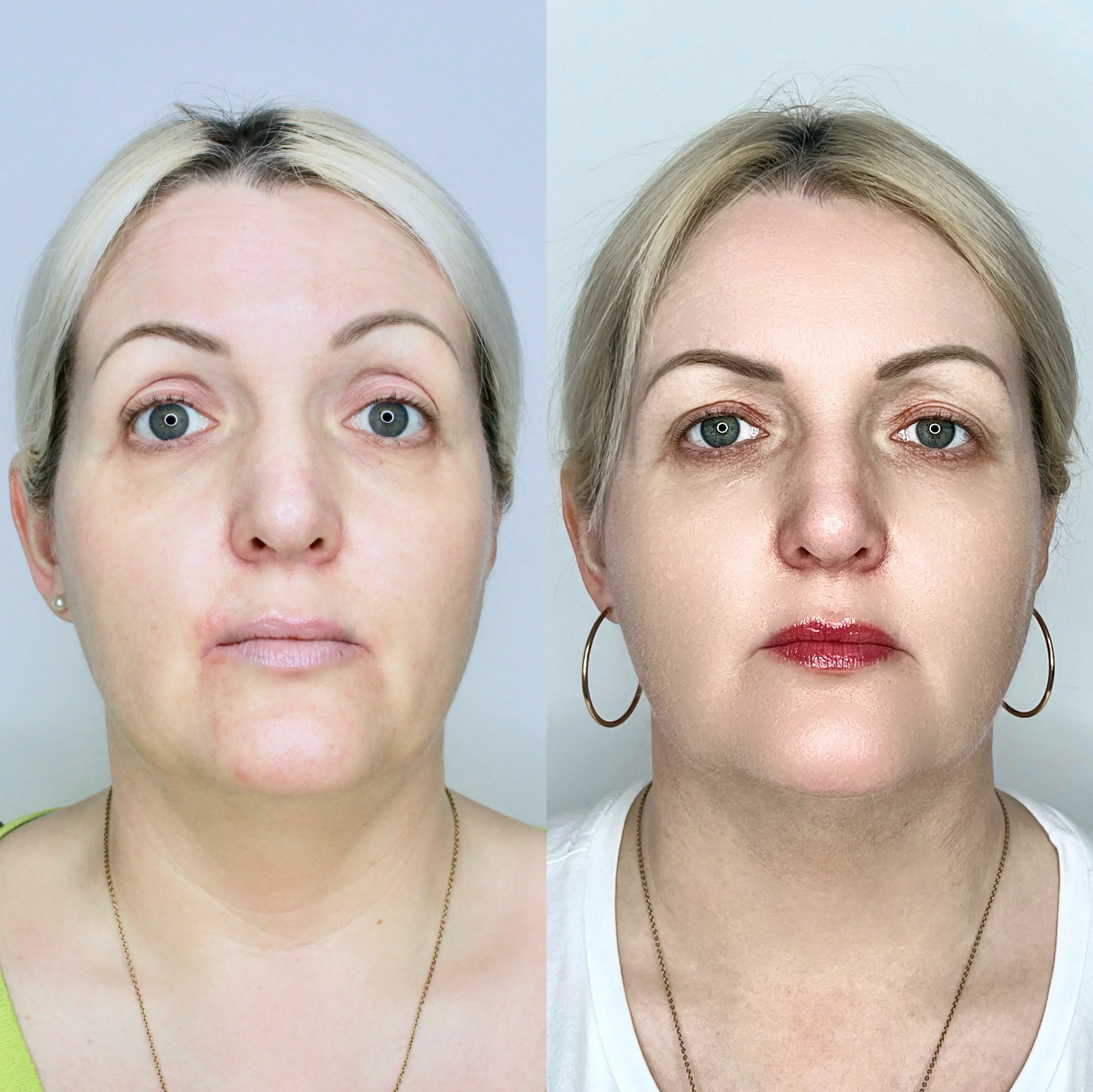
Treatment Time
30 Minutes
Visible Results
6 Weeks
Full Recovery
48 Hours
Duration
3 Months
Sensitivity Time
48 Hours
Anesthetic
Topical
Back to Work
24 Hours
No. of Treatments
Quarterly
SKIN CONCERNS
At Home Acne Scarring Care Tips
At FTT Skin Clinics, we empower you with practical tips to manage acne scarring and enhance the effectiveness of your skincare efforts. For those enduring the psychological impact of acne scarring, seeking support and adopting a positive skincare mindset are essential steps towards healing both skin and self-esteem.
Complementing our clinic treatments, we offer a wide range of skincare products designed to enhance and prolong the effects of your professional sessions. Our experts can recommend products tailored to your skin type, ensuring a seamless transition between clinic treatments and at-home care.
Your At-Home Skincare Routine for Acne Scarring
We believe in empowering you with the knowledge and tools for effective at-home skincare. Our specialists provide guidance on incorporating at-home treatments into your routine, ensuring continuity between clinic visits.
At FTT Skin Clinics, our commitment extends beyond the clinic doors. We are dedicated to supporting you at every step, from in-depth skin analyses to personalized treatments and ongoing skincare guidance. Discover the transformative potential of our treatments and embrace the journey to clear, radiant, and healthy skin. Break free from acne’s cycle with our evidence-based treatments and dedicated support, guiding you towards scar free, confident skin.
Sun Protection:
Protecting your skin from the sun is crucial. UV exposure can darken acne scars and make them more visible. Use a broad-spectrum sunscreen with at least SPF 30 daily to protect your skin and help prevent the darkening of scars.
Topical Treatments:
Over-the-counter creams and gels containing ingredients like retinol, vitamin C, niacinamide, and salicylic acid can help reduce acne scars by promoting cell turnover and collagen production, and reducing inflammation.
Gentle Exfoliation:
Regular, gentle exfoliation can remove dead skin cells and promote new cell growth. Products containing alpha hydroxy acids (AHAs) or beta hydroxy acids (BHAs) can be particularly effective. However, be careful not to over-exfoliate, as this can irritate your skin and worsen scars.
Natural Remedies:
Some natural ingredients have properties that may help reduce the appearance of acne scars. Aloe vera, for example, is known for its soothing and anti-inflammatory properties. Applying aloe vera gel directly to scars may help to soften and reduce them. Honey, particularly raw honey, is another natural ingredient that can be applied to scars due to its antibacterial and healing properties.
Hydration:
Keeping your skin well-hydrated can improve its texture and reduce the appearance of acne scars. Use a non-comedogenic moisturizer to keep your skin hydrated without clogging your pores.
Avoid Picking and Touching:
Picking at scars or acne can worsen scarring by damaging the skin further. It’s important to resist the urge to pick and to keep your hands away from your face as much as possible.
Pigmentation
What is Pigmentation?
Pigmentation refers to the coloring of the skin, which is determined by the amount of melanin produced by melanocytes in the epidermis. Melanin is the pigment responsible for giving skin, hair, and eyes their color. Variations in skin color among individuals are primarily due to differences in melanin content and distribution.
What is Pigmentation?
Pigmentation refers to the coloring of the skin, which is determined by the amount of melanin produced by melanocytes in the epidermis. Melanin is the pigment responsible for giving skin, hair, and eyes their color. Variations in skin color among individuals are primarily due to differences in melanin content and distribution. Pigmentation disorders can lead to skin color changes, either causing skin to darken (hyperpigmentation) or lighten (hypopigmentation). Hyperpigmentation can occur for several reasons, including overexposure to the sun, inflammation, certain diseases, hormonal changes (as seen in conditions like melasma), and reactions to drugs. Common forms of hyperpigmentation include age spots, melasma, and post-inflammatory hyperpigmentation, which occurs after an injury or skin inflammation like acne. Hypopigmentation may result from genetic conditions, skin damage, burns, infections, or certain illnesses, leading to patches of skin that are lighter than the surrounding areas.
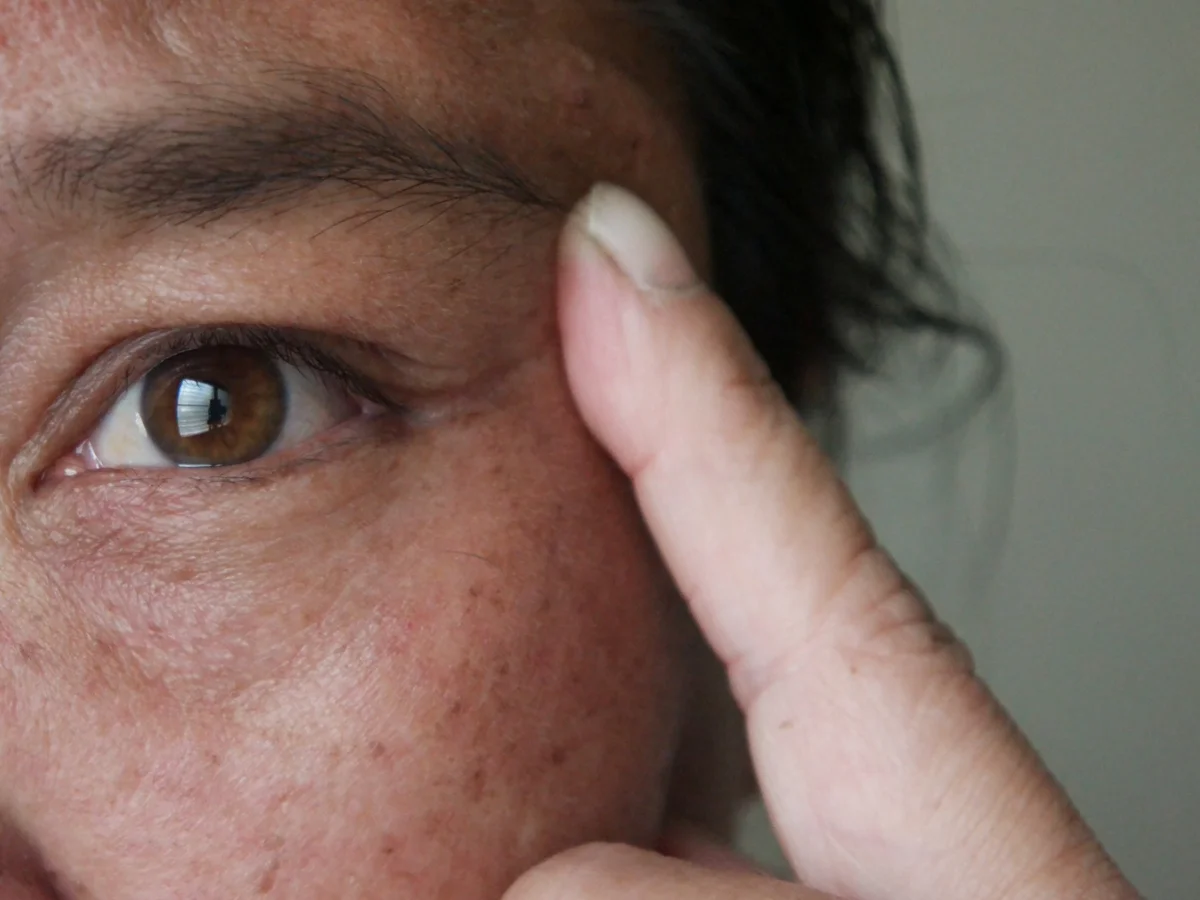
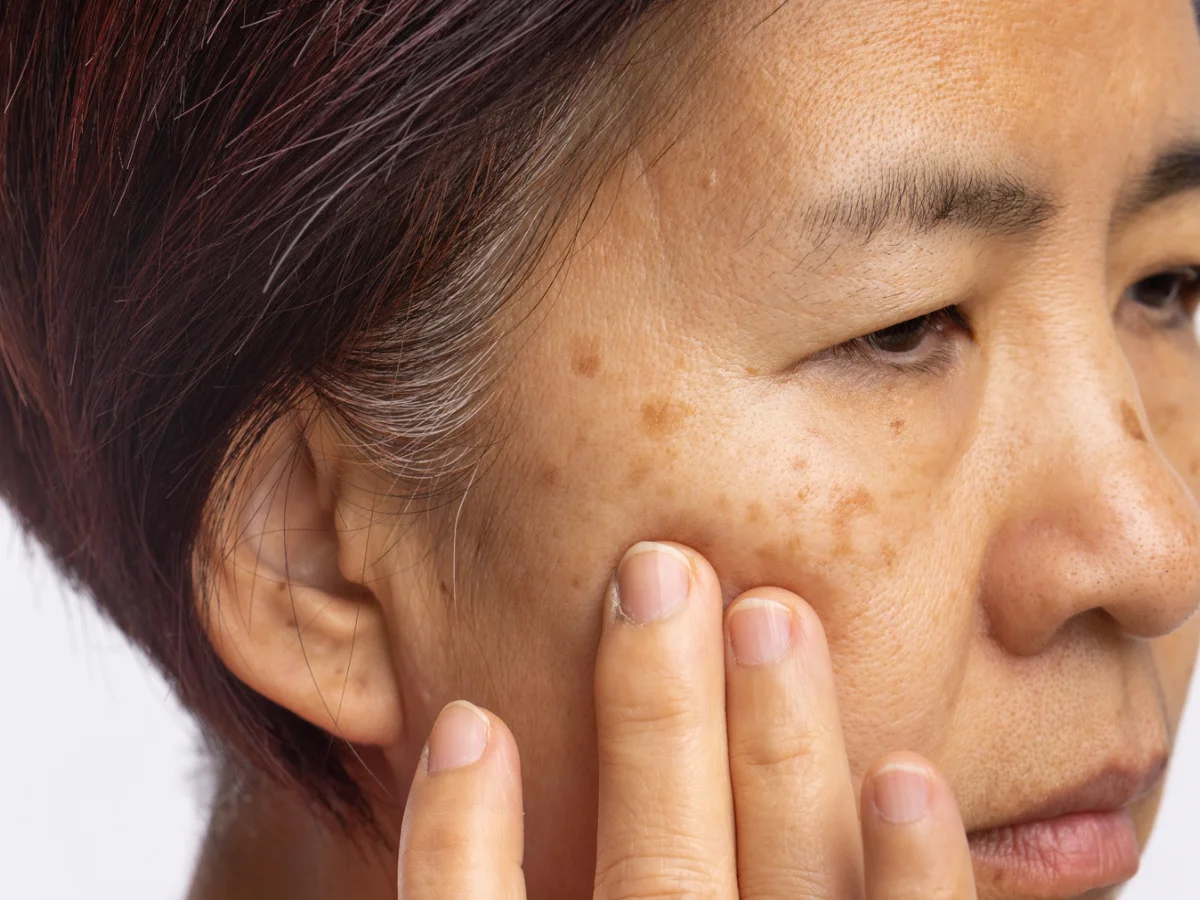
skin concerns
Are you affected?
Pigmentation issues can affect anyone, no matter their age or skin type, showing just how common this skin concern is. At FTT Skin Clinics, we're here to help everyone with their pigmentation, using the latest treatments and personalized care. We take a close look at what's causing your pigmentation, like sun damage, hormonal changes, or skin injuries, to make sure we're treating it right. Our clinic offers a range of treatments, from creams to light and laser therapies, all chosen to fit exactly what your skin needs. Plus, we don't just focus on treating pigmentation; we also teach you how to keep your skin looking its best and prevent new pigmentation spots from forming.
Causes
Pigmentation, or changes in skin color, can result from a variety of factors that impact the skin in distinct ways. Here’s a deeper look into the common causes of pigmentation and how they affect your skin:
Sun Exposure
Exposure to the sun’s ultraviolet (UV) rays is a primary cause of pigmentation. The UV radiation increases melanin production, the natural pigment that colors your skin. This often leads to the development of sunspots or age spots, which are more commonly observed in sun-exposed areas such as the face, hands, and arms. Frequent or prolonged sun exposure without adequate protection accelerates this type of pigmentation, underscoring the importance of using sunscreen to prevent these pigment changes.
Hormonal Changes
Hormonal fluctuations can significantly influence pigmentation, especially in conditions like melasma, also known as the “mask of pregnancy.” This type of pigmentation typically appears during pregnancy or with the use of contraceptive pills. The increased levels of estrogen and progesterone can stimulate excess melanin production, resulting in dark, irregular patches primarily on the face. Managing hormonal pigmentation may require treatments that address the hormonal imbalance in addition to topical treatments that lighten the pigmented areas.
Inflammation
Post-inflammatory hyperpigmentation (PIH) is another common cause of pigmentation that occurs following skin inflammation or injury. Conditions such as acne, eczema, burns, or cuts can lead to PIH, where the skin responds by producing more melanin in the affected areas, leading to darker patches. Treatment for PIH includes using anti-inflammatory skin care products and treatments that focus on reducing melanin production in the hyperpigmented spots.
Genetic Factors
Genetic predisposition plays a role in certain types of pigmentation such as freckles, which are small, concentrated spots of melanin. Freckles are a hereditary trait and are more prominent in individuals with lighter skin who are genetically predisposed to this type of pigmentation.
Certain Medications
Various medications can induce pigmentation as a side effect. Drugs such as certain chemotherapy agents, antimalarials, antiseizure medications, and some antibiotics can trigger increased melanin production, leading to noticeable skin pigmentation changes. In such cases, consultation with a healthcare provider is necessary to adjust the medication if possible and manage the pigmentation.
Medical Conditions
Certain health conditions can also cause changes in pigmentation. For example, Addison’s disease can lead to hyperpigmentation, which is attributed to increased levels of adrenocorticotropic hormone (ACTH) that stimulate melanin production. This type of pigmentation often presents as darkening of the skin in both exposed and unexposed areas, including joints and scars.
Aging
Age-related pigmentation, such as age spots or liver spots, is commonly due to cumulative sun exposure over the years but is also influenced by the natural decrease in skin’s regenerative capabilities. As the skin ages, it regenerates less effectively, which can allow pigmentation to become more pronounced.
Understanding these causes helps in formulating effective treatment and prevention strategies for managing pigmentation. Treatments may include topical lightening agents, laser therapy, and preventative measures such as rigorous sun protection and appropriate skincare routines tailored to reduce or control pigmentation.


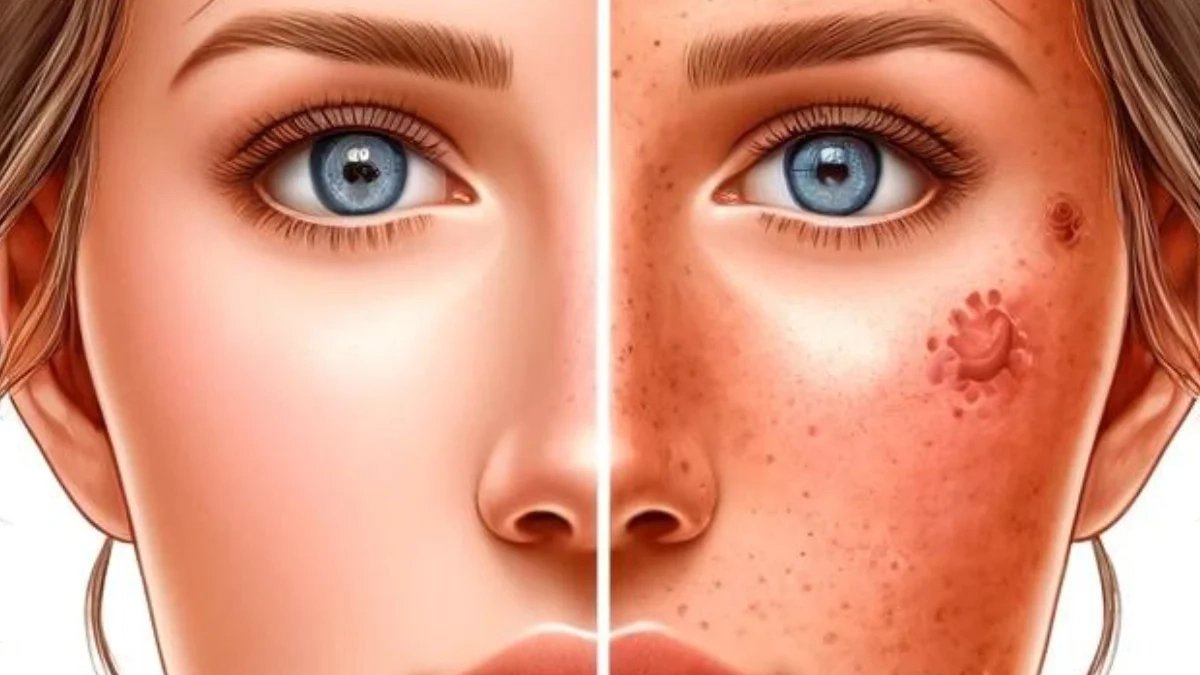

Symptom Check
Are you worried about visible pigmentation or interested in achieving a clearer, more even skin tone? Explore our detailed Pigmentation and Freckle Symptom Checklist below to identify common signs of pigmentation. Understanding these signs can help you determine the best treatment options available at our clinic:
Large Patches of Darkened Skin: Look for significant areas where your skin has darkened, which may indicate conditions such as melasma or hyperpigmentation. These patches often appear on areas exposed to the sun but can also develop in less exposed regions.
Spots or Patches: Notice if there are small, localized spots or patches on your skin. These could be freckles, sunspots, or age spots, typically resulting from sun exposure and genetic factors, reflecting concentrated areas of increased melanin.
Discoloration of Areas of the Skin: Any general discoloration or changes in the skin tone should be noted. This can range from slight to more marked changes and might be spread over various parts of the body.
Uneven Appearance of the Skin: An uneven skin tone can often precede the development of more distinct pigmented areas. Early signs include subtle variations in the skin’s natural color that may become more pronounced over time.
If you recognize one or more of these symptoms and are seeking solutions to reduce or eliminate pigmentation, check out the treatment options we offer. At our clinic, we specialize in advanced treatments designed to address and reduce pigmentation effectively, enhancing your skin’s natural beauty and health. Visit our website or contact us directly to learn more about how we can help you achieve a clearer and more even complexion.
Frequently Asked Questions
What is pigmentation?
Pigmentation refers to the coloring of the skin. It occurs when melanin, the natural pigment produced by cells in the skin, is produced in excess due to various factors, leading to dark spots, freckles, melasma, or an overall darker complexion.
What causes pigmentation?
Pigmentation can be caused by several factors, including excessive sun exposure, genetic predisposition, hormonal changes (such as those occurring during pregnancy or through the use of contraceptive pills), certain medications, skin inflammation or injury, and the natural aging process.
How can I prevent pigmentation?
Preventing pigmentation involves protecting your skin from the sun using broad-spectrum SPF sunscreen, wearing protective clothing, and avoiding peak sun exposure hours. Additionally, maintaining a healthy skincare routine, managing hormonal levels, and avoiding known triggers like certain medications can help reduce the risk of developing pigmentation.
What are the treatment options for pigmentation?
Treatment options vary depending on the type and severity of pigmentation but can include topical treatments (such as creams containing hydroquinone, retinoids, or vitamin C), chemical peels, laser therapy, and Intense Pulsed Light (IPL) treatments. It’s important to consult with a dermatologist to choose the treatment that’s right for your specific type of pigmentation.
Is pigmentation permanent?
While some types of pigmentation, like those caused by sun damage, can be lightened with treatment, others, such as those caused by melasma, can be more stubborn and recurrent. Ongoing treatment and preventive measures are often necessary to manage these types of pigmentation effectively.
Can pigmentation be cured naturally?
While natural remedies may help to mildly improve pigmentation, they are typically less effective than professional treatments. Ingredients like licorice extract, vitamin C, and niacinamide can help lighten pigmentation but are usually more beneficial when used in conjunction with medical treatments.
Does diet affect pigmentation?
Yes, diet can influence skin health. Foods rich in antioxidants, such as fruits and vegetables, can help prevent damage that leads to pigmentation. Conversely, certain foods might exacerbate pigmentation for some people, so it’s important to monitor how your diet affects your skin.
How long does it take to see results from pigmentation treatment?
The time it takes to see improvement from pigmentation treatments can vary widely depending on the treatment method and the severity of the pigmentation. Some treatments like laser therapy can show results in a few weeks, while topical treatments may take several months to yield noticeable changes.
Are there any side effects to pigmentation treatments?
Potential side effects depend on the treatment type. Common side effects can include temporary redness, peeling, or irritation. More intense treatments like laser can sometimes result in blistering or changes in skin color. Discussing potential risks with your dermatologist before starting treatment is crucial.
Can pigmentation return after treatment?
Yes, pigmentation can reoccur, especially if the underlying causes, such as sun exposure or hormonal fluctuations, are not managed. Ongoing maintenance treatments and diligent sun protection are essential to prevent pigmentation from returning after treatment.

Pigmentation Myths
Myth: Pigmentation only occurs due to sun exposure.
While sun exposure is a major cause of pigmentation, factors such as hormonal changes, genetics, inflammation, and certain medications can also lead to pigmentation issues. It’s important to consider all potential causes when addressing skin discoloration.
Myth: Pigmentation can be completely prevented.
Although you can take steps to minimize the risk, such as using sunscreen and avoiding direct sunlight, completely preventing pigmentation is not always possible due to factors like genetics and hormonal fluctuations that are beyond control.
Myth: Only people with lighter skin get pigmentation.
Pigmentation affects individuals of all skin tones. People with darker skin can experience hyperpigmentation or hypopigmentation, which may present differently but is equally concerning and treatable.
Myth: Over-the-counter products are enough to treat all pigmentation.
While over-the-counter products can be effective for mild pigmentation, more severe cases often require professional treatments such as chemical peels, laser therapy, or prescription medications. It’s best to consult with a dermatologist to determine the most appropriate treatment.
Myth: Tanning can help even out skin tone and reduce the appearance of pigmentation.
Tanning can actually worsen pigmentation by stimulating the melanocytes to produce more melanin, which can increase the contrast between normal and hyperpigmented skin.
Myth: Pigmentation always fades on its own.
Some forms of pigmentation, such as those caused by acne or mild injury, may fade over time. However, conditions like melasma or deep-set sun spots can persist and may even become permanent if not properly treated.
Myth: Laser treatment can remove pigmentation in one session.
Laser treatments can be very effective in reducing pigmentation, but they often require multiple sessions to achieve optimal results. The number of treatments depends on the type of pigmentation and the individual’s skin type.
Myth: Makeup worsens pigmentation.
Using non-comedogenic and hypoallergenic makeup formulated for sensitive skin does not worsen pigmentation. However, it’s important to thoroughly remove makeup to prevent clogged pores and skin irritation.
How Can We Help?
Laser IPL (Intense Pulsed Light) is a versatile, non-invasive treatment that uses broad-spectrum light to effectively target and reduce skin imperfections such as pigmentation, fine lines, and unwanted hair.
Laser IPL (Intense Pulsed Light) treatment offers a powerful solution for managing pigmentation at FTT Skin Clinics, harnessing the precision of light-based technology to enhance skin clarity and tone.
Targeted Pigmentation Reduction: IPL therapy uses specific wavelengths of light that are absorbed by the pigment (melanin) in the skin. This targeted approach causes the pigment to break down into smaller particles, which are then naturally cleared away by the body. It effectively diminishes the appearance of dark spots, sunspots, and other forms of pigmentation.
Collagen Stimulation: Beyond just addressing pigmentation, IPL promotes collagen production beneath the skin’s surface. The light energy stimulates the deeper layers of skin, encouraging new collagen formation which can improve skin texture and reduce the effects of aging, contributing to a smoother and more even skin tone.
Comprehensive and Customizable: At FTT Skin Clinics, each IPL session is customized to the specific needs of the patient’s skin type and pigmentation issues. Our skilled practitioners adjust the wavelength and intensity of the light to maximize results while ensuring the highest safety standards.
Minimal Downtime: One of the advantages of IPL treatment for pigmentation is its minimal downtime, allowing patients to return to their daily activities shortly after the procedure. It provides a non-invasive, effective option for those seeking to improve their skin’s appearance without the need for more intensive procedures.
By integrating IPL technology into our treatment offerings, FTT Skin Clinics provides a clinically proven method to reduce unwanted pigmentation and enhance overall skin health, helping patients achieve a clearer, more radiant complexion.
Treatment Time
30 Minutes
Visible Results
Straight Away
Full Recovery
24 Hours
Duration
Treatment Plan
Sensitivity Time
24 Hours
Anaesthetic
-
Back to Work
Immediate
No. of Treatments
Monthly
Targeted treatment facials at FTT Skin Clinics are specially formulated to address pigmentation issues, such as age spots, sunspots, and melasma, by using a blend of effective techniques and high-quality ingredients to even out skin tone and improve overall skin health.
Customized Skincare Solutions
Each facial is customized based on a thorough skin analysis. This personalized approach ensures that the facial treatments directly address pigmentation issues. Ingredients and products used during the facial are selected to specifically target melanin production and help reduce visible discoloration.
Deep Cleansing and Exfoliation
Facials typically begin with a deep cleansing followed by exfoliation, which helps remove dead skin cells that contribute to dull and uneven skin tone. By sloughing off the outer layer of dead skin, newer, less pigmented skin cells are brought to the surface.
Brightening Agents
Facials for pigmentation often include brightening agents such as vitamin C, kojic acid, and licorice root extract. These ingredients are known for their ability to lighten hyperpigmentation and promote a more even skin tone by inhibiting the enzymes responsible for melanin production.
Chemical Peels
Depending on the severity of the pigmentation, a mild chemical peel might be integrated into the facial. Chemical peels involve the application of solutions like glycolic acid, lactic acid, or salicylic acid, which work by removing the top layer of the skin to reduce the appearance of deeper pigmentation.
LED Light Therapy
Some targeted facials may include LED light therapy. For pigmentation issues, specific wavelengths of light, particularly green and blue light, can help break down melanin clusters to reduce the intensity of dark spots and enhance the skin’s overall appearance.
Hydration and Protection
Hydrating the skin is crucial in any facial treatment. Properly moisturized skin not only looks healthier but is also better equipped to repair itself and generate new, healthy cells. Every pigmentation facial concludes with the application of a broad-spectrum sunscreen to protect the skin from UV radiation, preventing further pigmentation.
Follow-up and Maintenance
FTT Skin Clinics ensure that each client leaves with a follow-up plan and recommendations for at-home skincare to maintain and enhance the results of the facial. Using targeted products at home helps sustain the effects of the professional treatment and prevents new pigmentation from forming.
Consultation and Assessment
Before the treatment begins, a detailed consultation assesses the type of pigmentation and its underlying causes. This assessment guides the selection of treatment modalities and skincare products used during the facial, ensuring they are effective for the specific type of pigmentation present.
These targeted treatment facials are a core part of managing pigmentation at FTT Skin Clinics, offering clients a comprehensive approach that not only treats existing discoloration but also promotes healthier, more resilient skin.
Treatment Time
30 Minutes
Visible Results
Straight Away
Full Recovery
24 Hours
Duration
Treatment Plan
Sensitivity Time
24 Hours
Anaesthetic
-
Back to Work
Immediate
No. of Treatments
Monthly
Carbon Laser Facial, also known as the “Hollywood Peel,” is an innovative laser treatment available at FTT Skin Clinics that effectively addresses pigmentation issues such as sun spots, age spots, and uneven skin tone.
The treatment begins with the application of a layer of liquid carbon to the face. This carbon acts as a photoenhancer, deeply penetrating the pores of the skin. The carbon absorbs contaminants and when exposed to the laser, it enhances the laser’s ability to target pigmentation.
Once the carbon is settled, a Q-switched laser is used to heat and cause an implosion of the carbon particles. The laser light is highly attracted to the carbon particles, and when the laser passes over the area, it destroys the carbon, taking dead skin cells, contaminants, and oil with it.
The thermal energy of the laser also targets melanin clusters in the deeper layers of the skin, effectively breaking down pigmentation. This process helps in fading dark spots and promoting a more even skin tone. The heat induced by the laser also promotes collagen production and rejuvenates the skin.
The heat from the laser also helps to reduce the size of the pores and stimulates collagen renewal. This leads to an overall improvement in skin texture and firmness, helping to smooth out any irregularities and giving the skin a more refined appearance.
The Carbon Laser Facial is known for its speed and comfort, typically requiring only about 20 minutes to complete. The procedure is painless, and most clients describe the sensation as a light tingling or a mild snap with each laser pulse.
One of the significant advantages of the Carbon Laser Facial is the lack of downtime. Clients can immediately return to their normal activities, making it an ideal treatment for those seeking a quick solution for pigmentation without any recovery time. Results are visible immediately after the treatment, with skin looking more radiant and even-toned.
The Carbon Laser Facial is suitable for all skin types and is particularly effective for oily skin and skin prone to bacterial build-up. The treatment can be adjusted to suit individual skin types and concerns, ensuring safety and effectiveness.
Often, the Carbon Laser Facial is used in conjunction with other skin treatments at FTT Skin Clinics to enhance overall results. It can be part of a comprehensive skin care regimen tailored to treat pigmentation while also addressing other skin concerns like acne, fine lines, or wrinkles.
At FTT Skin Clinics, the Carbon Laser Facial stands as a cutting-edge option for clients seeking to reduce pigmentation and achieve clearer, brighter skin. This treatment is celebrated not only for its effectiveness in treating pigmentation but also for enhancing the overall health and appearance of the skin.
Treatment Time
30 Minutes
Visible Results
Straight Away
Full Recovery
24 Hours
Duration
Treatment Plan
Sensitivity Time
24 Hours
Anaesthetic
-
Back to Work
Immediate
No. of Treatments
Monthly
Polynucleotides are a groundbreaking treatment that leverages natural DNA sequences to rejuvenate and restore skin, enhancing its elasticity, hydration, and overall youthful appearance.
Polynucleotides treatment is highly effective for those dealing with pigmentation, thanks to its advanced, regenerative properties that focus on cellular rejuvenation and skin repair. Here’s how polynucleotides are particularly well-suited for managing pigmentation at FTT Skin Clinics:
Deep Cellular Regeneration: Polynucleotides, derived from natural sources like salmon DNA, are known for their ability to stimulate the skin’s regenerative processes at a cellular level. This treatment enhances the natural repair mechanisms of the skin, which can help in reducing pigmentation by promoting the replacement of damaged, pigmented cells with new, healthy cells.
Hydration and Tissue Repair: Treatments with polynucleotides boost skin hydration significantly, which is crucial for maintaining the health of the skin barrier. This increased hydration helps to even out the skin tone and improves the overall texture of the skin, making it appear smoother and more uniform.
Anti-Inflammatory and Brightening Effects: Polynucleotides have anti-inflammatory properties that can reduce skin inflammation, a common precursor to pigmentation issues such as post-inflammatory hyperpigmentation. Moreover, by enhancing cellular health and turnover, polynucleotides indirectly contribute to the lightening of pigmented areas, leading to a more even complexion.
Personalized Treatment Plans: At FTT Skin Clinics, every polynucleotide treatment is tailored to the individual’s specific skin needs. Our comprehensive approach begins with a detailed skin assessment to determine the most effective treatment protocol based on the type and extent of pigmentation. This personalized strategy ensures optimal results, targeting pigmentation at its source and preventing future occurrences.
By utilizing polynucleotides for pigmentation, FTT Skin Clinics offers a cutting-edge solution that not only addresses the cosmetic aspects of skin discoloration but also improves the skin’s overall health and resilience. This approach ensures sustained results, leaving your skin looking brighter, clearer, and more rejuvenated.
Treatment Time
30 Minutes
Visible Results
3-4 Weeks
Full Recovery
Immediate
Duration
3-4 Months
Sensitivity Time
2 Hours
Anaesthetic
Not Avaliable
Back to Work
Immediate
No. of Treatments
Not Avaliable
Hydrofacial is a multi-step facial treatment that gently cleanses, exfoliates, extracts impurities, and hydrates the skin using water-based solutions and suction, leaving it refreshed, nourished, and glowing.
The HydraFacial treatment is also immensely beneficial for those battling pigmentation, thanks to its gentle, non-irritating method that focuses on hydration and skin rejuvenation. Here’s how the HydraFacial is perfectly suited for managing pigmentation:
Deep Cleansing and Gentle Exfoliation: Beginning with a lactic acid cleansing solution, the HydraFacial gently exfoliates the skin without harsh scrubbing, making it ideal for skin with pigmentation issues. This mild exfoliation is essential for removing dead skin cells and impurities, which helps lighten hyperpigmented spots and promotes a more even skin tone.
Hydration and Nourishment: Skin affected by pigmentation can also suffer from an imbalance that may lead to dryness or sensitivity. HydraFacial’s hydrating solutions deeply moisturize the skin, helping to restore balance and reduce the likelihood of irritation. Properly hydrated skin supports the reduction of pigmentation by enhancing the skin’s natural renewal process.
Brightening Effects: Specifically formulated to target pigmentation, the HydraFacial includes ingredients like vitamin C and other brightening agents that help reduce the visibility of dark spots and discoloration. These powerful antioxidants aid in evening out skin tone and revitalizing the skin’s appearance.
Personalized Treatment Plans: At FTT Skin Clinics, we value the importance of customization. Each HydraFacial session starts with a thorough skin assessment to ensure the treatment is perfectly adapted to address your specific pigmentation concerns. This personalized approach ensures that the HydraFacial not only rejuvenates and hydrates your skin but also effectively targets and lightens areas of pigmentation, resulting in a clearer, more radiant complexion.


Treatment Time
30 Minutes
Visible Results
Immediate
Full Recovery
Immediate
Duration
1 Month
Sensitivity Time
Not Avaliable
Anaesthetic
Not Avaliable
Back to Work
Immediate
No. of Treatments
Monthly
At Home Pigmentation Care Tips
At FTT Skin Clinics, we empower you with practical tips to manage pigmentation and enhance the effectiveness of your skincare efforts. For those enduring the psychological impact of pigmentation, seeking support and adopting a positive skincare mindset are essential steps towards healing both skin and self-esteem.
Complementing our clinic treatments, we offer a wide range of skincare products designed to enhance and prolong the effects of your professional sessions. Our experts can recommend products tailored to your skin type, ensuring a seamless transition between clinic treatments and at-home care.
Your At-Home Skincare Routine for Pigmentation
We believe in empowering you with the knowledge and tools for effective at-home skincare. Our specialists provide guidance on incorporating at-home treatments into your routine, ensuring continuity between clinic visits.
At FTT Skin Clinics, our commitment extends beyond the clinic doors. We are dedicated to supporting you at every step, from in-depth skin analyses to personalized treatments and ongoing skincare guidance. Discover the transformative potential of our treatments and embrace the journey to clear, radiant, and healthy skin. Break free from the cycle of pigmentation with our evidence-based treatments and dedicated support, guiding you towards an even-toned, confident complexion.
Reflecting on personal experiences with pigmentation and treatment journeys can offer encouragement to others navigating the complexities of skin discoloration, fostering a supportive and understanding community. Feel free to share your pigmentation journey with us to have a positive impact!
Use a High SPF Sunscreen Daily:
Sun exposure can exacerbate pigmentation, making it crucial to use sunscreen with at least SPF 30 every day, even when it’s cloudy. This helps prevent existing pigmentation from darkening and new spots from forming. Consider using the FTT Pigment Perfector Range, which includes sun protection options suitable for pigmented skin.
Incorporate Vitamin C into Your Routine:
Vitamin C is a potent antioxidant that helps brighten the skin and reduce the appearance of dark spots. It also offers protection against sun damage, which can lead to pigmentation. A vitamin C serum each morning before sunscreen can provide a protective antioxidant layer.
Use Retinoids at Night:
Retinoids are effective in treating pigmentation by speeding up cell turnover, helping to fade dark spots and improve skin texture. The Obagi Nu-Derm Kit contains formulations with retinoids tailored to help with pigmentation while rejuvenating the skin.
Include a Gentle Exfoliator:
Exfoliating 2-3 times a week with a gentle exfoliant can help remove dead skin cells and allow active ingredients to penetrate more effectively. Be cautious not to over-exfoliate, as this can irritate the skin and worsen pigmentation.
Apply a Skin-Brightening Cream:
Products containing ingredients like hydroquinone, kojic acid, or niacinamide can help lighten hyperpigmentation. The Obagi Nu-Derm Kit and FTT Pigment Perfector Range offer options that include these effective brightening agents.
Stay Hydrated and Maintain a Healthy Diet:
Keeping your skin hydrated with a good moisturizer and drinking plenty of water can improve skin health, which is crucial for repairing pigmentation. Additionally, a diet rich in antioxidants, like fruits and vegetables, can protect the skin from damage that leads to pigmentation.
Psoriasis
What is Psoriasis?
Psoriasis is a chronic, non-contagious skin condition characterized by an accelerated cycle of skin cell growth. This rapid proliferation results in the formation of thick, red, scaly patches on the skin’s surface. Affecting millions globally, psoriasis is not merely a cosmetic concern but a serious health issue that can impact a person’s quality of life.
It tends to start in early adulthood however can appear later in adulthood. Those of any age, gender or race can suffer from the skin condition and can either get progressively worse or better with age. Like other skin conditions it can affect the majority of places over the body, some more common than others.
Types of Psoriasis
There are a variety of types of Psoriasis, some more common than others.
- Plaque: 80% off Psoriasis cases.
- Scalp: 45%-56% of Psoriasis Cases.
- Nail: 50% of Psoriasis Cases.
- Guttate, Inverse, Erythrodermic and Pustular Psoriasis.
Plaque Psoriasis: The Most Common Form:
Plaque psoriasis, characterized by raised, red patches covered with a silvery-white buildup of dead skin cells, is the most common type. These plaques often cause itching and discomfort.
Guttate, Inverse, and Other Varieties:
Other types include guttate psoriasis, marked by small, dot-like lesions, inverse psoriasis affecting folds of the skin, and pustular psoriasis, which involves pus-filled blisters.
Symptom Check for psoriasis.
If you’re concerned you may suffer from the skin concern, take our system check below:
- Rashes – Depending on person this can vary in characteristics from patches to scaling spots covering the majority of the body.
- Grey & silver scaling – This can appear in purple tone or pink/red depending on the skin tone.
- Dry, cracked skin – This can also bleed in more severe cases.
- Itching & tenderness.
The symptoms of psoriasis vary depending on the type but commonly include red patches of skin covered with thick, silvery scales, dry or cracked skin that may bleed, and itching or soreness. Psoriasis is often confused with eczema or dermatitis. However, its well-defined borders and the presence of thick scales can help in its identification.
How can we help?
Although the skin condition cannot be cleared or cured, Psoriasis can be managed and controlled when flare up’s occur or to help prevent. As a medical skin care provider, we offer a full complimentary initial skin analysis with our medical skin experts to begin your skin health journey to help your Psoriasis. We will assess, diagnose, treat and prescribe you through your full treatment plan, as well as reviewing your skin concerns progress. Psoriasis can be controlled with a combination of in clinic treatments and a home products.
In Clinic Treatments
IPL: IPL Skin Rejuvenation uses high powered computer controlled flash gun to deliver broad spectrum pulses of light. This treatment stimulates the skin to naturally regenerate whilst boosting collagen production.
LED Light Therapy: Incorporating professional-grade LED Light Therapy offers skin rejuvenation, reduces inflammation, breakouts, post inflammatory scarring as well as improving your overall skin health quality.
Calecim: Enhance your skin’s healing capacity with Advanced Stem Cell Technology, stimulating, repairing and regenerating damaged skin. Calecim professional serum can be in-cooperated into your Bespoke Treatment plan to help with skin regeneration and restoration.
At Home Treatment Plans
Your at home treatment plan is the basis to great skin health with long lasting results. At FTT we offer our Expert Obagi Skin Prescription Service to prescribe you with the right skin medication in more severe diagnoses cases, including a variety of topical creams.
Hyperhidrosis
FTT Skin Clinics – Hyperhidrosis.
Hyperhidrosis otherwise known as excessive sweating, is a common concern which can effect areas of the body, regardless of age, gender and sex. We sweat when our body needs to cool down. If you are sweating excessively when your body is of normal temperature you may have Hyperhidrosis. Excessive sweating can be uncomfortable and make those self-conscious. Here at FTT Skin Clinics we offer treatment to control and manage your sweating.
Common Areas of Hyperhidrosis.
- Armpits (Axillary Hyperhidrosis).
- Palm of Hands (Palmer Hyperhidrosis).
- Palms of Feet.
Symptom Check.
Are you concerned you may suffer from Hyperhidrosis? Take our Symptom Check below.
- Suddenly begin to sweat more than usual.
- Excessive sweating when your body does not need to cool down (Is of a normal temperature).
- Sweating during the night – Not related to disrupted sleep.
- Excessive sweating in the palms when neither stressed or nerves.
Hyperhidrosis may be a side effect of an underlying health issue. We advise before coming to see us for treatment to check with your GP before.
Hyperhidrosis can affect people not just physically but emotionally, impacting self-esteem and social lives. With the right diagnosis and treatment plan, our skin experts and nurses at FTT are here to help, support and advise you to make those next steps for improved skin health.
What can we do to help?
Here at FTT we offer in an in clinic treatment plan to help you manage and control your Hyperhidrosis.
Injections – Using injections will control and manage your excessive sweating in areas of the armpit and palms of feet and hands. This will control the over-active sweat glands in these common areas and in most cases stop the sweating all together. A non-invasive treatment safe treatment with 0 downtime. Results will start to show 2 to 3 weeks after your first treatment in clinic.
This treatment can improve patients overall physical and emotionally health as you no longer need to be conscious of the discomfort and smell of excess sweating. In some cases the treatment can eradicate the usage and need for deodorants.
Skin Cancer
FTT Skin Clinics – Skin Cancer Awareness.
As part of raising awareness for Skin Cancer, at FTT Skin Clinics we can assist and guide you on how to stay safe in the sun as well as carrying out skin health checks using a variety of specialist equipment in clinics. May is Skin Cancer Awareness Month, a time to highlight the importance of protecting and maintain your skin’s health as well as understanding signs. Please note at FTT we cannot diagnose types of skin cancer but can assist and help you recognise the signs of UV damage as well as guiding you on your self-check process.
How can we help.
By using a variety of specialist technology in clinic as part of your Skin Consultation, our Nurses and experts will guide you through our in clinic Skin Analysis, detecting severity of UV damage as well as any new or existing lesions which appear on the face or body. After your Skin Consultation with us, we will also devise your Bespoke Treatment Plan to help to maintain the best possible health and protection for your skin.
FTT Skin Analysis.
By using a variety of specialist technology in clinic as part of your Skin Consultation, our Nurses and experts will guide you through our in clinic Skin Analysis, detecting severity of UV damage as well as any new or existing lesions which appear on the face or body. After your Skin Consultation with us, we will also devise your Bespoke Treatment Plan to help to maintain the best possible health and protection for your skin.
Dermatoscope.
Our handheld Dermatoscope used in clinics allows for magnified inspection of new or existing lesions which may appear on the skin. By using this as part of your Skin Analysis we can check for any new concerns which may appear, including size, colour and shape. By coming into clinic for this check allows us to assess lesions which may be missed by yourself as well as referral for uncertainties.
Any new lesions or existing lesions which have been diagnosed as non-cancerous can also be removed in clinic with treatments including Plasma Lesion Removal. A non-invasive treatment with effective immediate results.
FTT Skin Protection.
One of the most common skin concerns we see in clinic is UV damage and pigmentation. After your in depth Skin Consultation with Analysis, our Nurses and experts will devise an in clinic and at home treatment plan for you. Don’t forget UVA waves can still penetrate through windows and clouds, this is why it is so important to stay protected all year round Including in all our at home FTT treatment plan.
Melasma
FTT Skin Clinics – Melasma Skin Treatments.
Melasma is common skin concern, more commonly developed in Woman with darker skin tones. Melasma frequently develops due to a change of hormones during pregnancy and after. If your skin is susceptible to tanning, developing pigmentation whilst exposed to the sun, you may be more likely to develop this skin concern. Melasma is commonly recognised as brown/grey patches of pigmentation primarily on the face, but can also appear on the upper lip, bridge of nose, cheeks and the forehead. The skin condition is neither harmful nor painful but appearance of Melasma can bother those affected.
Types of Melasma
- Epidermal – Dark Brown patches with well-defined border.
- Dermal – Light Brown or Bluish Patches with a less defined border.
- Mixed – Most common type of Melasma, characterised with light and dark brown patches and bluish discoloration.
Symptom Check
Are you concerned you may suffer from one of the above types of Melasma? Take our Melasma Symptom Check.
- Discoloured Patches of Skin.
- Triggers to Sun Exposure.
- Skin Inflammation.
- Newly appeared during pregnancy.
- Appears on the cheeks, chin, upper lip, forehead and upper arms.
What can we do to help?
As a medical skin care provider, we offer a full complimentary initial skin analysis with our medical skin experts to begin your skin health journey. We will assess, diagnose, treat and prescribe you through your full treatment plan in clinic and at home, as well as reviewing your skin concerns progress. Our FTT In clinic treatment plans include IPL Skin Rejuvenation and Laser Treatments. Both treatments use a high powered computer controlled flash gun to deliver an intense broad spectrum pulse of light. Both treatments have minimum down time with results proven in 4-6 weeks.
As well as building your bespoke treatment plan in clinic, the basis for great skin health is your at home skin care plan. Combining your at home treatment plan with IPL treatment will maximize your desired skin results. As well as our FTT Skin Ritual depending on the severity of your skin condition, we offer our FTT Expert Skin Prescription Service to prescribe you with the right skin medication in more severe diagnoses cases including Obagi Nu Derm System, & Tretinoin.

